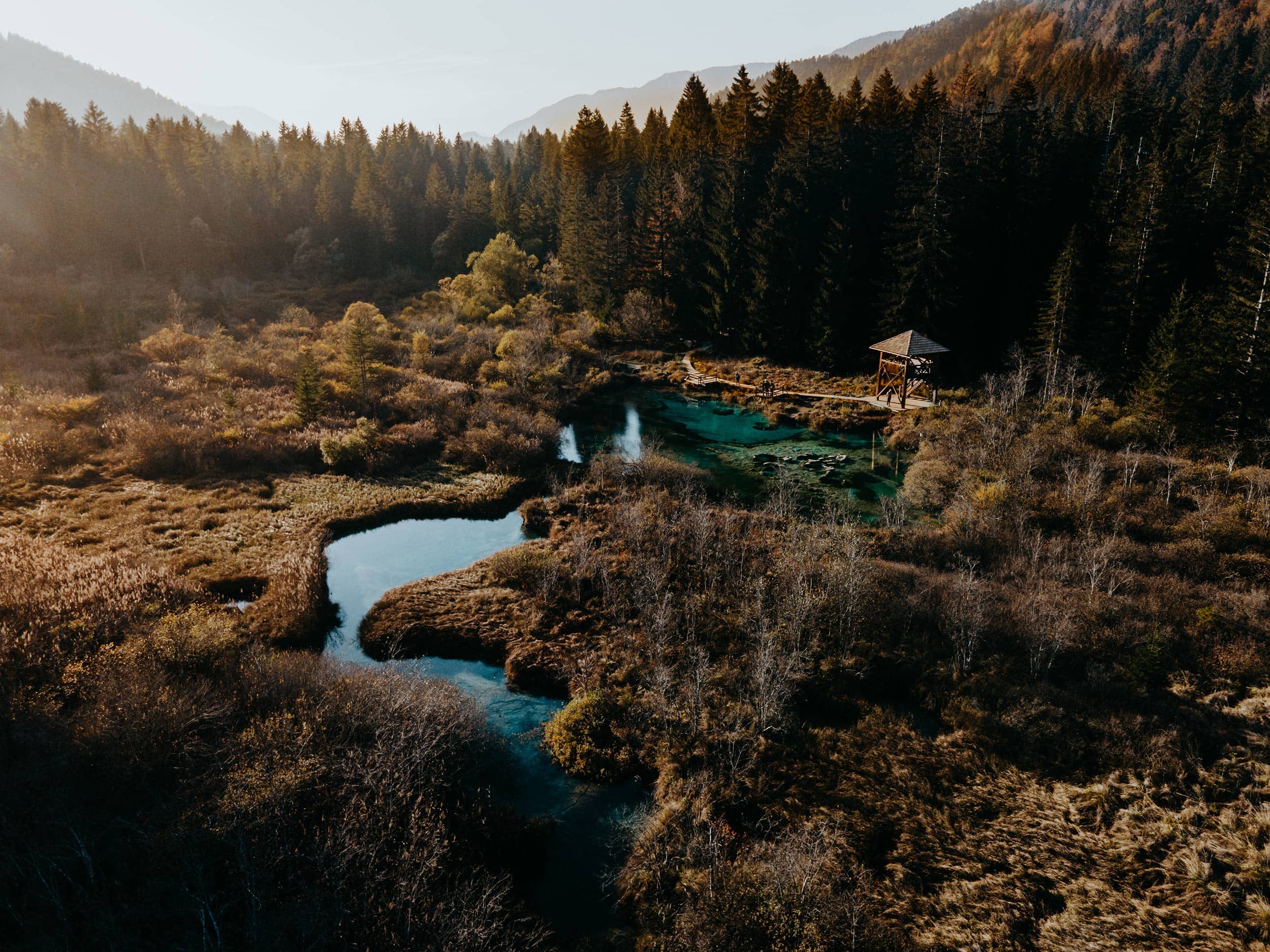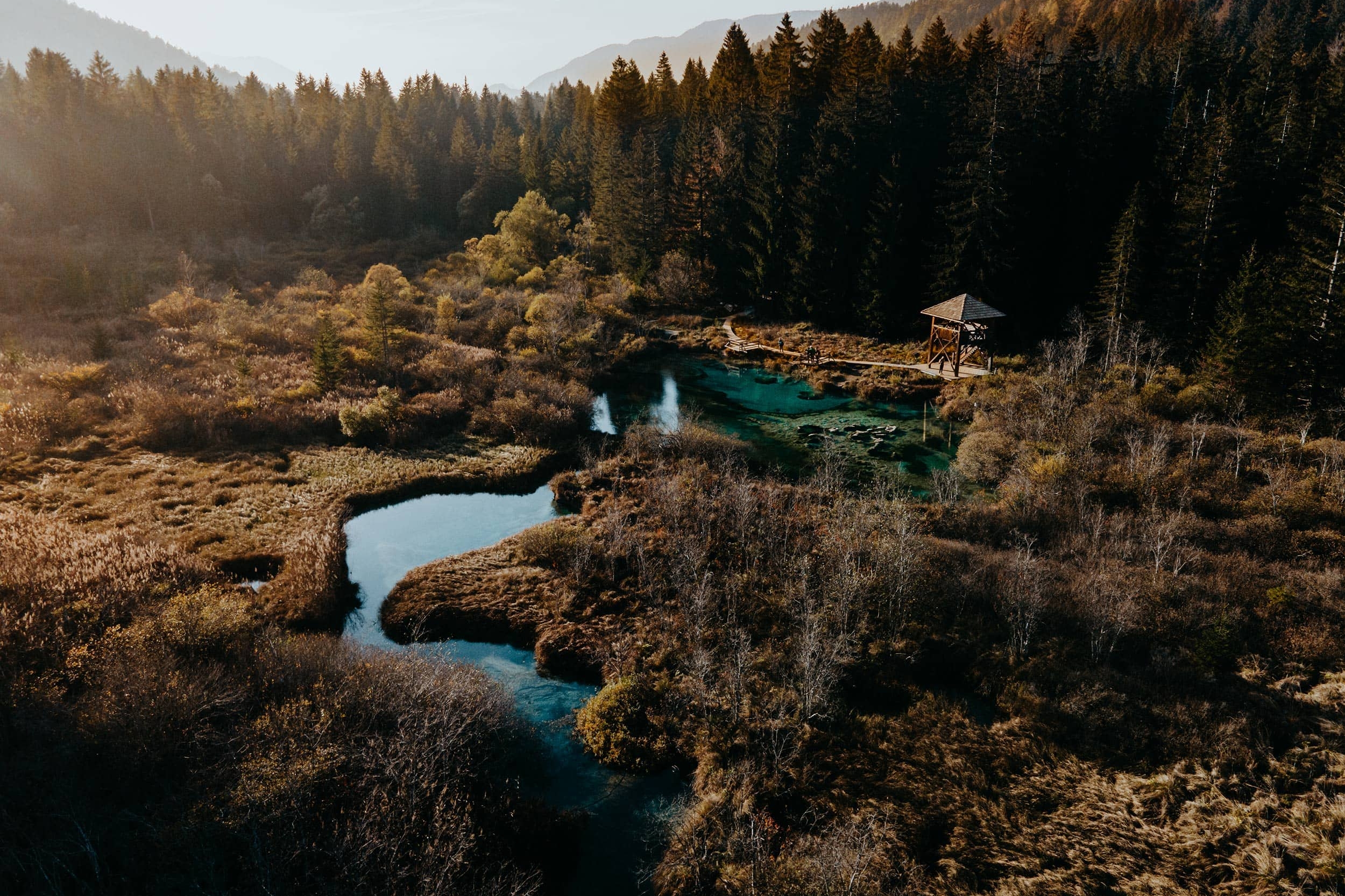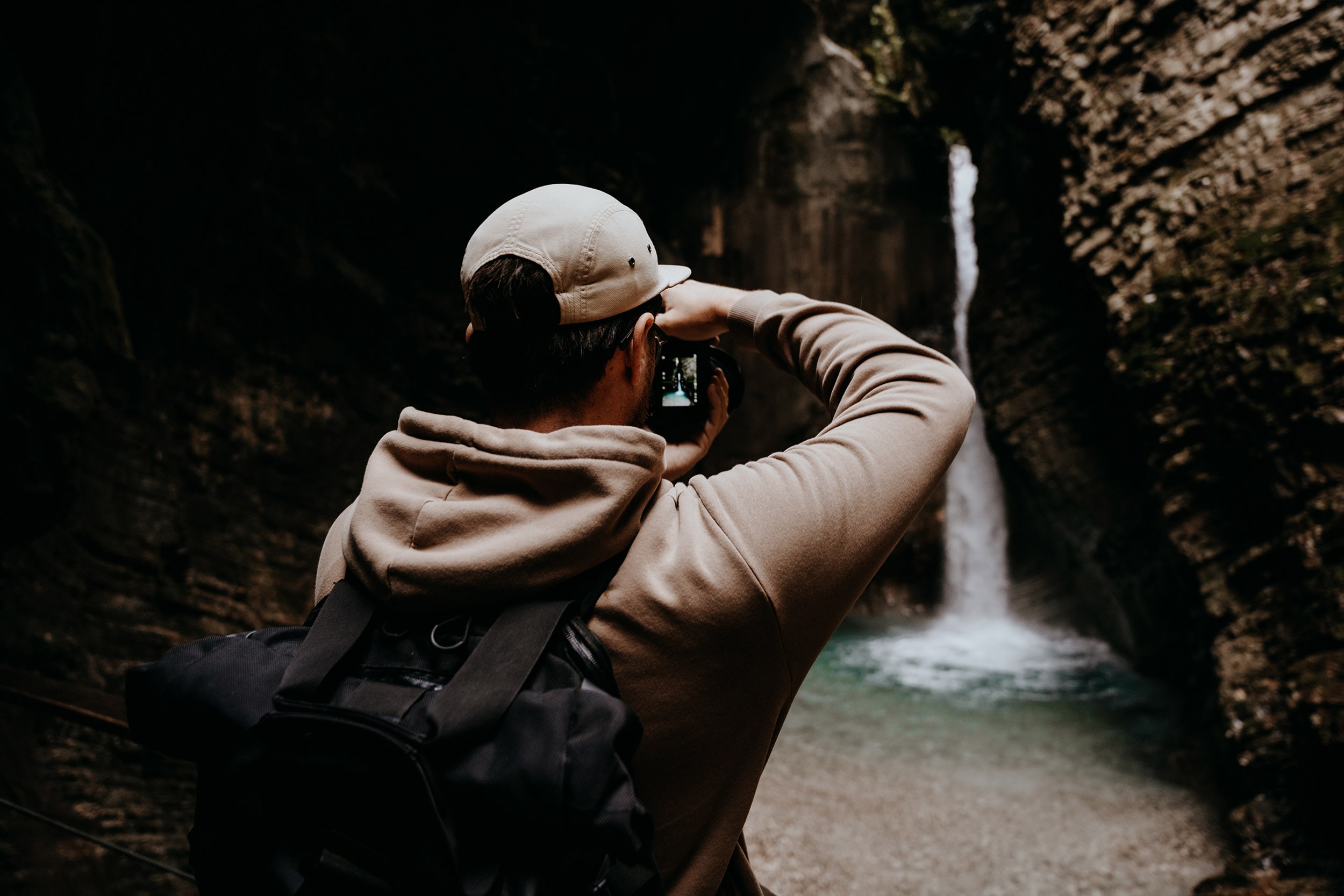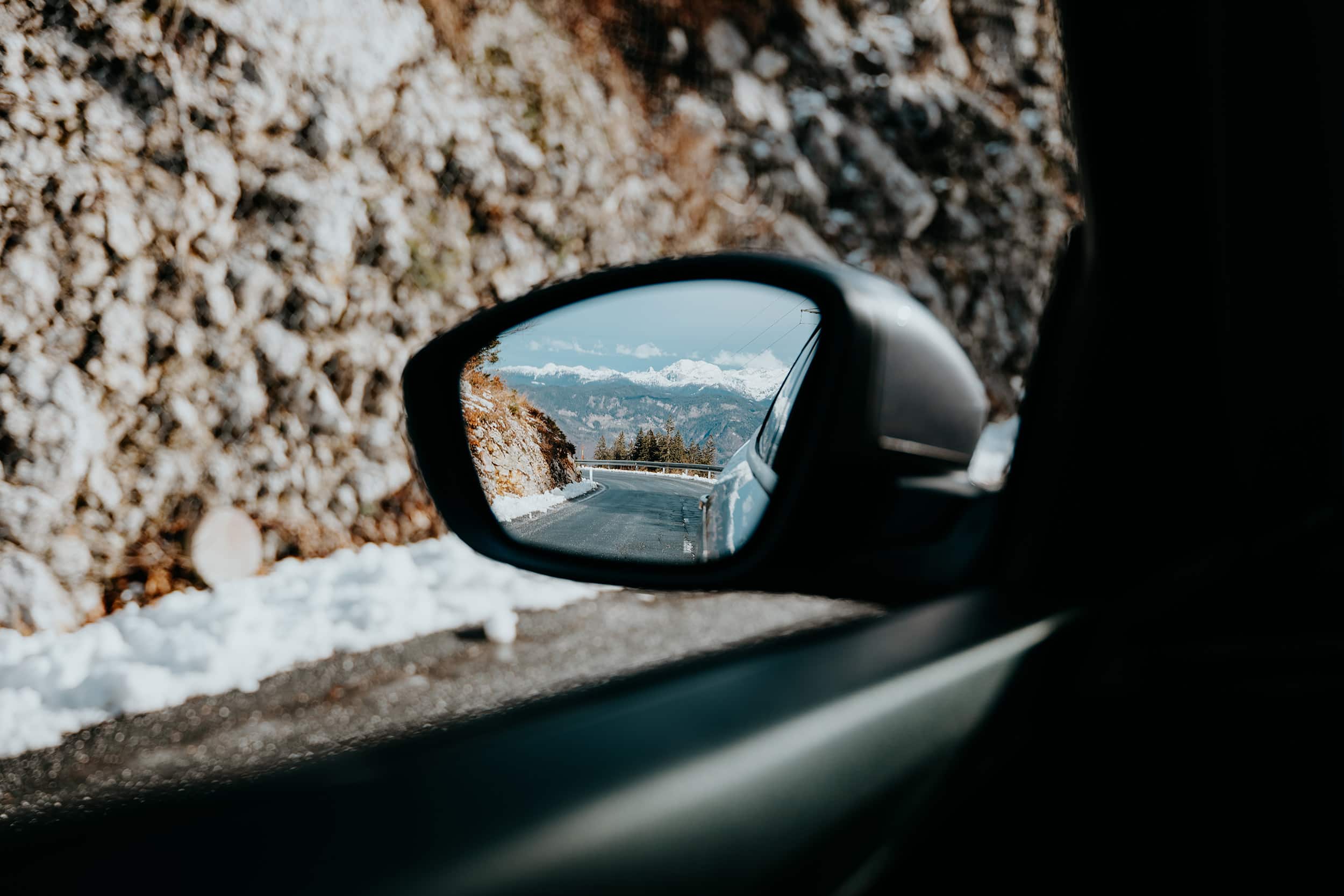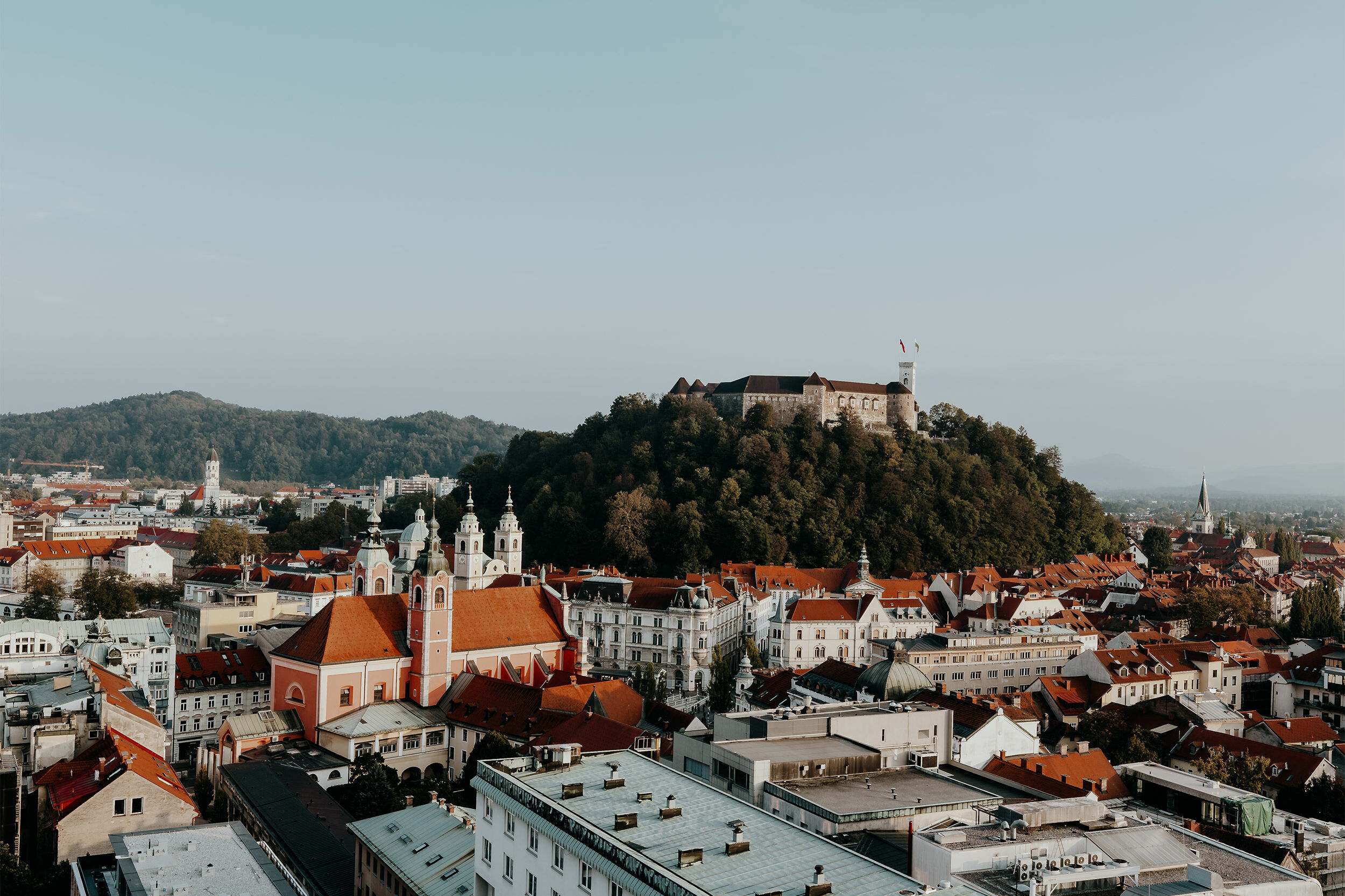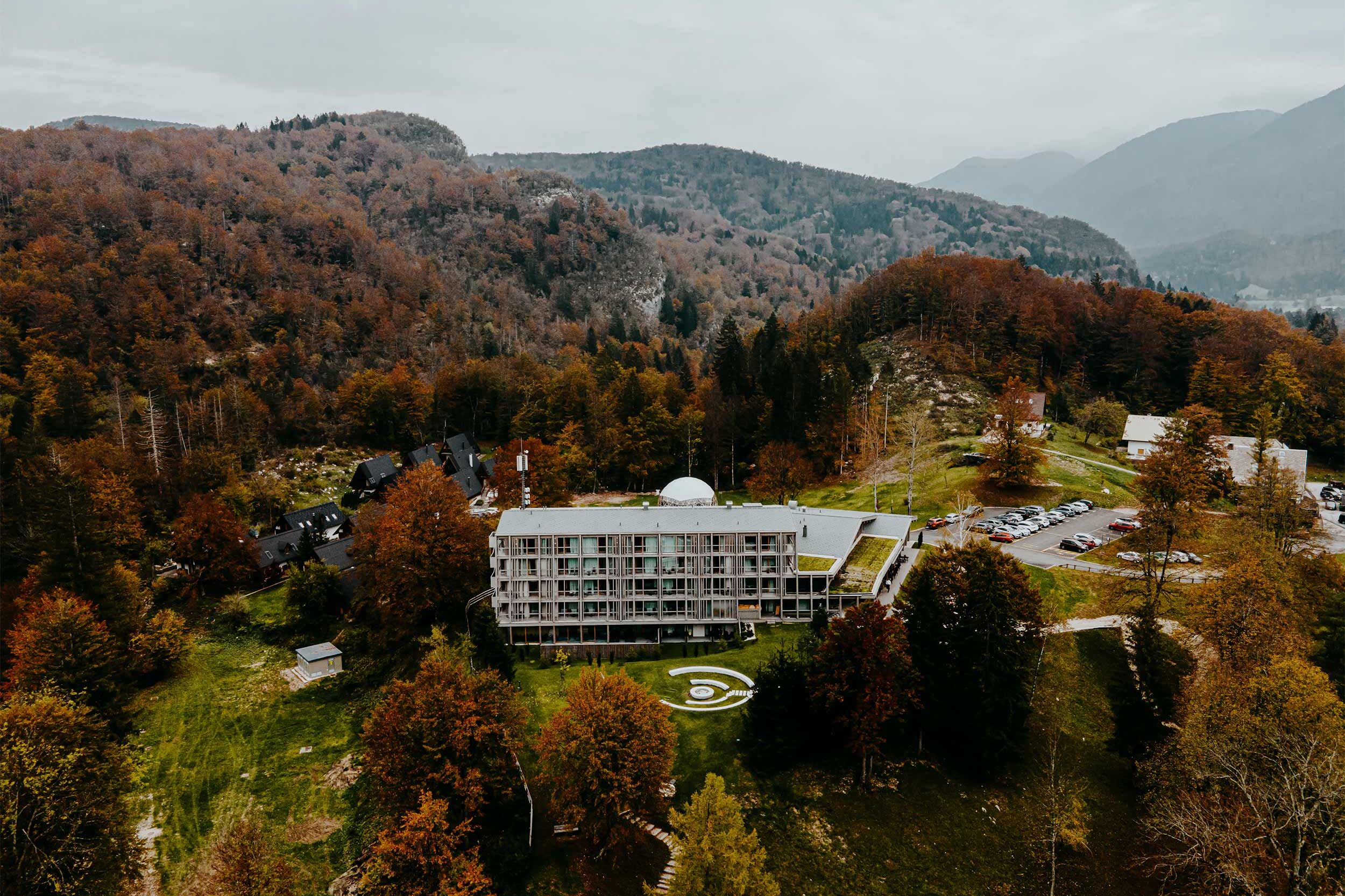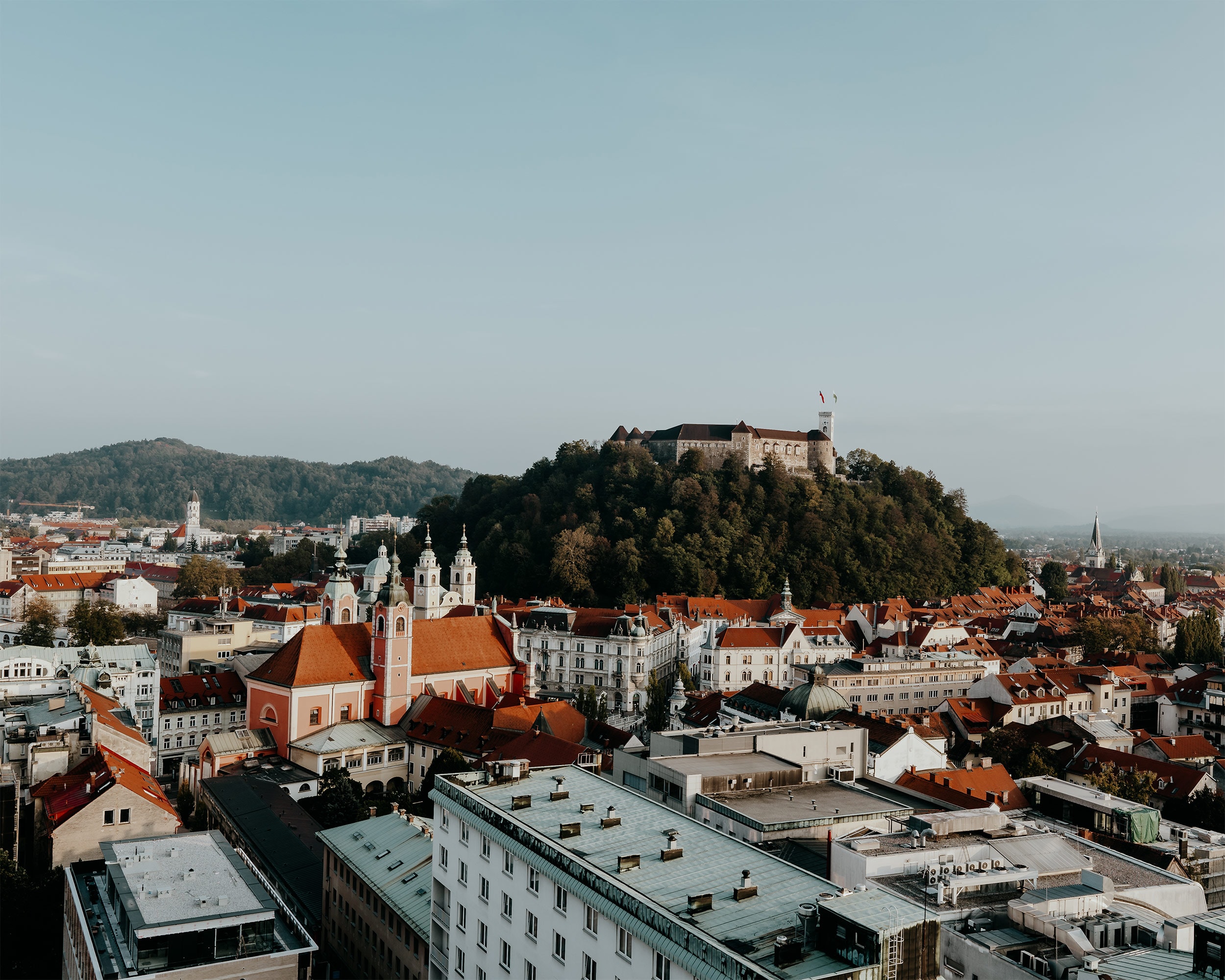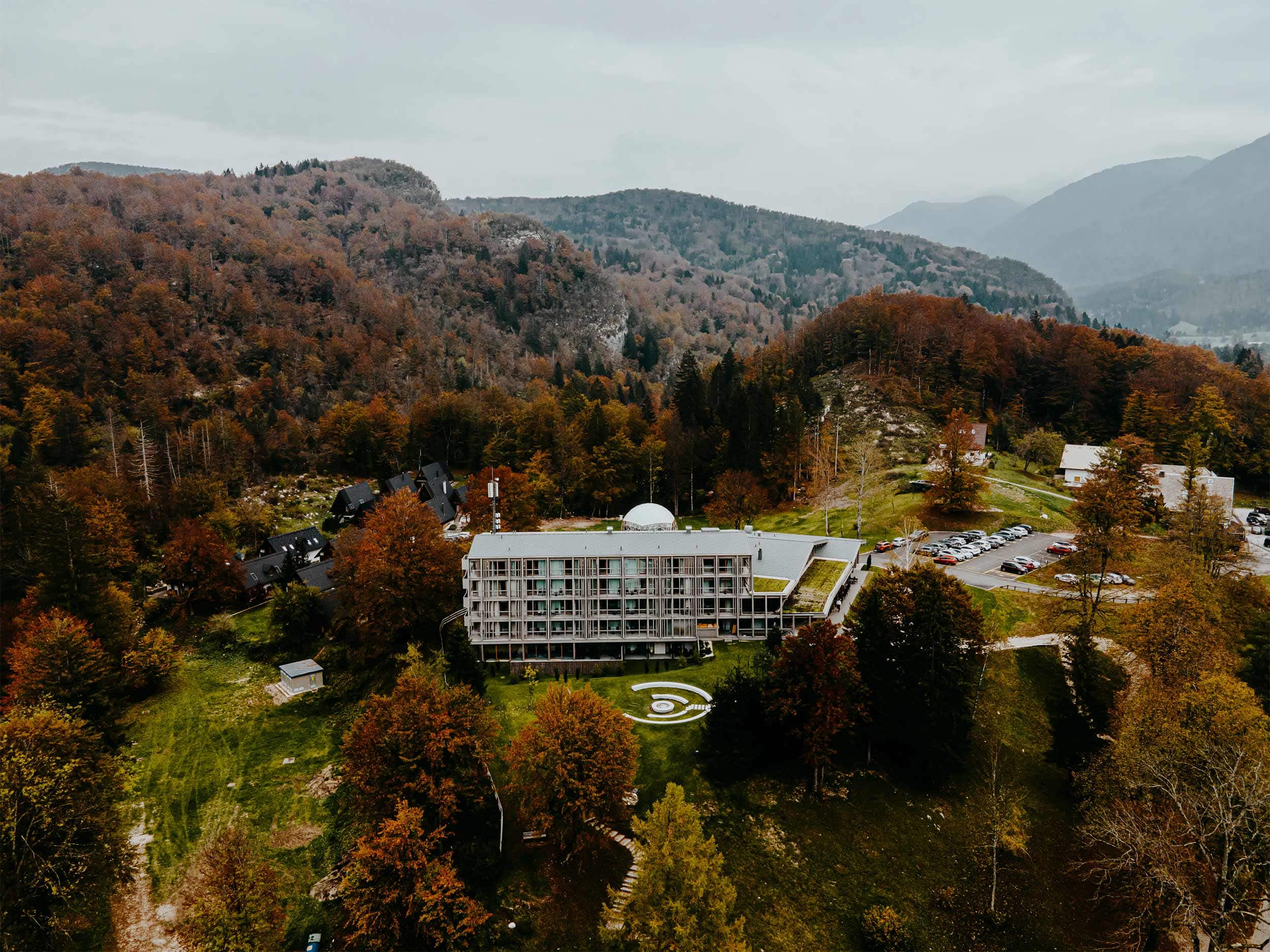A guide to the pristine Zelenci Nature Reserve, Slovenia
Somewhat of a hidden gem among Slovenia’s many natural highlights, the Zelenci Nature Reserve is a pristine wetland area encircling the incredibly stunning Zelenci Lake.
Nestled between Kranjska Gora and the border of Italy, Zelenci is a bit of a blink and you miss it, as it is carefully disguised by the lush vegetation just off road #202 in the direction of Italy.
Though the reserve is relatively compact, this quaint slice of paradise will capture your heart in the blink of an eye, as it provides visitors mesmerizing views of the emerald-green lake and the towering peaks of the Julian Alps in the distance.
On top of that, Zelenci is close to some of Slovenia’s absolute highlights, including the stunning Lake Jasna, the winding roads of the Vrsic Pass, and the notorious Mangart Saddle, making it super easy to incorporate into an adventurous Slovenia road trip itinerary.
It’s a place of unrivalled beauty, and during my visit in the autumn of 2022, I immediately knew I wanted to come back here during the winter months when the pristine snow-covered natural surroundings make for an even more magical scene.
After now having visited Zelenci twice, I’ve curated all the essentials to help you plan and organise your own visit here, including advice on how to get there, where to stay and how to combine it with other Slovenia highlights – enjoy reading!
If you choose to use any of the links on this page, I may receive a small commission at no extra cost to you. By using these links, you’ll have a direct impact on WTSW and my ability to continue to create free insightful travel content for you. If you find any of my tips useful, you can support me by buying a virtual coffee here.
A guide to the Zelenci Nature Reserve in Slovenia
Where is Zelenci Nature Reserve
The Zelenci Nature Reserve is nestled in the foothills of the Julian Alps in the very northwest of Slovenia, about 5 kilometres drive from the popular town of Kranjska Gora.
It is located at the crossroads of Central Europe, as the picturesque area borders with Italy on the west and Austria on the south.
The reserve itself is set within a stunning alpine valley on the northern edge of the Triglav National Park, only just off road #202 in the direction of Italy.
About Zelenci Nature Reserve
Covering roughly 15 hectares of untouched natural splendour, the Zelenci Nature Reserve is well-known for its emerald-green lake and the scenic wetlands surrounding it.
With incredible natural and geological feats, this reserve is home to a wide variety of flora and fauna, including Common Rosefinches, Viviparous Lizards and European Adders to name a few.
For the above reasons, it is highly advised to remain on the path at all times, so don’t think it’s okay to wander off the path to obtain a slightly different perspective of the lake.
Thanks to the combination of the reserve’s phenomenal appearance and the distinctive flora and fauna that is found here, Zelenci was officially declared a nature reserve by the municipality of Jesenice in 1992.
Named after its emerald-green colour (Zelenci meaning green in Slovenian), the eponymous lake is the absolute centrepiece of the reserve, and will not freeze during the colder winter months as the temperature stays pretty constant throughout the year at 6°C.
The reserve itself is relatively compact and is home to a short but scenic boardwalk, which eventually guides you to a scenic observation tower that is nestled on the edge of the lake.
As it’s located in the foothills of the Triglav National Park, the views that are obtained here are truly breathtaking and will leave visitors with an unforgettable outdoor experience.
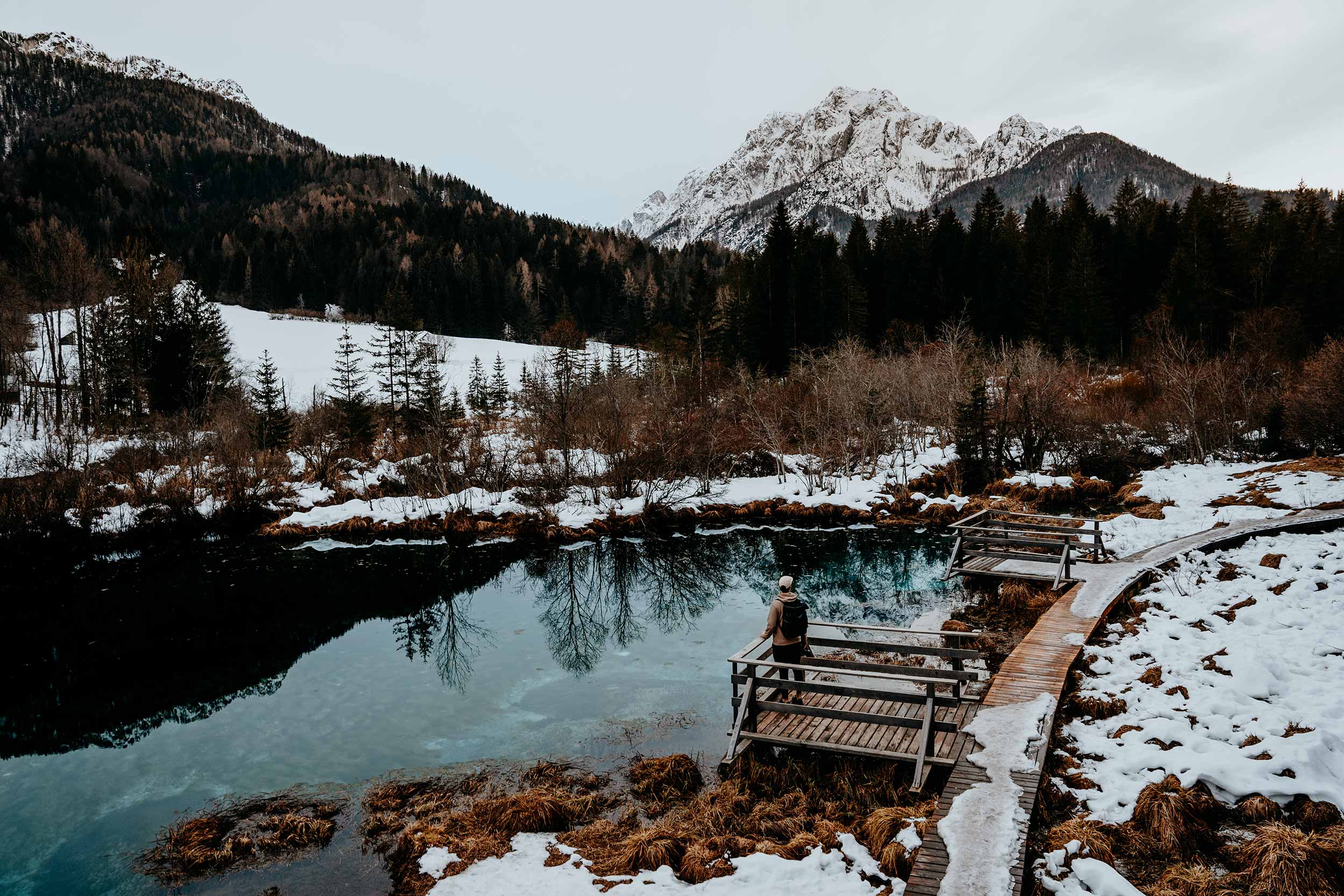
How to get to Zelenci Nature Reserve
Zelenci is impressively easy to visit, especially if you set out on an adventurous road trip in Slovenia (coming soon).
If you’re travelling from Bled, Bovec, Mangart, Vrisc, or Lake Jasna by car, you have to make your way over to Kransjka Gora, before heading west along the #202 road in the direction of Italy.
Once you’ve passed Kranjska Gora, it takes only 5km until you reach the Zelenci Nature Reserve, where you’ll notice a small parking lot on the left side of the main road.
If you’re spending a few days in Kranjska Gora, it’s also completely possible to walk to Zelenci.
From Kranjska Gora, it takes about 1 – 1.5 hours to complete the 5km trail from Kransjka Gora to the reserve’s parking lot.
Since Zelenci is tucked away in the very northwest of Slovenia, public transportation options are limited, with no bus stop close to Zelenci Nature Reserve.
If you’re still keen to take the local bus, the closest bus stop is situated in Podkoren, about 15-minutes walk away from the reserve.
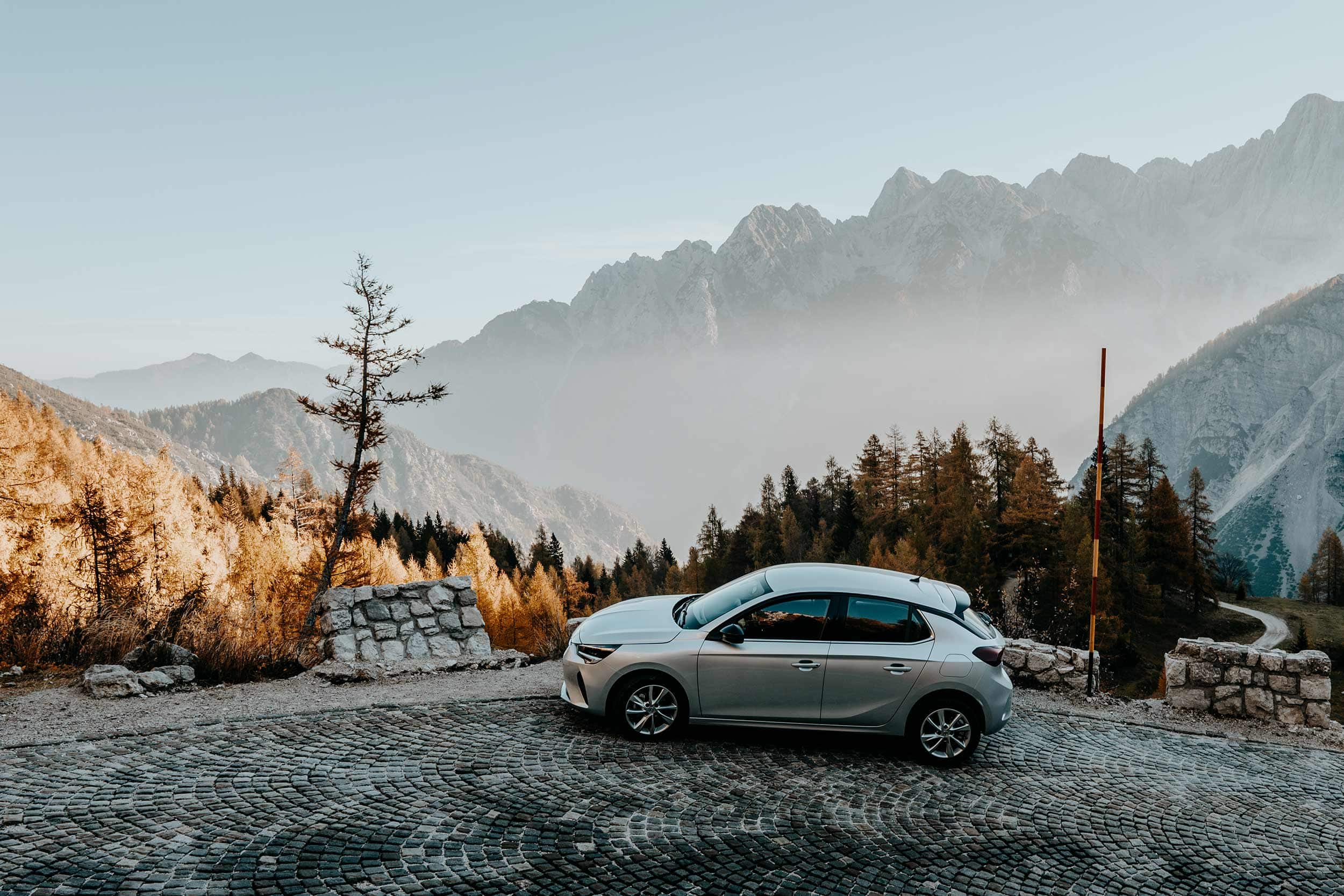
Zelenci Nature Reserve Path
When arriving at the reserve, it’s pretty straightforward to reach the Zelenci lake, as there’s only one walking path between the car park and the lake.
Guiding you through the dense forest of Zelenci, the path is scenic, well-maintained and only 500 metres long, and it should take only 15 minutes before you reach Zelenci Lake.
Once you’re done taking in the spectacular views, you simply follow the exact same path back to the car park.
Since the reserve is pretty well maintained, the path is accessible at any time of year.
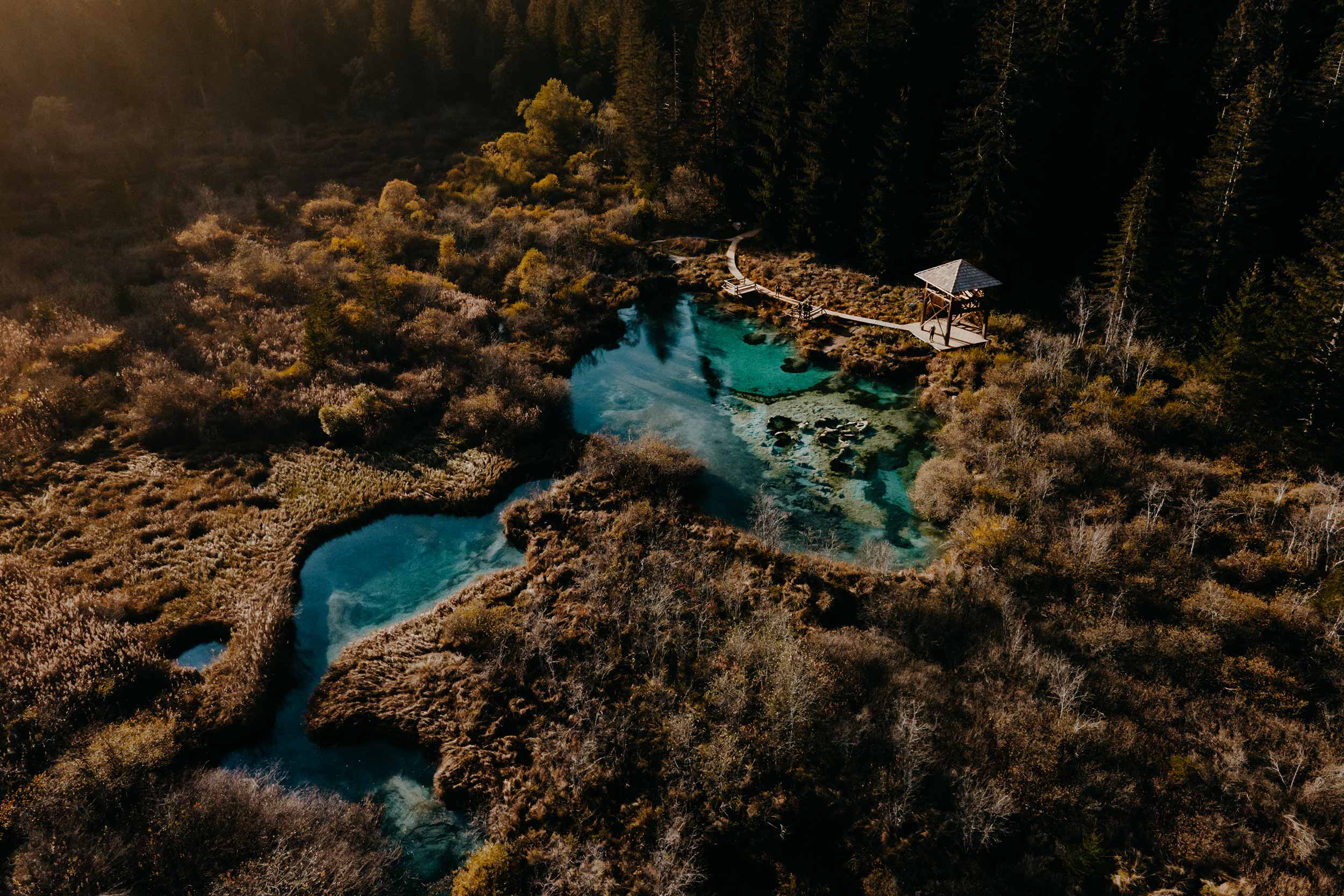
The pristine Zelenci Lake
At the core of the Zelenci Nature Reserve is the utterly stunning Zelenci Lake, a pristine emerald lake that is also referred to as the Zelenci Springs.
Crystal clear, and as tranquil as can be, the lake is truly breathtaking, making it the perfect refuge for a wide variety of impressive water creatures, nesting birds, and even amphibians.
On top of that, the lake is home to an observation tower that provides even more impressive views of Lake Zelenci, not to mention the incredible surroundings; think towering pine trees, lush vegetation, and the snow-topped peaks of the Julian Alps that mirror in the calm waters of the lake.
A moment here is a moment well spent, and if you ask me, Zelenci is one of the absolute highlights on any adventurous road trip through Slovenia.
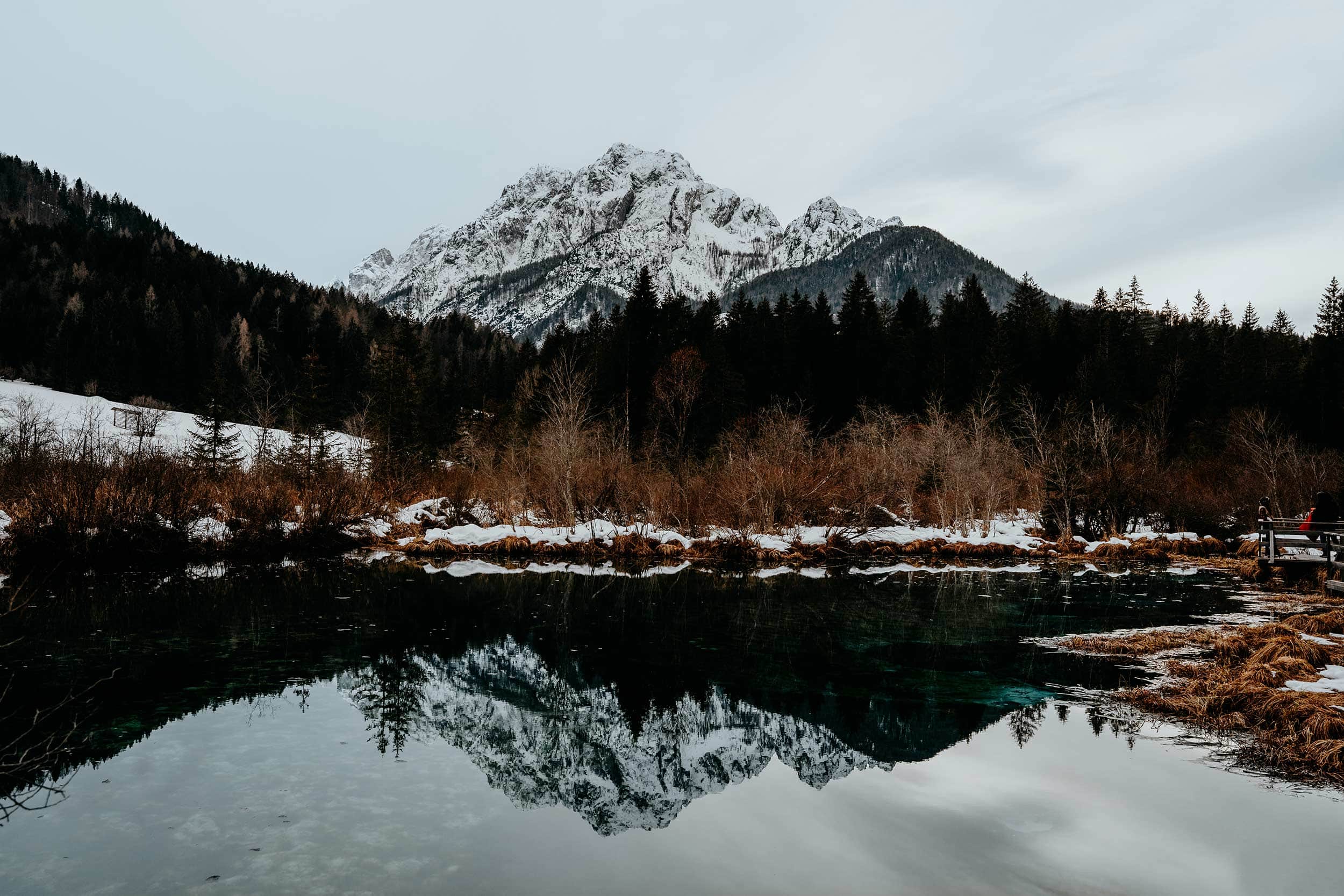
Zelenci Nature Reserve | The essentials
The best time of year to visit Zelenci Nature Reserve
As with most places in Slovenia, Zelenci Nature Reserve is truly stunning at any time of year.
I’ve visited Zelenci Nature Reserve twice now, and have seen it covered in snow during winter, and completely taken over by the golden hues of autumn in fall – both circumstances were exceptionally beautiful and great for photography.
Then there is summer (June to August), which is generally the best time to visit Slovenia given its excellent weather and lengthy days.
However, it is worth noting that Zelenci gets extremely busy throughout the European summer months, so, therefore, I’d personally prefer a visit during the shoulder seasons.
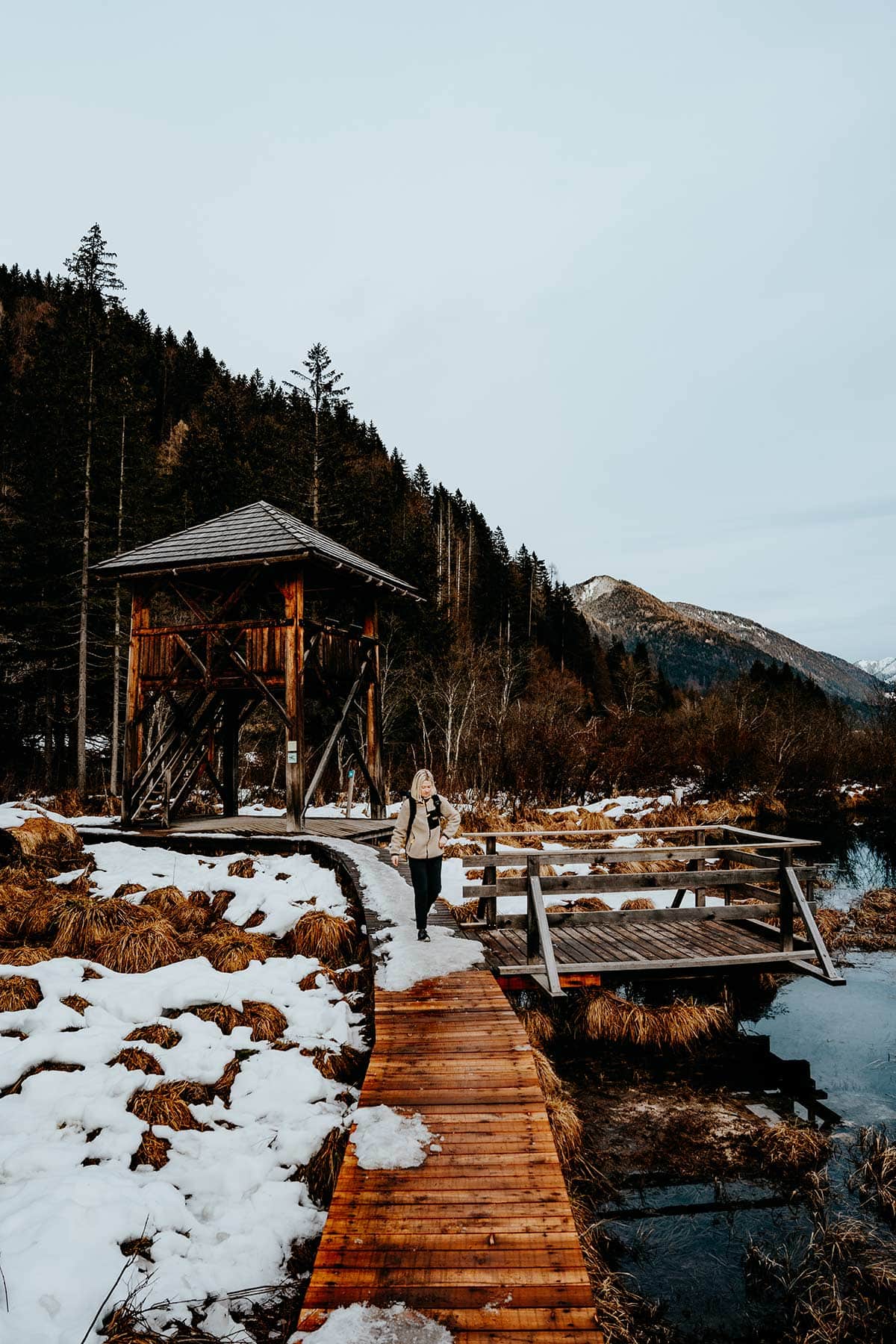
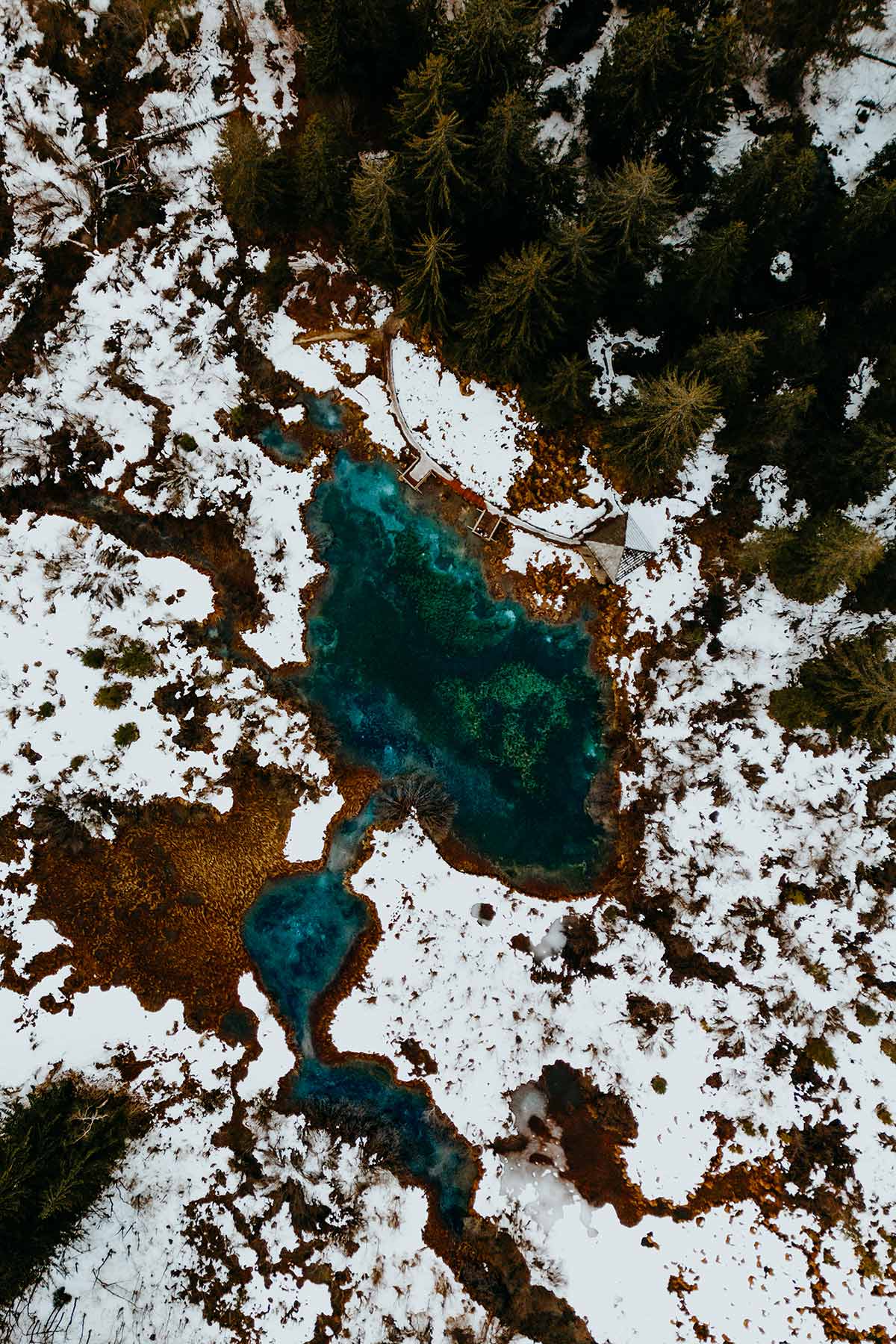
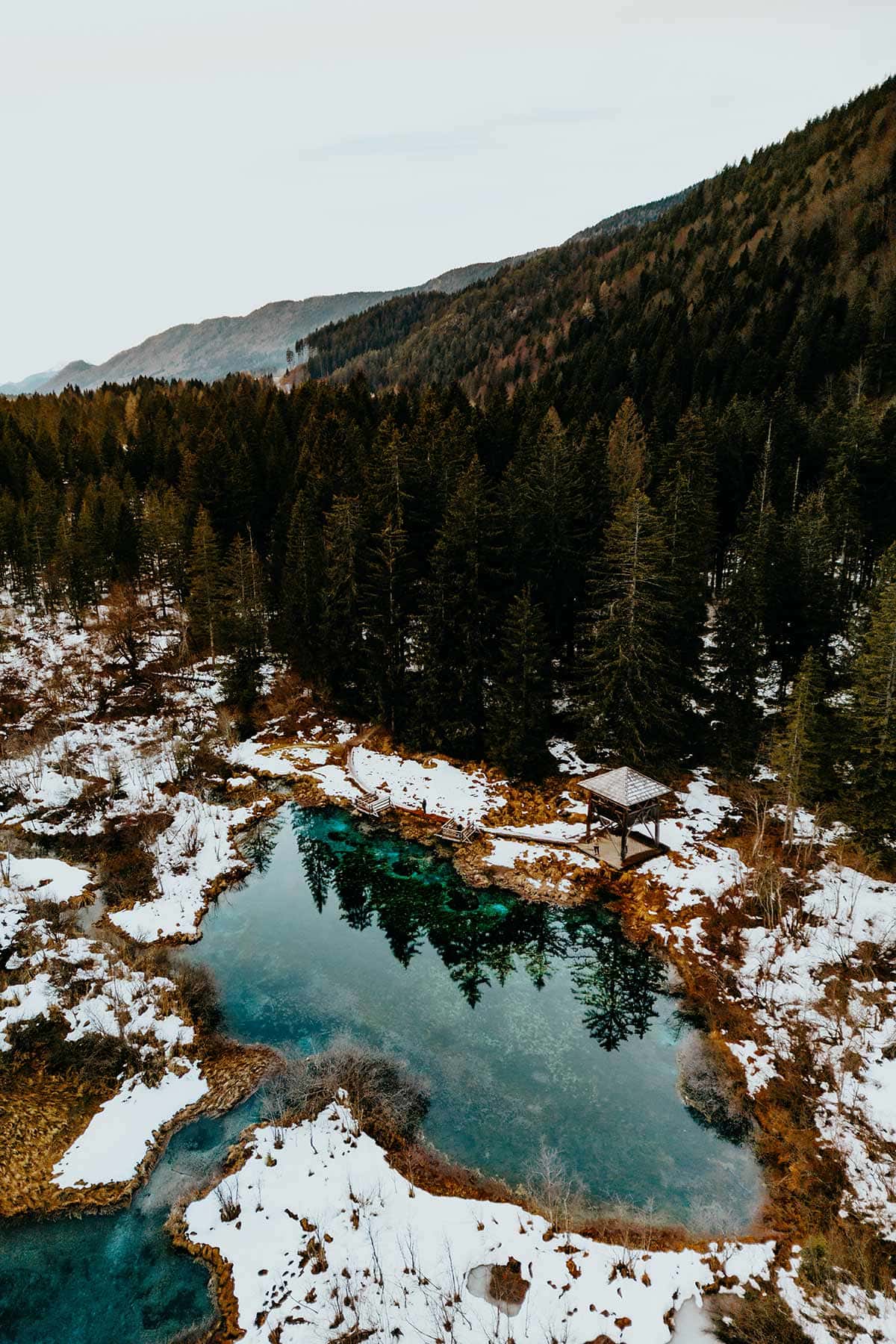
The best time of day to visit Zelenci Nature Reserve
Since Zelenci’s is rapidly increasing in popularity, I would strongly advise arriving at the reserve early in the morning, when it’s a lot less crowded.
Furthermore, the light conditions will also be more in your favour during an early visit, as the gentle morning light transforms the lake into a huge mirror reflecting the stunningly beautiful surroundings of the lake.
To me, the time of day is significantly more important than the time of year when visiting Zelenci, given the best views are acquired if you look towards the west, meaning you get blinded by the sun in the afternoon.
Another thing worth mentioning is that Zelenci becomes pretty busy during the weekends.
I personally visited Zelenci Nature Reserve in the early morning and had excellent light conditions and only a few other people around, which was great for photography.
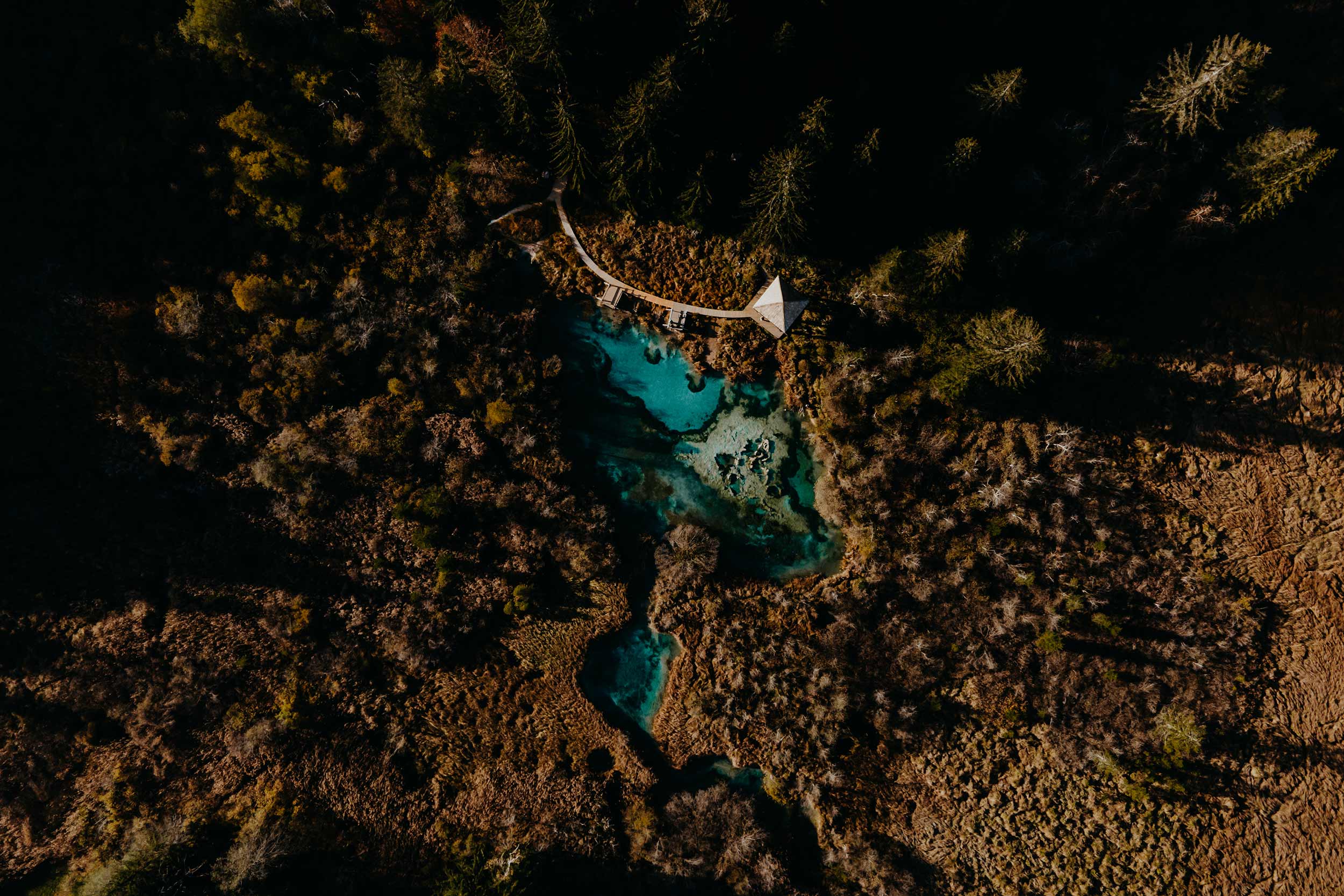
Where to stay in Kransjka Gora
If you’re travelling around Slovenia slowly, I’d suggest spending some time in Kransjka Gora, so you can easily explore Zelenci and other surrounding highlights as a day trip from your base in this quaint little town.
Milka Boutique Hotel | By far the most luxurious option in Kransjka Gora, Milka Boutique Hotel offers an exceptional boutique experience in the heart of the Julian Alps. All rooms are decorated to perfection and offer breathtaking vistas over Lake Jasna.
Triangel Boutique Hotel | Located in a pristine alpine valley just outside Kranjska Gora, the Triangel Boutique Hotel boasts spacious well-designed rooms, a fitness centre, free parking and a pretty good in-house restaurant. Though the price is a little on the higher end at €250 a night, this stunning boutique will easily live up to its price tag. Not completely convinced? Let the superb reviews do the talking here.
Hisa Kosobrin | Easily the best apartment I stumbled on during my research, Hisa Kosobrin is a collection of 6 incredibly stunning apartments only a few minutes away from the centre of Kranjska Gora, giving your overall experience a more intimate vibe. Some apartments come with a sauna, which is a great addition too.
Renting a car in Slovenia
If you’re keen to do an epic road trip in Slovenia, I’d highly recommend sorting out a rental car in advance, so you’ll have all the freedom to visit wherever, whenever suits you.
I always use Rentalcars.com for my car rentals, as they have all the major rental car companies on offer, excellent service, and additional insurance – plus, it’s super easy to find yourself a deal here.
Alternatively, Discover Cars is a great reliable option too.
I’ve also written a comprehensive guide on driving in Slovenia (coming soon), so make sure you give that a read too – you can find it here.
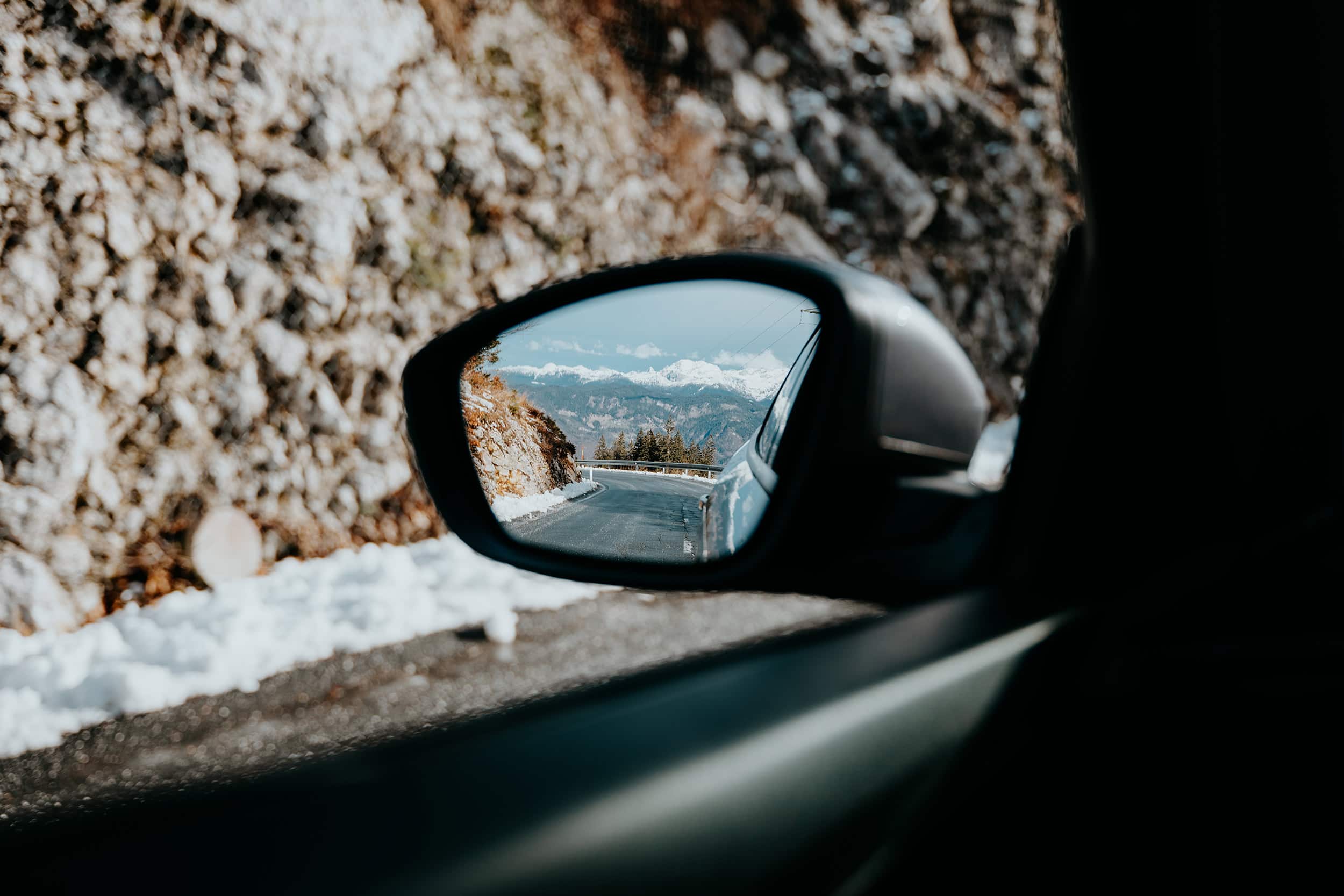
What’s next?
The Zelenci Nature Reserve is situated in one of the most popular areas of Slovenia, so there’s a lot more to be sought out and enjoyed here.
Besides Zelenci, this area is also home to other fascinating highlights, including Lake Jasna, the Vrsic Pass, Mangart Saddle, and the Pericnik Falls to name but a few.
If you’re keen to see how to fit these incredible places into your Slovenia itinerary, I highly recommend checking out my 10-day Slovenia itinerary (coming soon), which is packed with useful advice, first-hand tips, and all the Slovenia travel essentials.
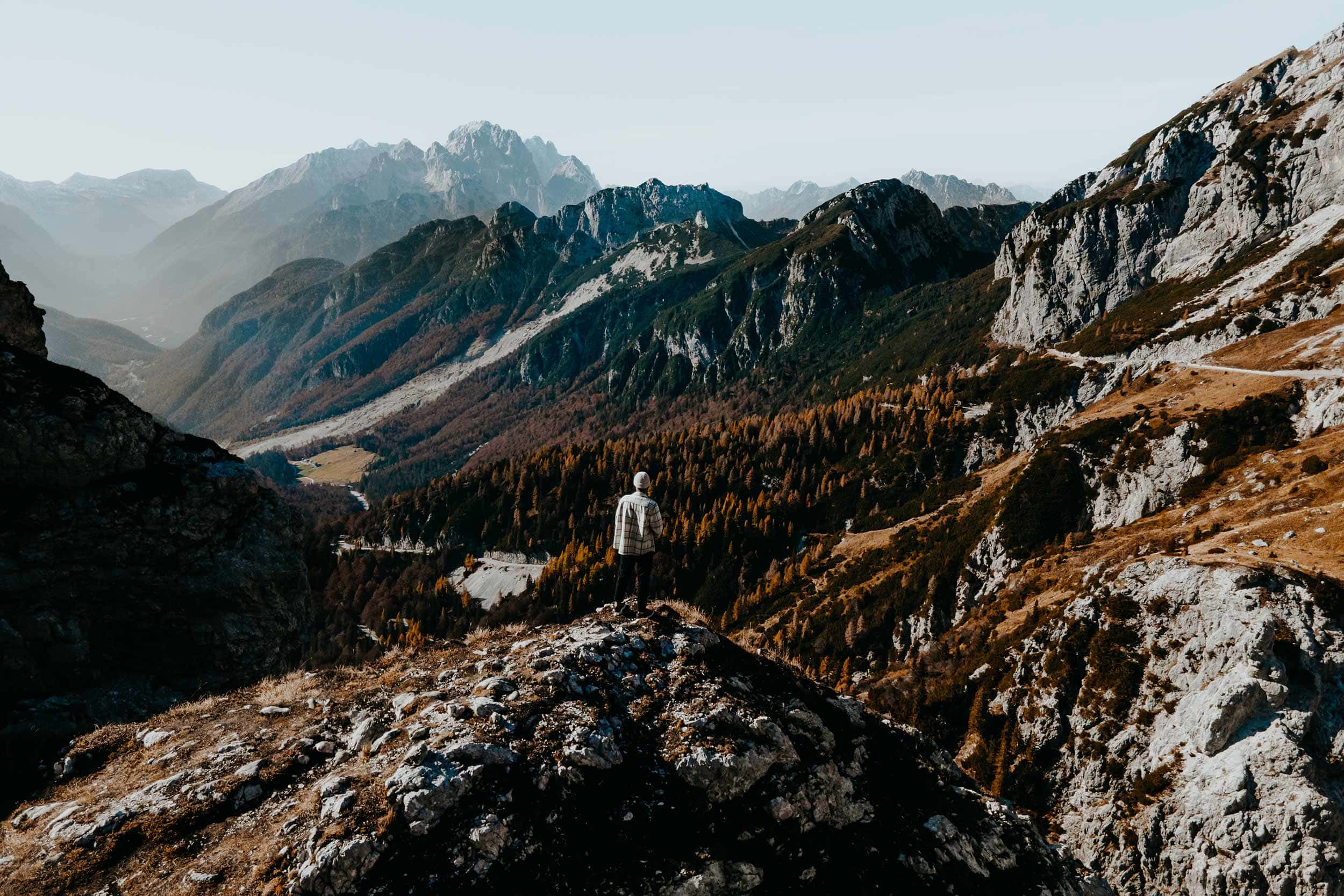
Slovenia travel essentials
Though I wouldn’t necessarily label the Zelenci Nature Reserve as a challenging activity, I do think it’s a smart idea to bring some essentials, especially if you have intentions to combine it with other more adventurous natural highlights in the region.
To help you have a comfortable time here, I’d suggest bringing the following items:
A reusable water bottle | One travel essential that I carry with me at all times is the Grayl Geopress. This reusable water purification bottle allows me to fill up water from almost every water source, making it one of my best investments to date.
A hoodie | Depending on the time of year of course, I advise bringing an extra layer in the form of a hoodie to keep you warm if needed. Since Zelenci is surrounded by forest, this extra layer might come in handy at any given time.
A sturdy pair of sneakers | Though the walk in the Zelenci Nature Reserve is relatively easy, it’s not a bad thing to wear a pair of sturdy trail runners. I often use the New Balance Hierro V7, and I’m pretty satisfied with the grip and comfort they provide me with when I’m out in nature.
A camera | Like most places in Slovenia, Zelenci and its natural features are incredible for hobbyists and professional photographers alike. For that reason, I advise bringing your camera, so you can capture heaps of photos while there. Curious about my photography gear, make sure you see what’s in my camera bag.
Leave no footprints | Slovenia is a slice of untouched natural paradise, and it’s our responsibility to keep it that way. So make sure you expect the location at all times, and bring your trash when wrapping up your time in the Zelenci Nature Reserve.
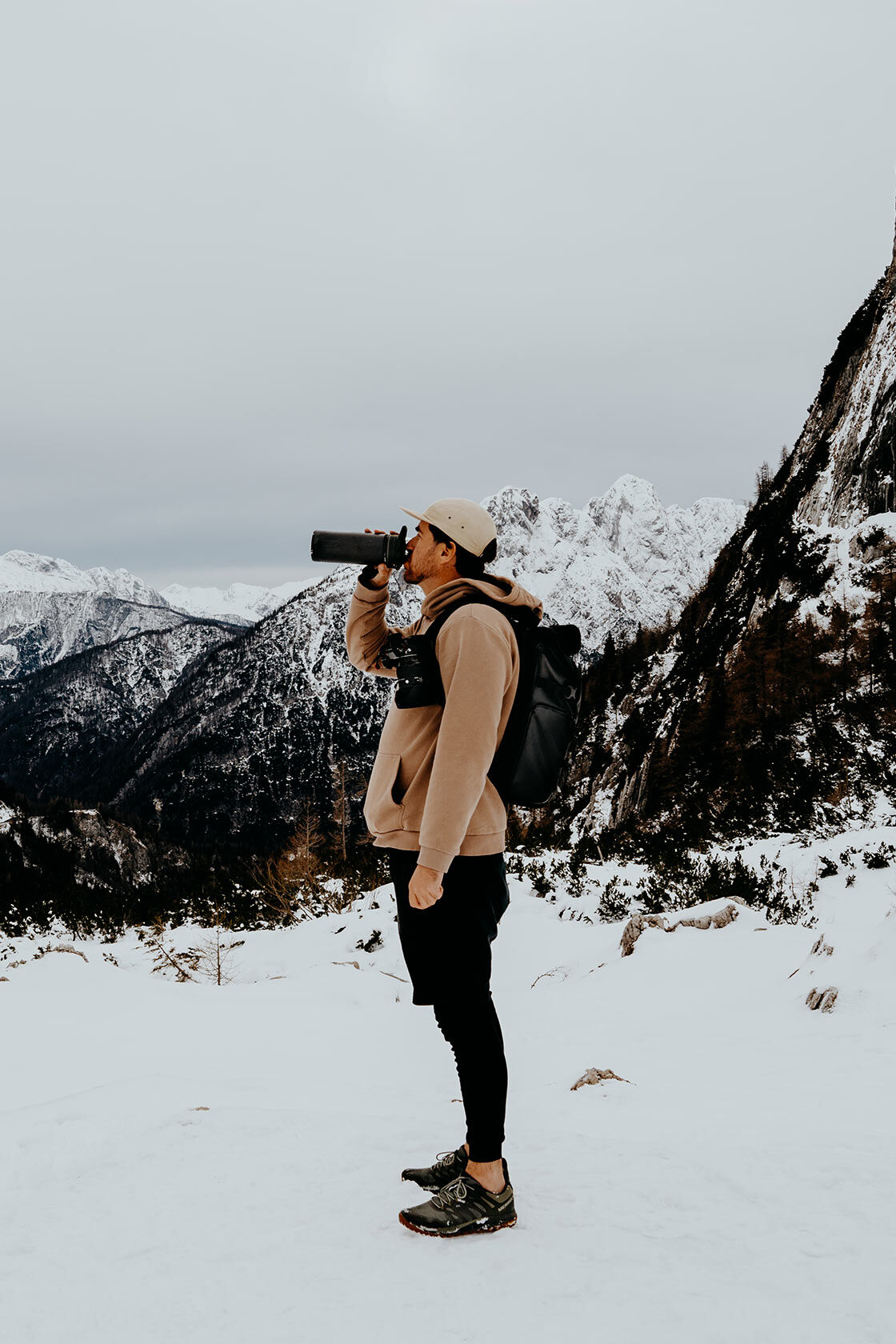
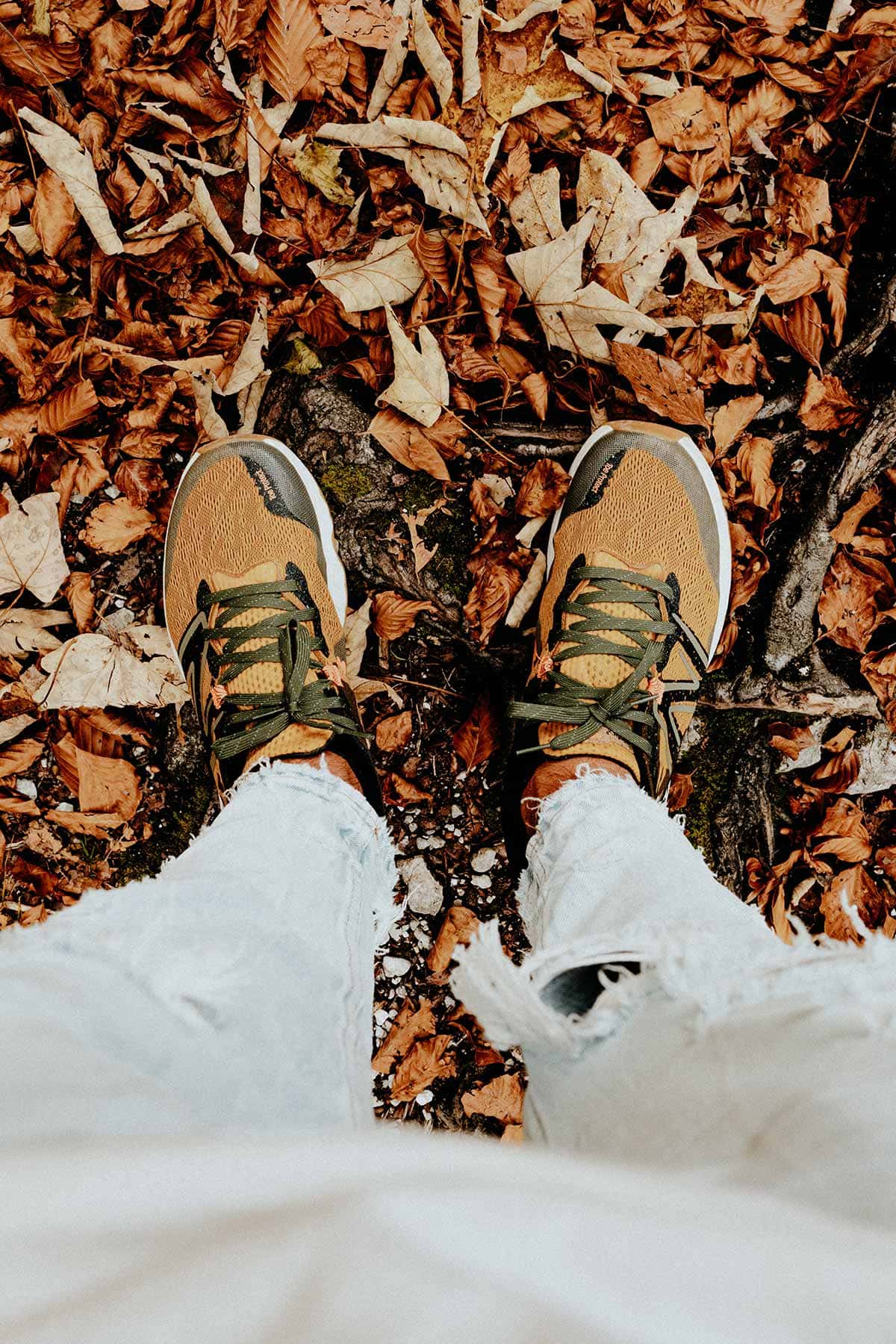
Stay safe in Slovenia | Travel insurance
Since Slovenia has plenty of adventurous activities on offer, I advise everyone to sort out good travel insurance before setting out on their own adventure.
While I believe that it’s unlikely to experience any troubles when following the advice in this guide, something unfortunate can happen at any time, whether it’s an injury, a stolen camera, or an accident on the road.
For travel insurance, I use Heymondo, as they offer full covid-19 coverage, as well as a handy app with 24-hour medical assistance. Make sure you check it out – readers of WTSW receive 5% off any insurance policy too.
Keep on reading | Planning a trip to Slovenia soon
After visiting Slovenia two times now, and spending nearly 3 weeks in the country, I gathered quite some insightful information which I translated into several in-depth guides that will help you travel to this amazing country more easily.
Slovenia itinerary | My essential 10-day Slovenia road trip itinerary (coming soon)
Vrsic Pass | A guide to driving the hairpin roads of the Vrsic Pass
The absolute best of Ljubljana | 11 Incredible things to do in Ljublana
My Hotel Bohinj review | Experienced unrivalled eco-friendly luxury in Slovenia
Uncover one of Slovenia’s most stunning waterfalls | A quick guide to Slap Kozjak
Lake Bled (coming soon) | My favourite things to do in Lake Bled
Lake Bohinj (coming soon) | The absolute best of Lake Bohinj and Surrounds
Driving in Slovenia (coming soon) | An in-depth guide to driving in Slovenia
Cheers!
I’ve been on this travel blogging journey since 2019.
If you appreciate what I do here, these are some ways you can support me.
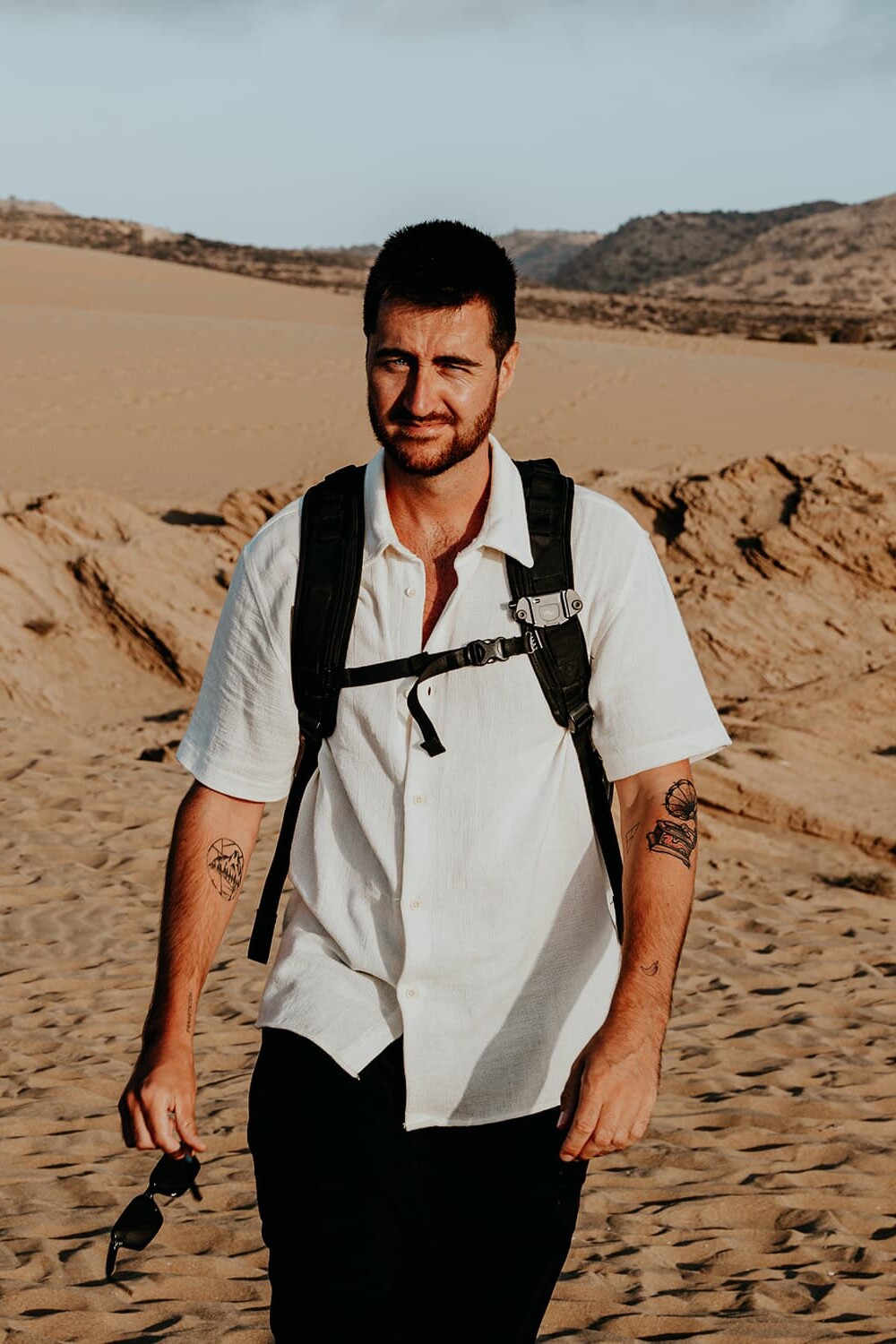
PLAN YOUR SLOVENIA ITINERARY WITH THESE ESSENTIAL GUIDES
A quick guide to Slap Kozjak, Slovenia
You will probably have seen numerous pictures of Slap Kozjak on Instagram by now, which clearly indicates that you should visit this amazing waterfall too.
Tucked away in a mysterious gorge in the Kobarid Forest, Slap Kozjak is a mesmerizing waterfall, if not the most scenic one within Slovenia, which to me, makes the hike up there an essential activity on any Slovenia itinerary (coming soon).
The main waterfall – which also goes by Kozjak Waterfall or Mali Kozjak – has gained tremendous popularity over the last couple of years, yet it still feels like a hidden gem that has been discovered by only few, thanks to its mystical ambience.
But it’s not just the waterfall at the end of the hike that is worthy of your time, no, the hike itself is absolutely stunning too and will lead you along the crystal-clear Soca River, over several picturesque stone bridges, and along heaps of little scenic creeks.
A true paradise for nature lovers and waterfall chasers alike.
In this guide, I’ve covered everything you need to know before starting the hike to Slap Kozjak, including the entrance fee, how to get there, the best time to visit, what to pack and more.
If you choose to use any of the links on this page, I may receive a small commission at no extra cost to you. By using these links, you’ll have a direct impact on WTSW and support my ability to continue to create free insightful travel content for you. If you find any of my tips useful, you can support me by buying me a virtual coffee here.
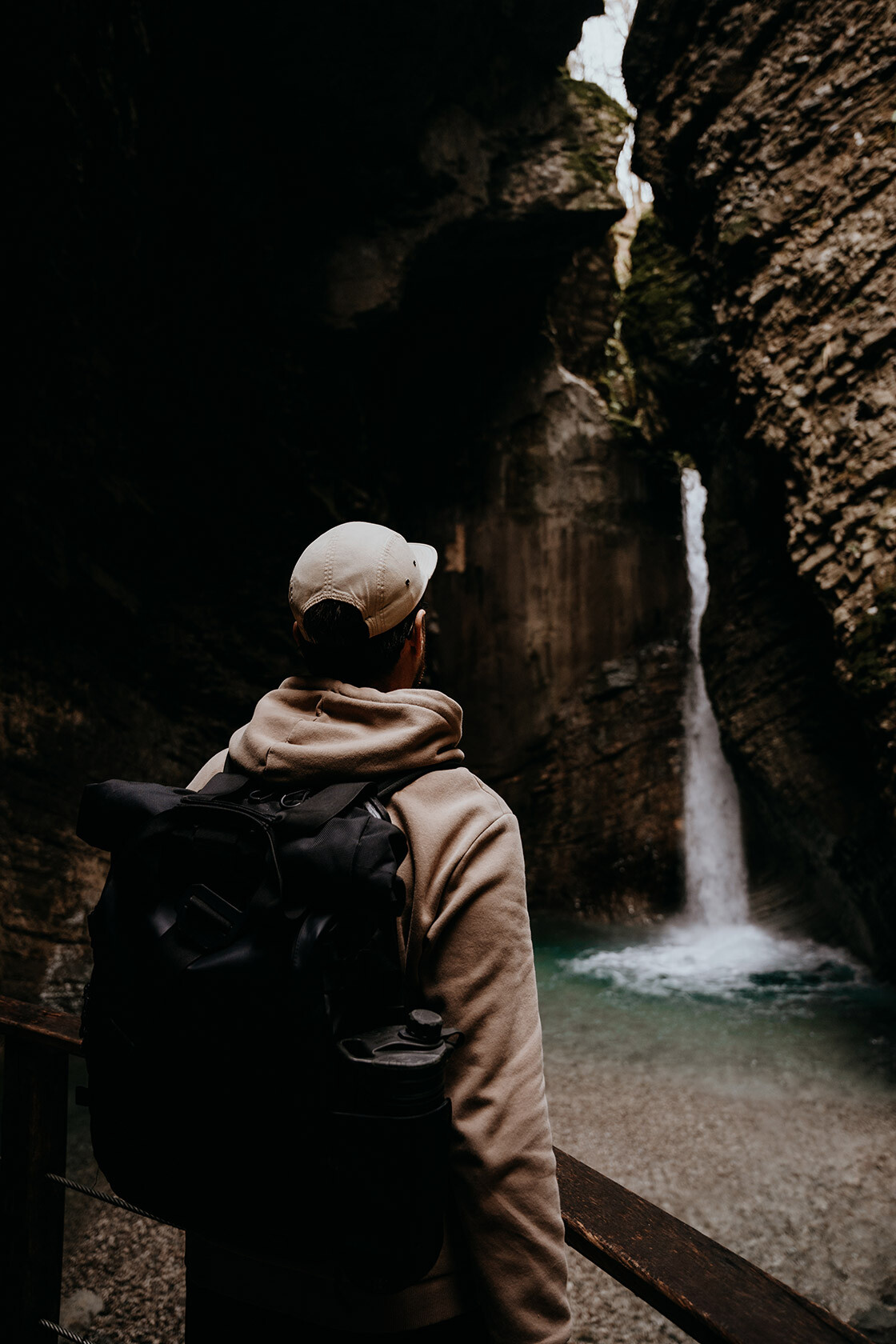
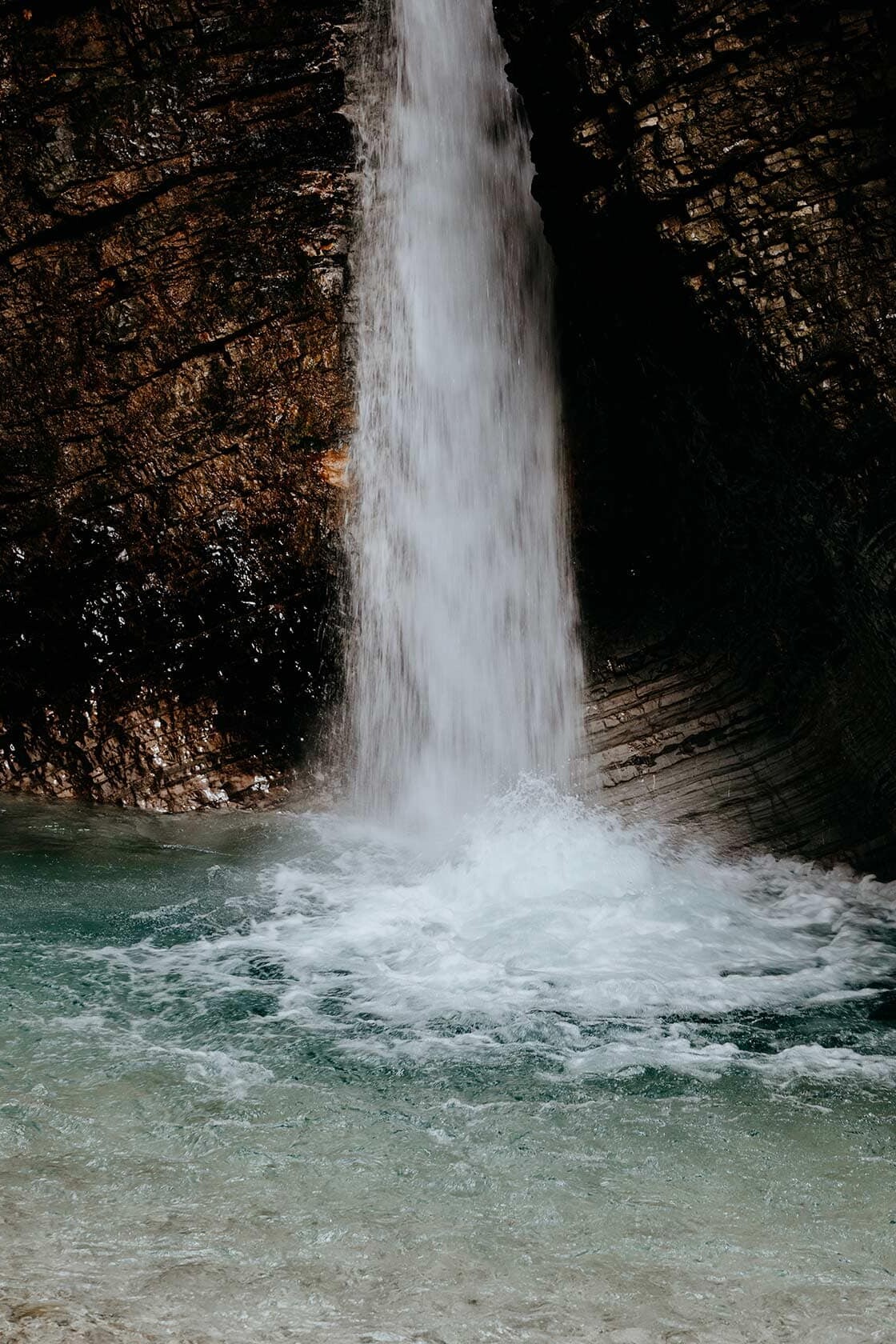
Where is Slap Kozjak
Slap Kozjak is a 15-metre-high waterfall that wouldn’t fall out of place in the midst of the lush jungles of Bali, yet it is situated only just outside of Kobarid, a lively town in the Goriska – Tolmin region of Slovenia.
Part of the famous Triglav National Park and only about 30 minutes drive away from Kobarid, the astonishing Kozjak Waterfall is a must-see for anyone travelling to Slovenia.
The hike itself starts from the parking lot of Kamp Koren, only just off the 203 main road between Kobarid and Bovec.
Slap Kozjak hike details
Hike difficulty | Easy
Hike duration | 1 to 2 hours out and back
Hike distance | 3 kilometres
Elevation gain | 142 metres
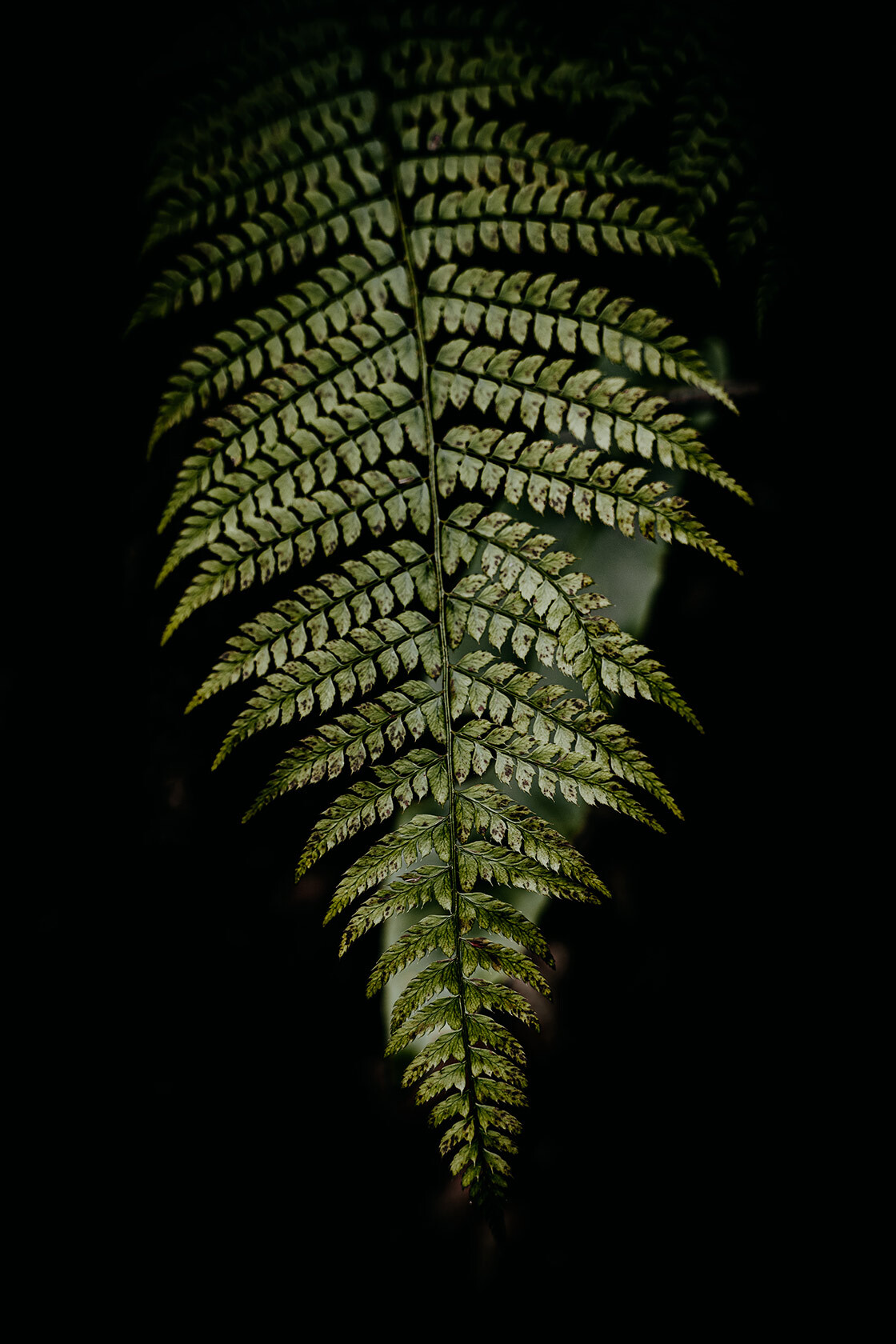
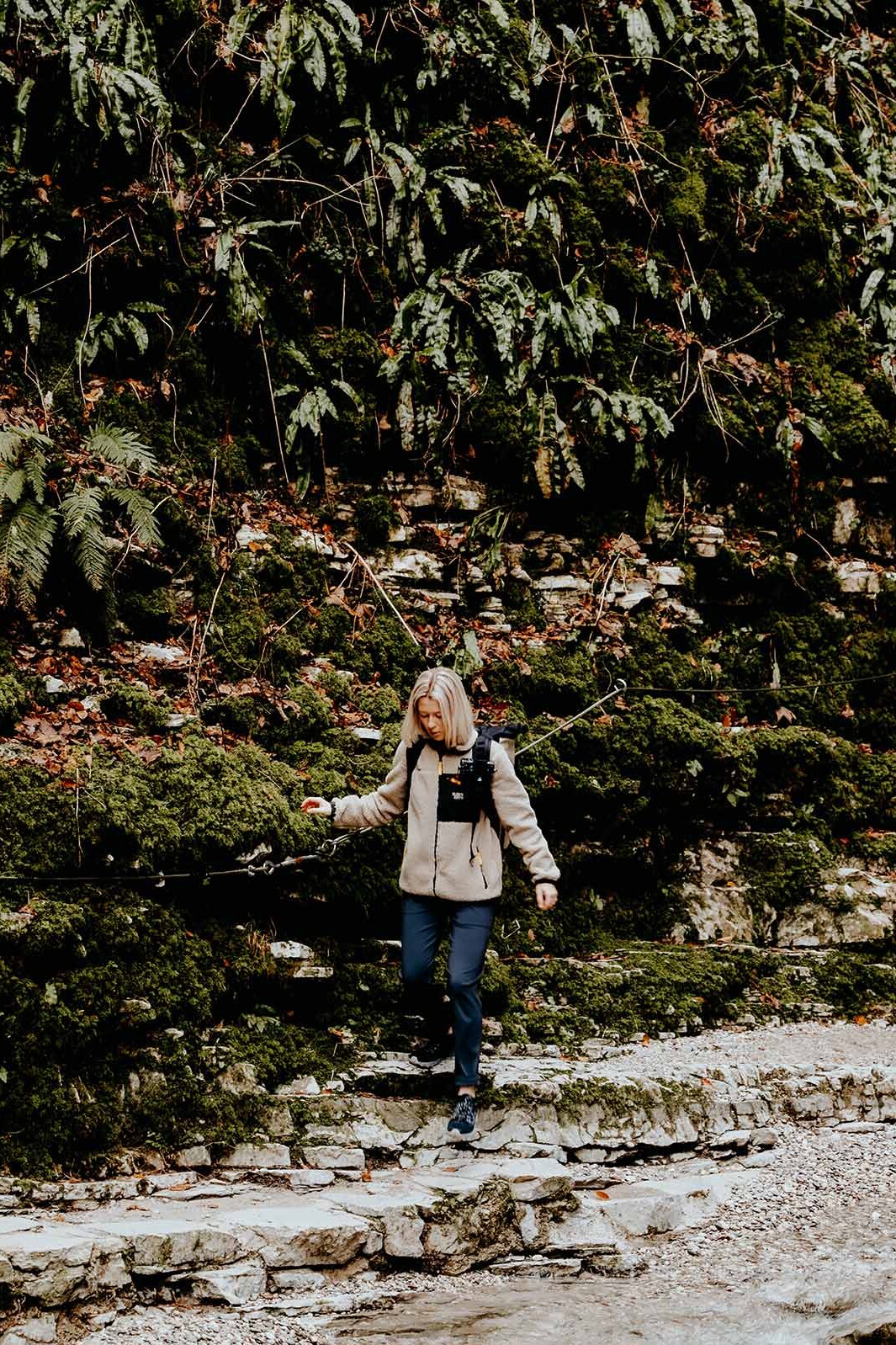
Slap Kozjak entrance fee 2023
As of 2023, the entrance fee to Slap Kozjak is set at €5,- per person.
However, it is worth noting that the price for children under the age of 15 is reduced to €3,- per person. Additionally, students, seniors, and groups of 10 or more can enter for only €4,- per person.
For relevant prices, additional information, and opening hours, make sure you see the official Soca Valley website here.
During my visit in early January, the official ticket kiosk of Slap Kozjak was closed, which meant that I had the fortune to have free entrance to the waterfall.
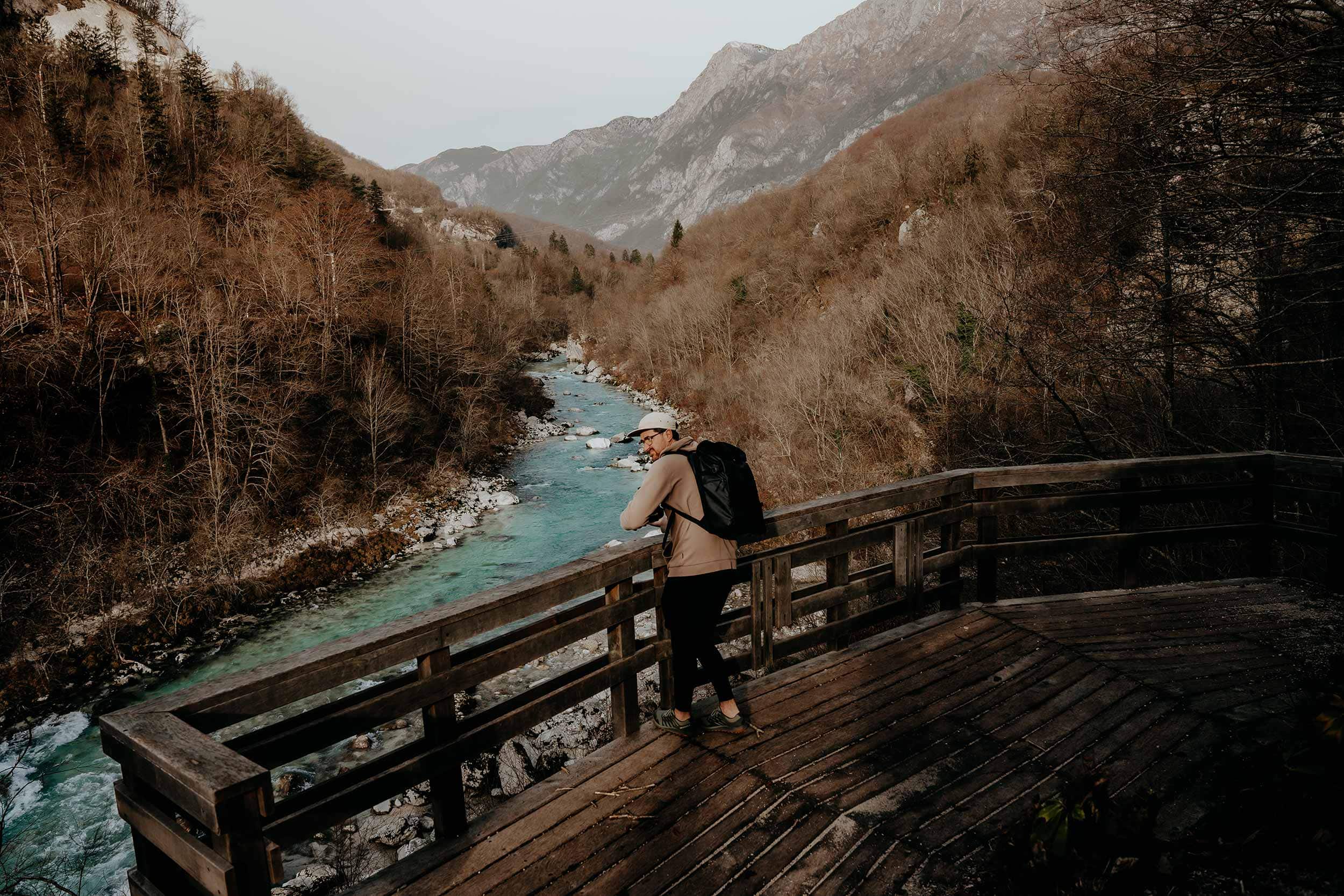
How to get to Slap Kozjak
Slap Kozjak is situated in the Goriska – Tolmin region, which is pretty remote in comparison to other parts of Slovenia, meaning you’ll find very limited public transportation options here.
For the above reason, your best option is to rent your own car for the duration of your trip in Slovenia – this will also give you the flexibility to explore more of the area on a road trip through the country.
When it comes to car rental, my absolute favourite option is Rentalcars.com, as they work with the leading car rental companies, and offer incredible service and additional insurance options – plus it’s pretty easy to find exciting deals.
Once you’ve rented a car, it’s actually quite easy to get to Slap Kozjak, with manageable driving distances from some of Slovenia’s absolute highlights.
Below I’ve listed a few common driving routes:
- Lake Bled to Slap Kozjak: 2 hours
- Bohinj to Slap Kozjak: 1,5 hours
- Ljubljana to Slap Kozak: 2 hours
- Bovec to Slap Kozjak: 30 minutes
If you’re curious about how to include the Kozjak waterfall in your own itinerary, make sure you read my 10-day Slovenia itinerary (coming soon) too.
Parking at Slap Kozjak
When arriving at the starting point of the hike to Slap Kozjak, you’ll soon notice Parking Kozjak, which is located on the grounds of Kamp Koren.
The cost of parking is €1,50 per hour or €10,- for the entire day, and payments can be done with both cash and EasyPark.
The parking itself has plenty of space and is well-kept – plus there’s a toilet on the terrain too.
Although the parking gives the impression that its free during the offseason, I’ve read that the local police drives around the area to hand out parking tickets multiple times now, which will set you back about €70,-
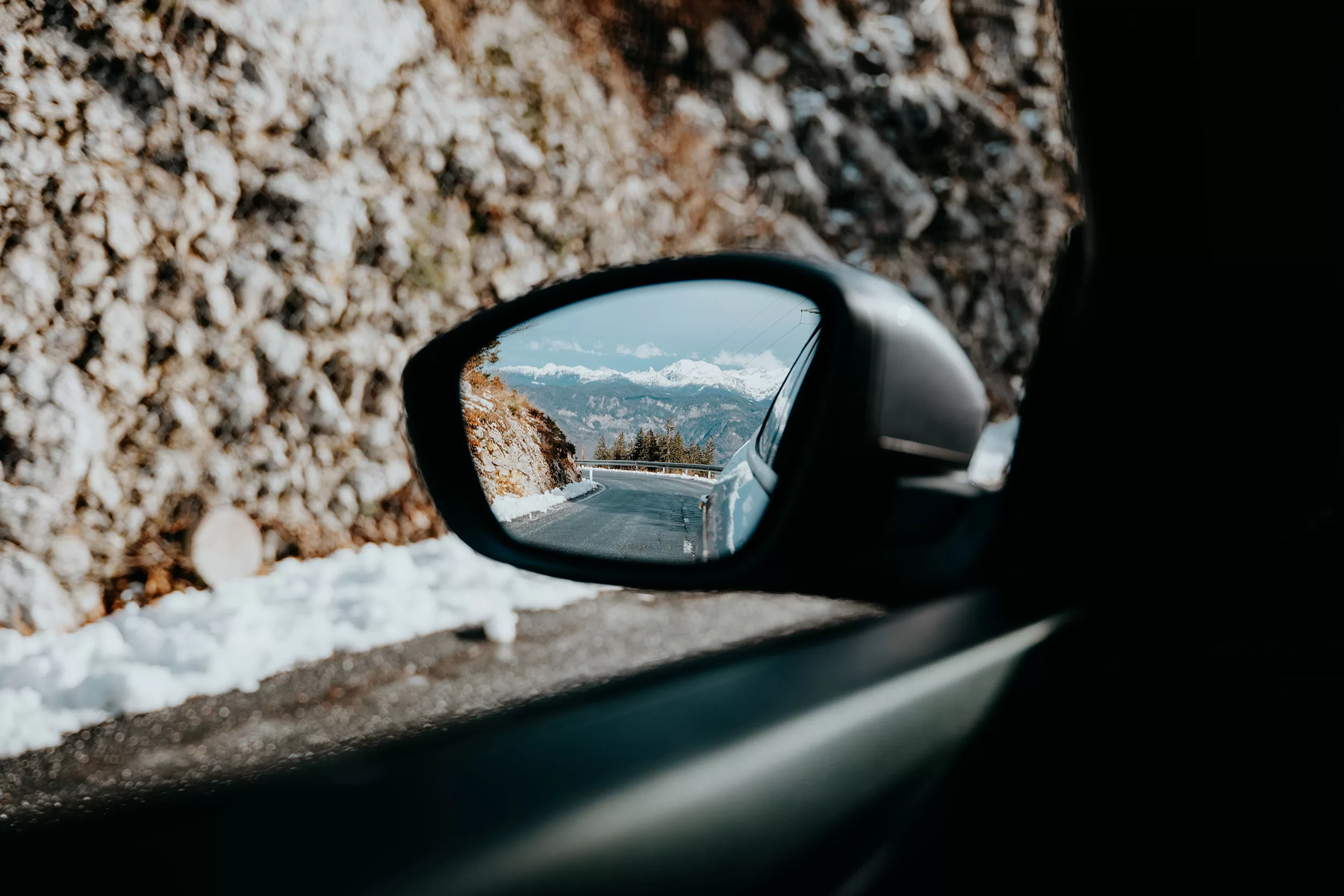
The hike to Slap Kozjak
Start of the hike
First things first, the starting point of the hike to Slap Kozjak is rather easy to find, as it’s located right next to the parking lot of Kamp Koren.
Easy walk along the Soca River
The first part of the trail starts off completely flat, yet it takes only a few moments before you begin to wind along the emerald-blue waters of the Soca River – which in itself, is already quite the highlight.
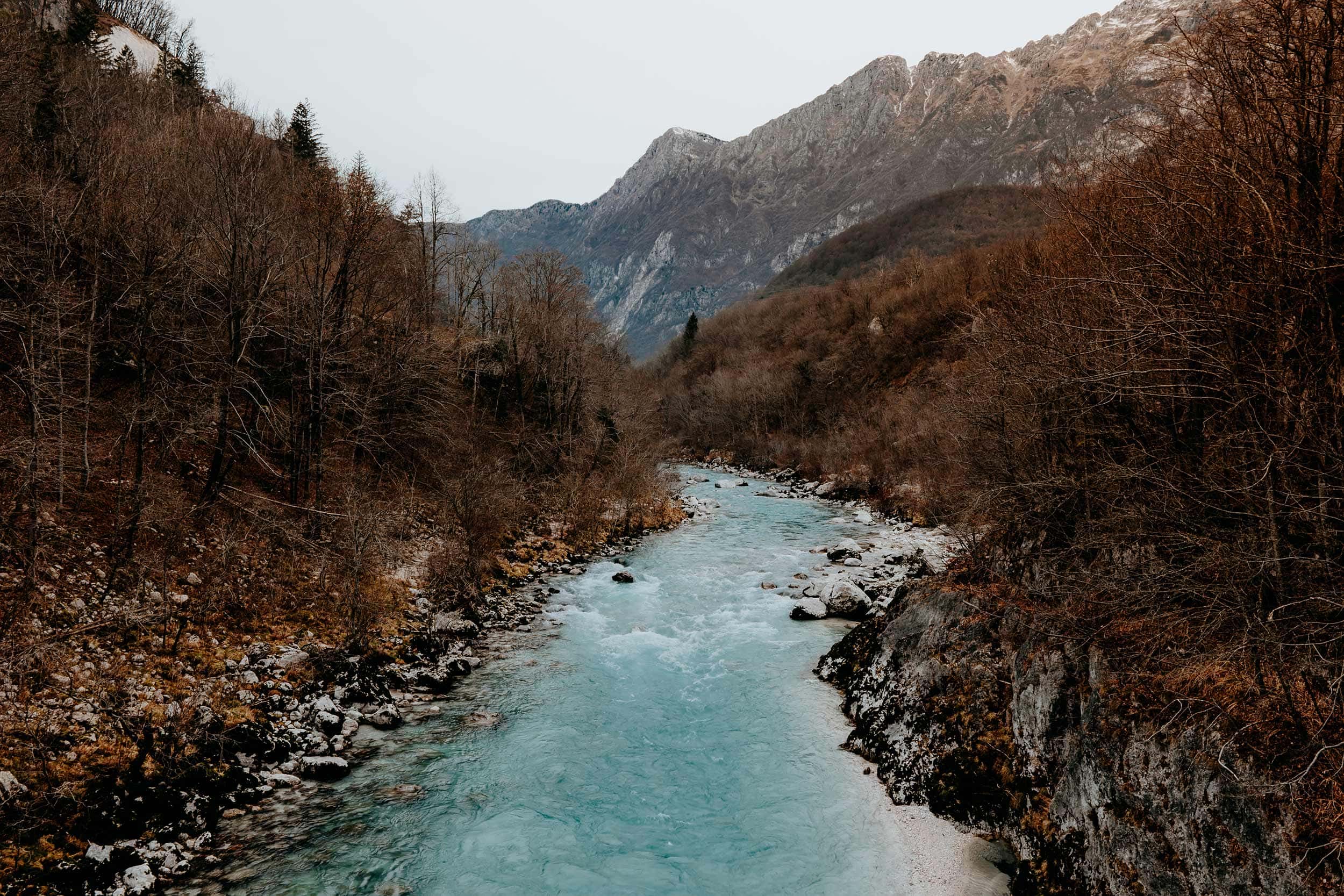
The suspension bridge
After roughly 15 minutes, you’ll stumble upon the first real highlight; an extensive suspension bridge on the left-hand side that provides some epic views of the surrounding Triglav National Park as well as the Soca River that flows underneath.
On top of that, you also have Reka Soča Razgledna točka, a small observation point offering an even better view of the impressive Soca Valley.
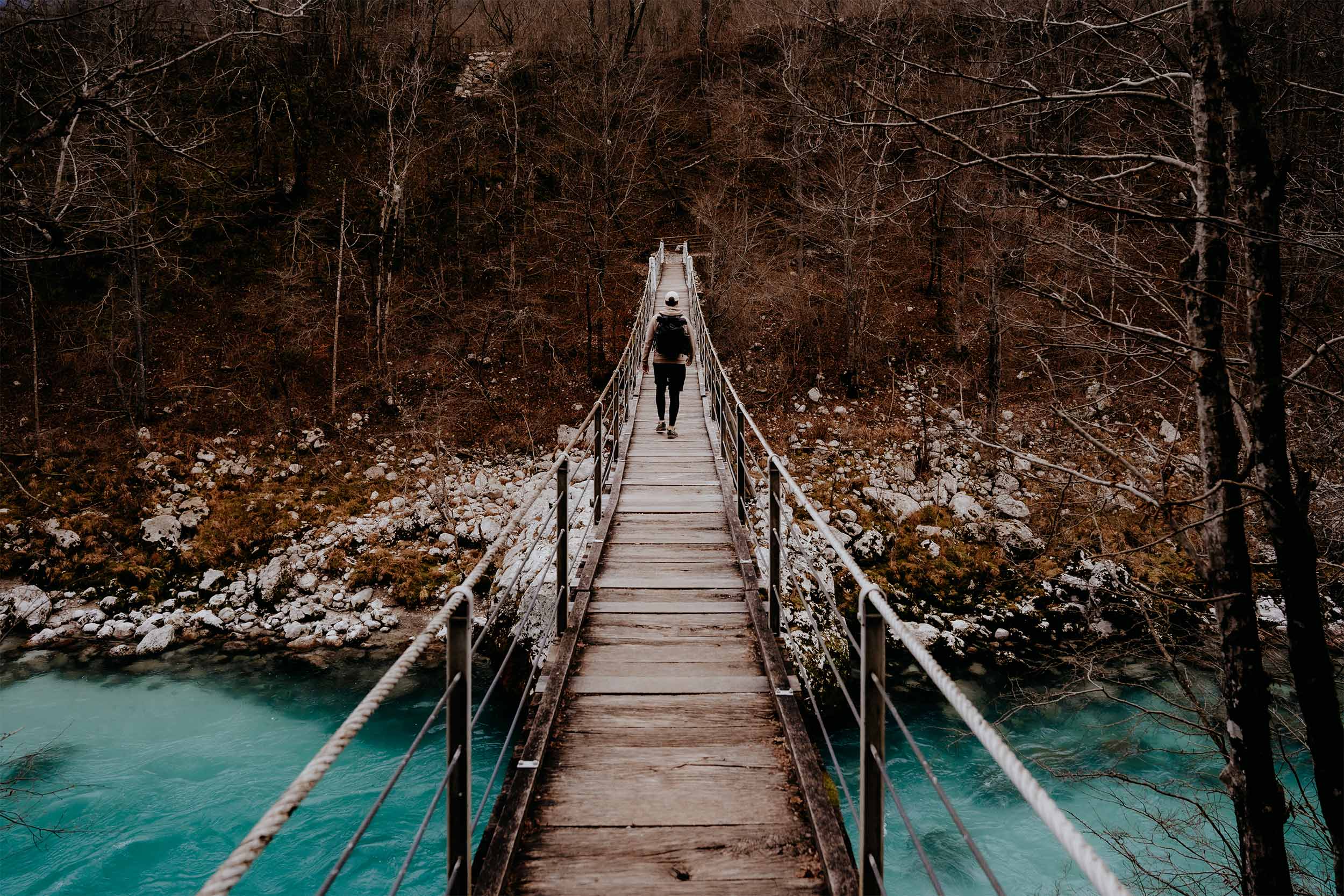
Hike through the forest
After taking in the incredible views, make sure you turn right and continue to follow the trail, which will now slowly lead you into the lush and somewhat mystical Kobarid Forest.
Though it’s still relatively easy, you will now gradually start to gain some elevation and will soon pass the official ticket office of Slap Kozjak, where you can buy your ticket for €5,- per person.
However, since I was there in the offseason, the ticket office was closed, meaning I had free entrance to the waterfall.
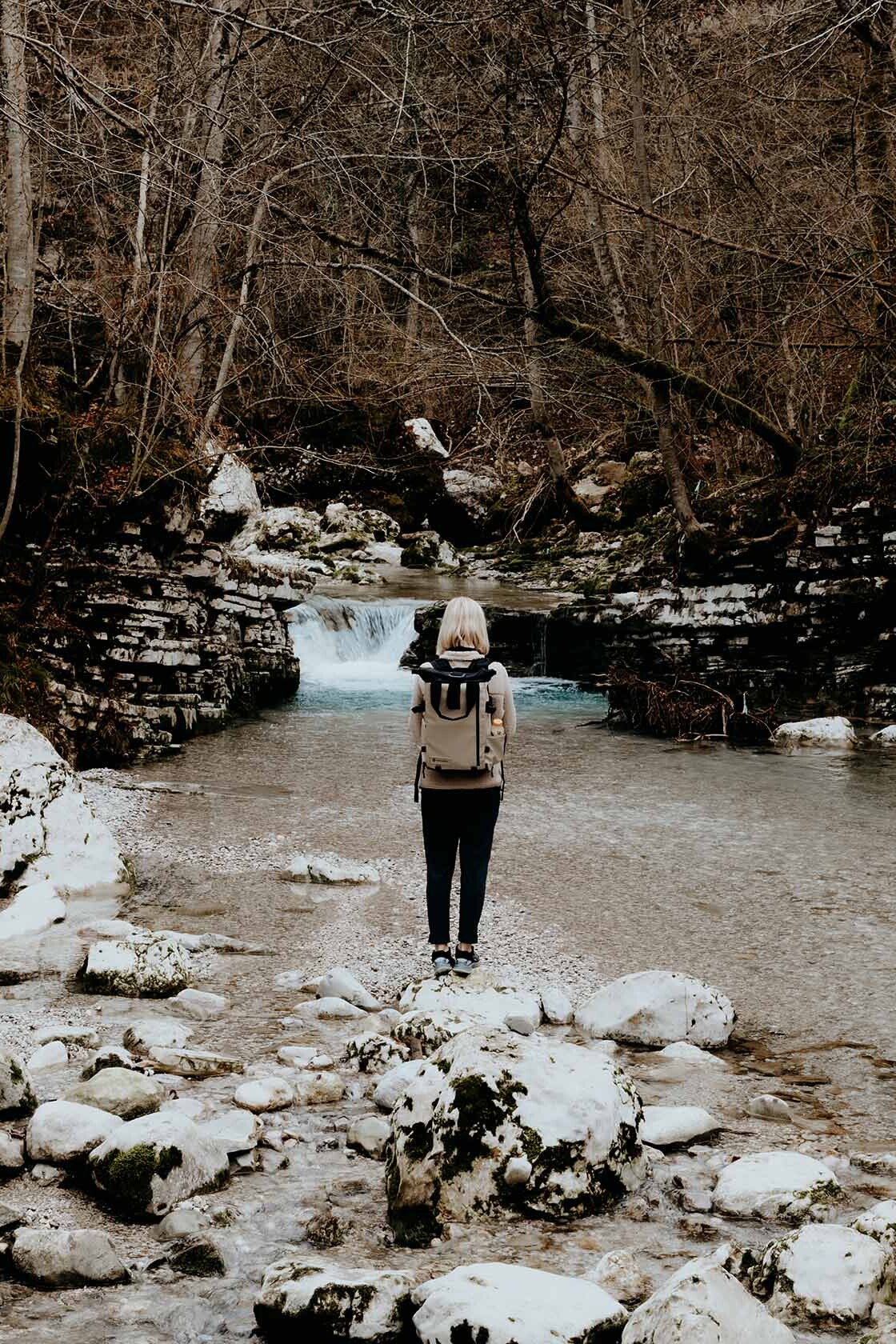
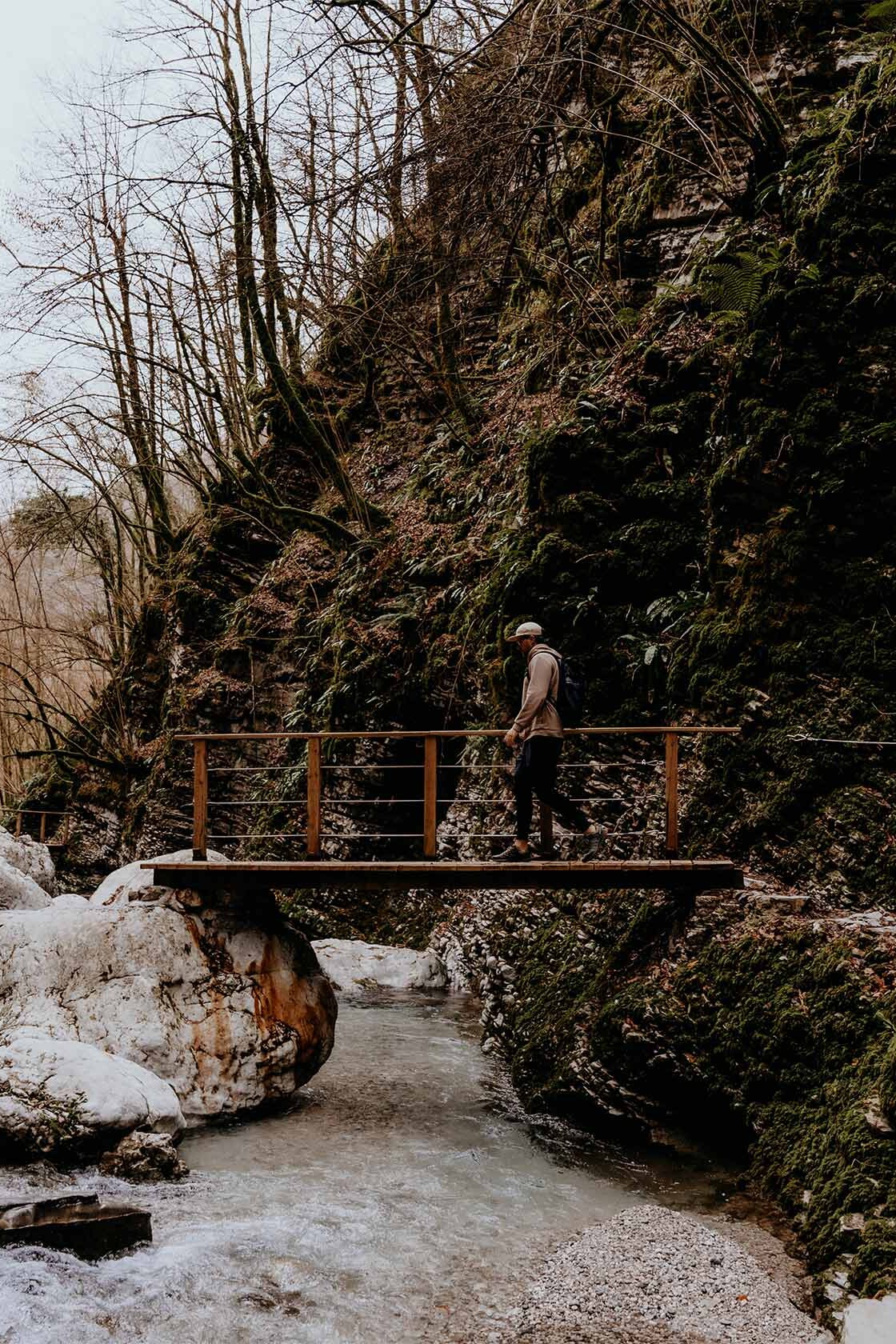
Little Kozjak
From here, you’ll venture deeper into the Kobarid forest, and after a short while, you will stumble upon Little Koziak, an impressive 8-metre-high waterfall that flows underneath the stone bridge that you’ll have to cross to reach the main waterfall.
Though it’s named Little Koziak, it is actually quite an impressive waterfall, which could be observed from various interesting angles, so make sure you take some time to admire it before moving on to the main attraction.
Ariving at Slap Kozjak
After taking in Little Koziak, it’s time to move on to Slap Kozjak by crossing several stony bridges and a wooden walkway attached to the steep moss-covered rock walls of the gorge that leads to the waterfall and its natural pool.
Only a few moments later, you’ll arrive at the foot of the stunningly beautiful Slap Kozjak waterfall, which is slightly hidden between towering cave walls, creating a mystical ambience which makes it feel as if lifted straight out of a fairytale world somewhere far, far away.
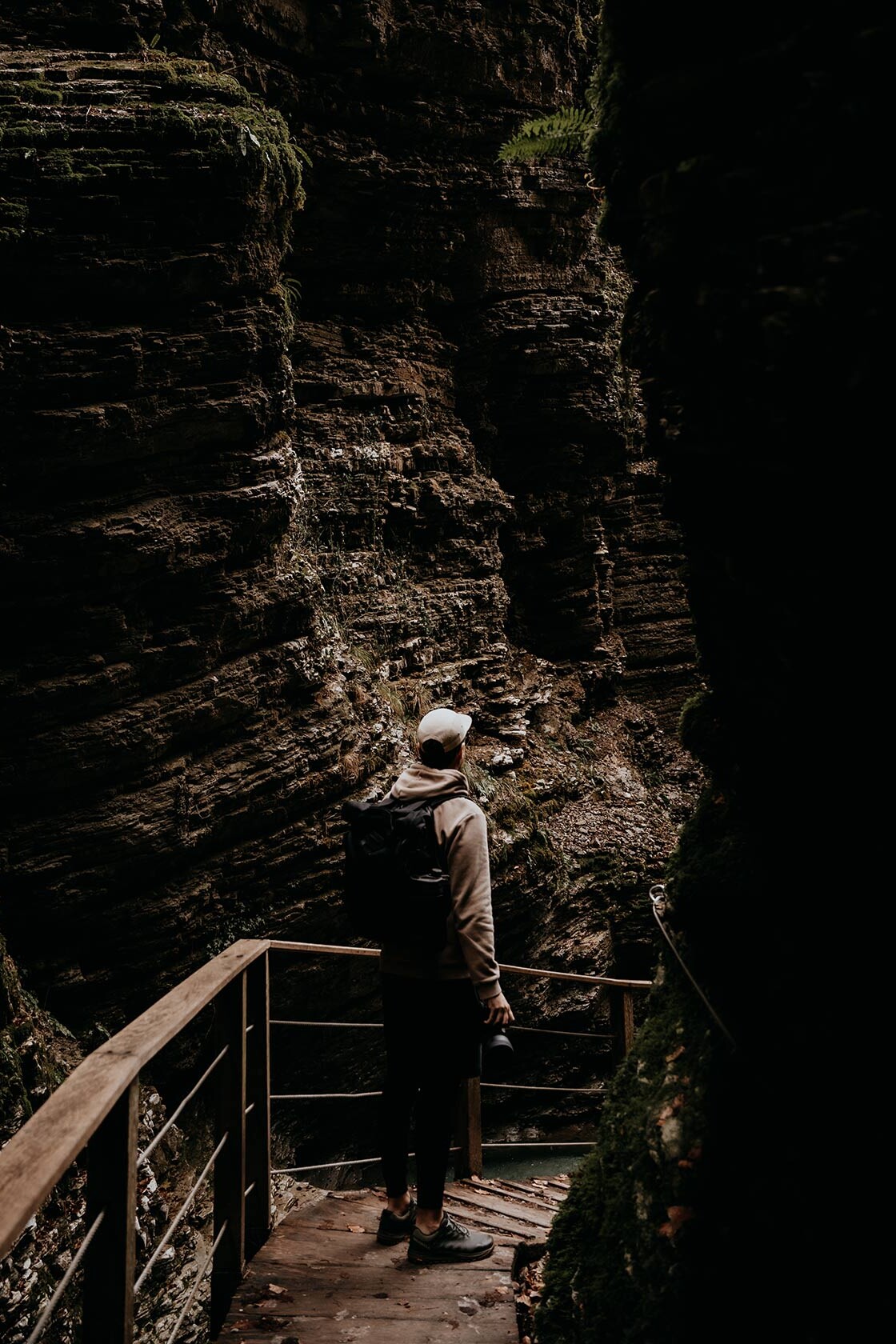
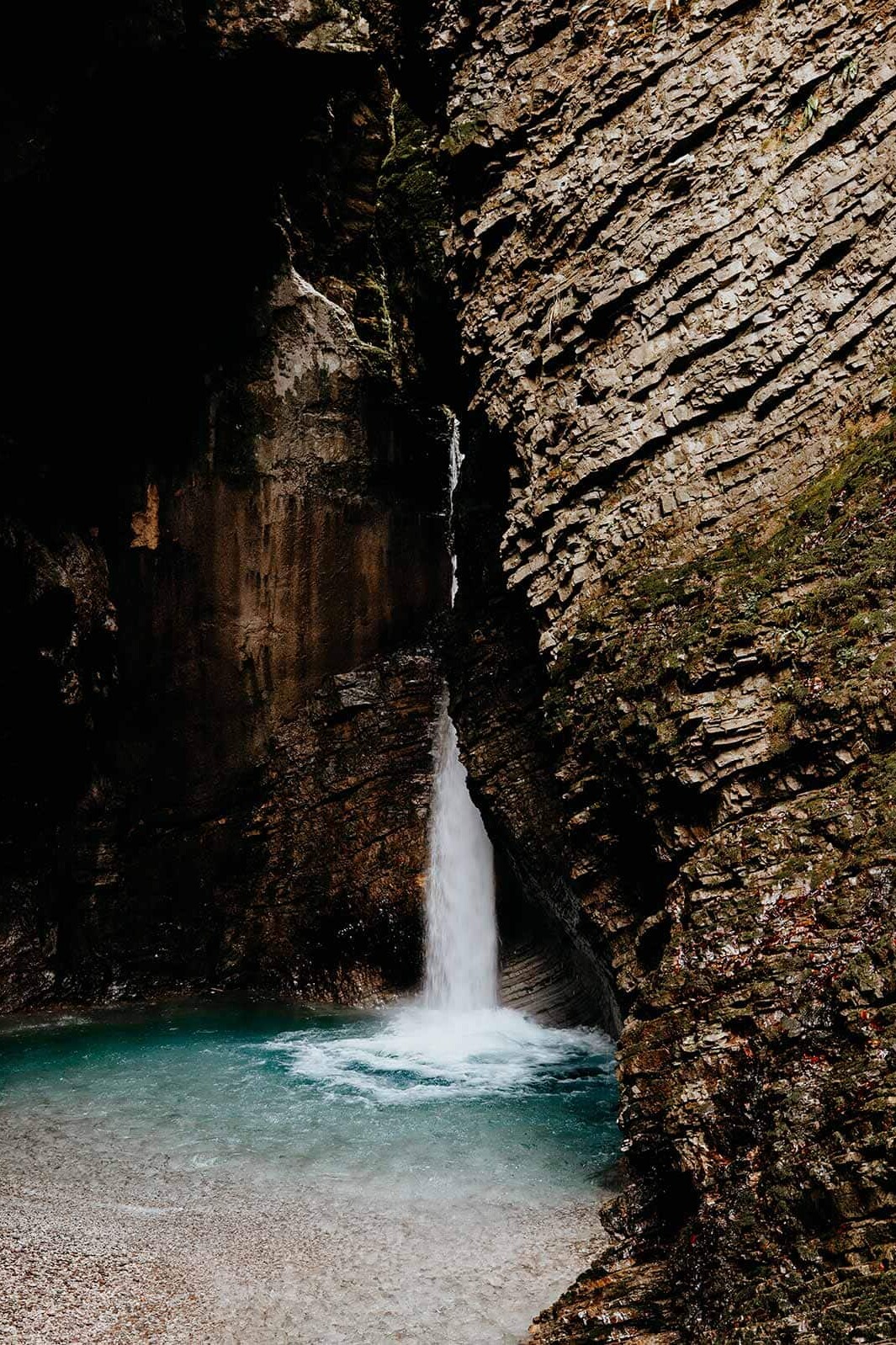
Wrapping up the hike
Once you’re done taking in Slap Kozjak, and of course, snapping lots of photos (trust me, you will take loads as it’s truly breathtaking here), it’s time to retrace your steps back down the trail.
The trail back is exactly the same, and you shouldn’t experience any problems getting back to the parking, besides a few additional stops, to take in the amazing scenery one last time.
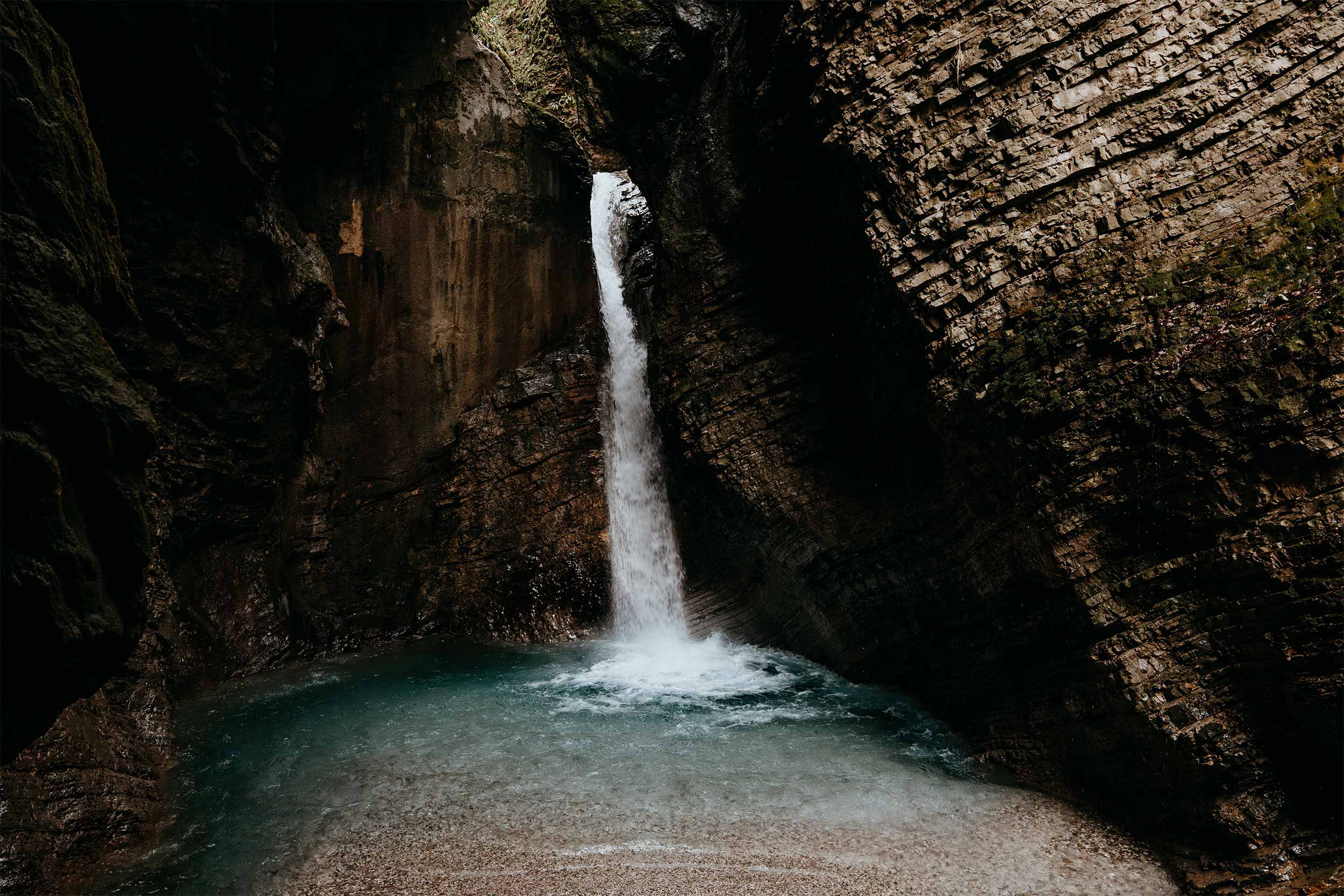
How long does the hike to Slap Kozjak take
From the parking lot at Kamp Koren, it shouldn’t take longer than 30 minutes to reach Slap Kozjak.
This is obviously without the essential stops you should make to take in the amazing surroundings that you hike through. With that in mind, the hike will take at least 2 to 3 hours to complete, especially if you’re into photography too.
You could also do the Slap Kozjak hike in combination with other hikes in the area – which will add some extra time to your overall hiking itinerary.
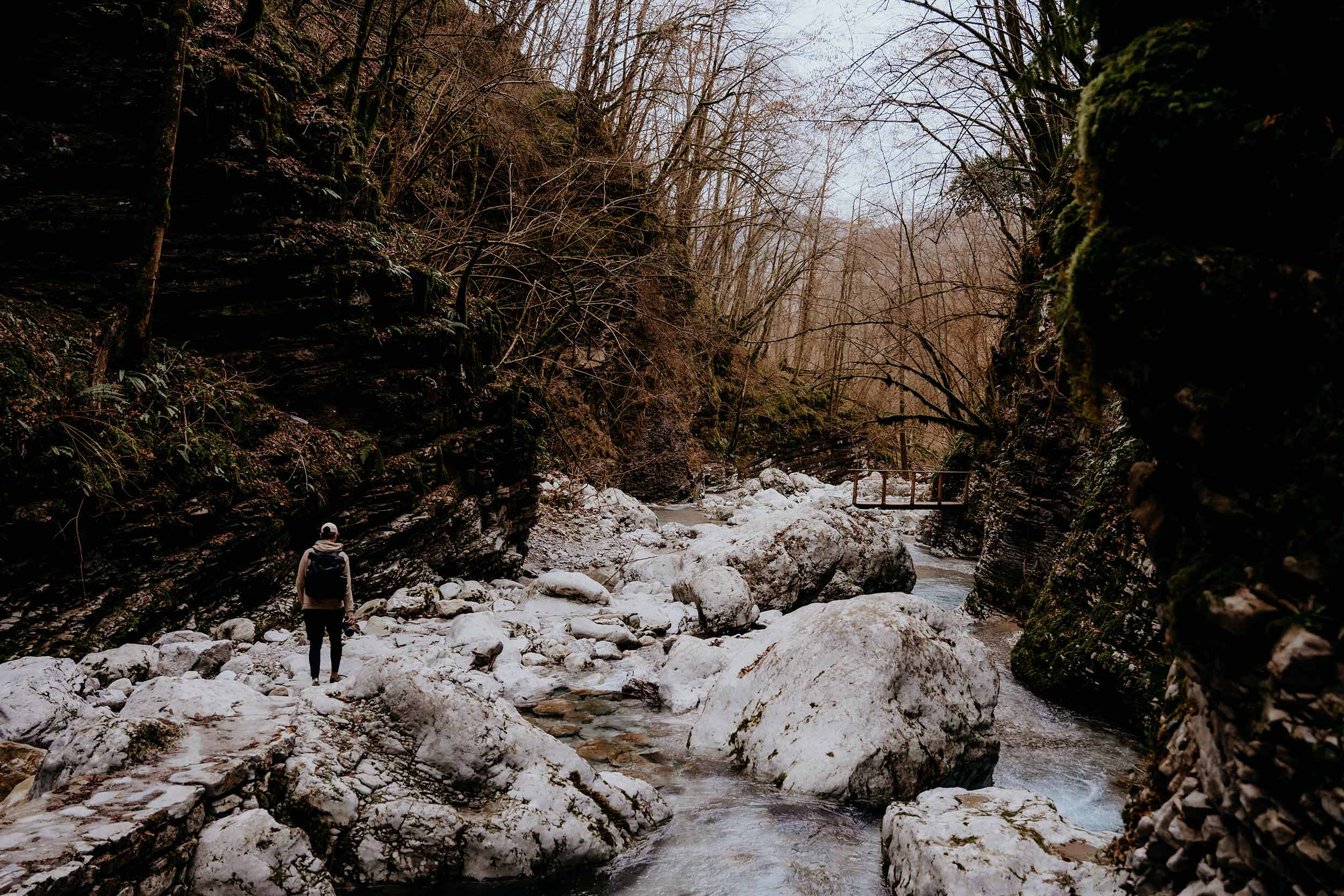
Best time of year to visit Slap Kozjak
If you ask me, the Kozjak waterfall is best visited between early April and late October, when the weather conditions are comfortable and the days long.
This is also the time when the Slap Kozjak trail is officially open to the public, as the entrance point to the waterfall is open from the 2nd of April until the 31st of October.
Depending on the severity of winter, the waterfall is also a great option for those visiting Slovenia during the colder winter months.
I visited Slap Kozjak in early January, and was fortunate enough to have excellent weather conditions, while also enjoying free access to the hiking trail and the waterfall – winner!
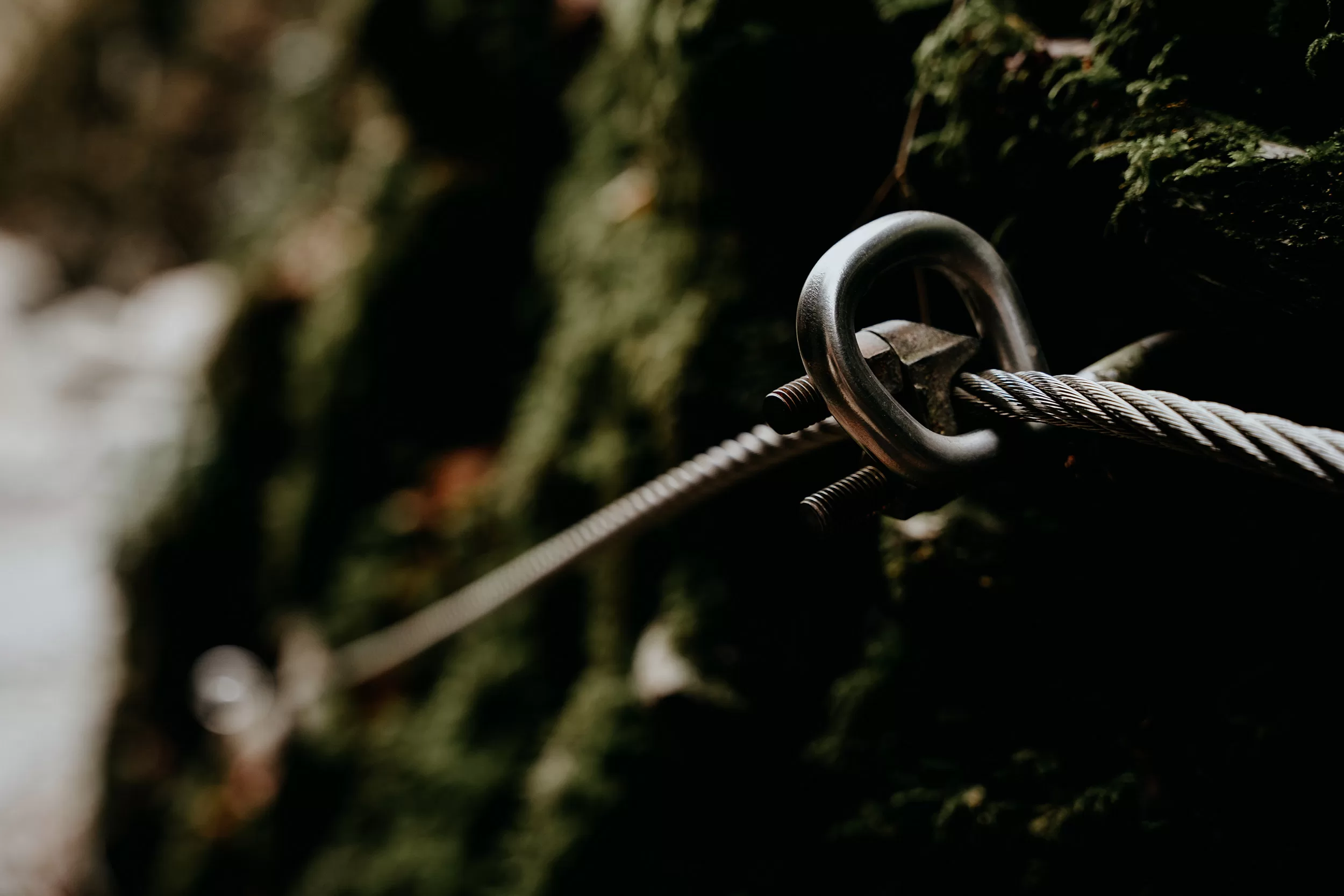
Best time of day to visit Slap Kozjak
Whether you’re a photographer like me, or just looking to have a more serene experience, I’d highly suggest visiting Slap Kozjak first thing in the morning, when it’s still fairly quiet on the trail.
Starting from mid-morning, it begins to get pretty busy at Slap Kozjak and continues to get even busier as the day progresses – mostly because it’s a Slovenian road trip favourite, as well as a popular day trip from Bovec, Bohinj and Lake Bled.
If you’re not an early bird or planned other activities for the morning, the late afternoon is also a great time to do the Slap Kozjak hike.
Also, I highly recommend avoiding a visit during noon, as it’s by far the most crowded time of day. So unless you want to share your experience with a bunch of other people, I would not opt for this timeframe unless it’s your only option.
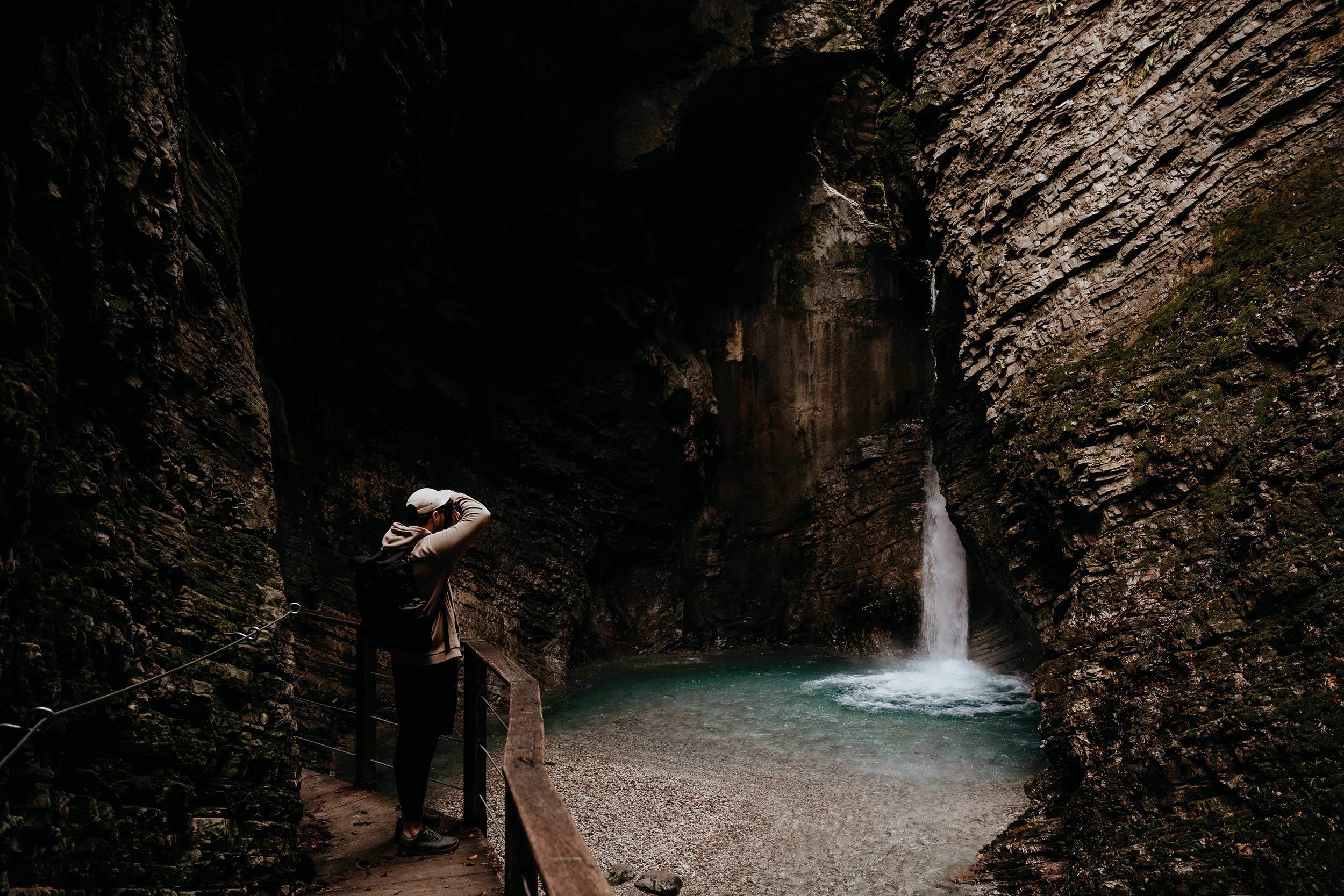
What to pack for the Slap Kozjak hike
As with most outdoor adventures, hiking Slap Kozjak comes with a unique set of needs.
To help you have a comfortable time here, I’d suggest bringing the following items:
A reusable water bottle | One travel essential that I carry with me at all times is the Grayl Geopress. This reusable water purification bottle allows me to fill up water from almost every water source, making it one of my best investments to date.
A hoodie | Given you’ll walk in the shadows of a moss-covered gorge for a fair amount of the hike, I’d highly recommend bringing an extra layer to keep you warm if needed.
A sturdy pair of sneakers | Though the hike to Slap Kozjak is relatively easy, it’s not a bad idea to wear a pair of sturdy trail runners. I’ve recently bought the New Balance Hierro V7, and I’m quite happy with the grip and comfort they provide me with when I’m on the trail.
Snacks | During my visit to Slap Kozjak in January, I noticed little to no restaurants and cafes near the trail. For that reason, I’d suggest bringing a lunchbox with some fruits, sandwiches, nuts, and a protein bar, in case you need to refuel yourself during the hike.
A camera | Slap Kozjak is truly a stunning sight to behold, so I’d advise bringing your camera, so you can click plenty of photos while you’re there. Curious about my photography gear, make sure you see what’s in my camera bag.
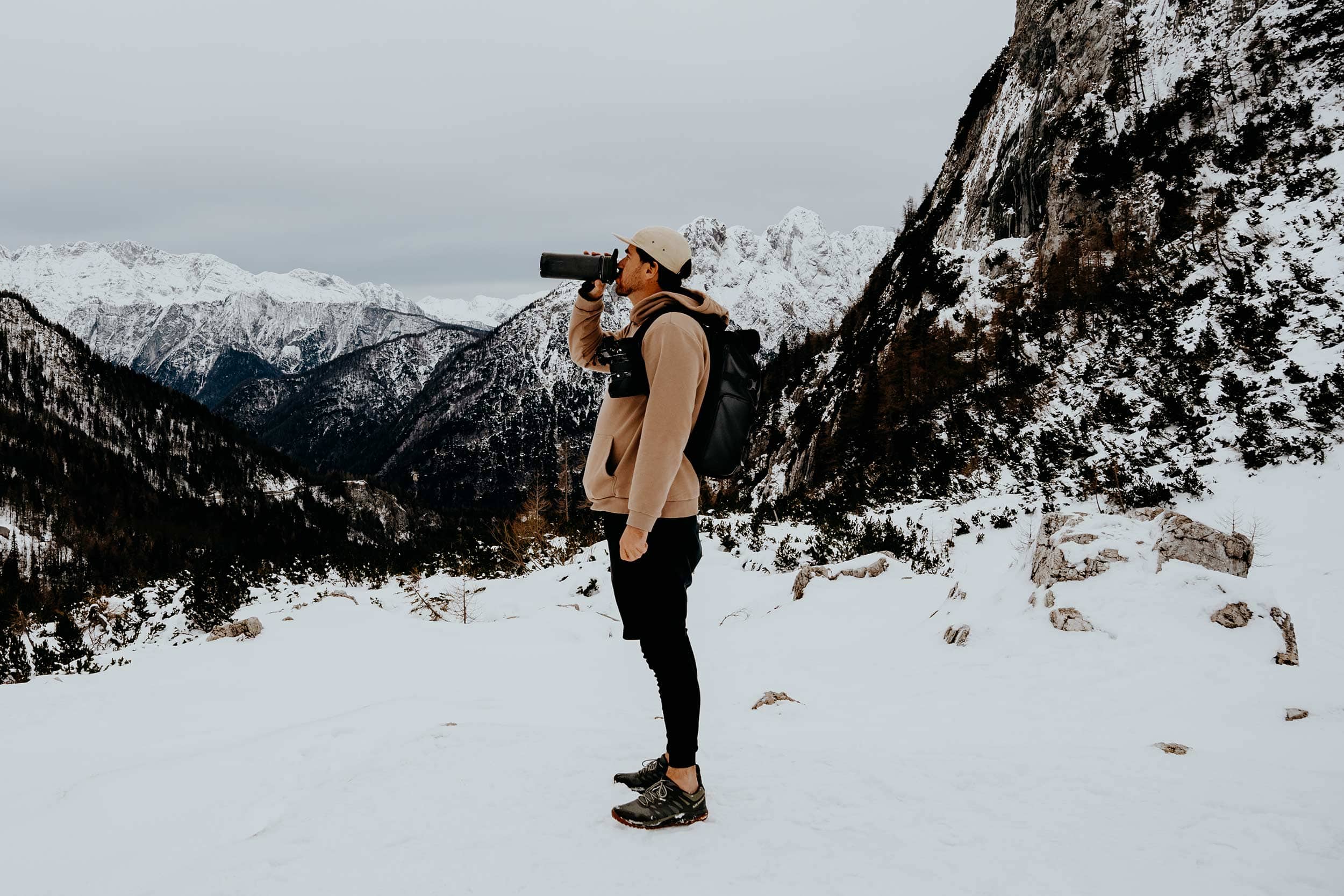
Stay safe in Slovenia | Travel insurance
Since Slovenia has plenty of adventurous activities on offer, I advise everyone to sort out good travel insurance before setting out on their own adventure.
While I believe that it’s unlikely to experience any troubles when following the advice in this guide, something unfortunate can happen at any time, whether it’s an injury, a stolen camera, or an accident on the road.
For travel insurance, I use Heymondo, as they offer full covid-19 coverage, as well as a handy app with 24-hour medical assistance. Make sure you check it out – readers of WTSW receive 5% off any insurance policy too.
Plan your Slovenia itinerary with these essential guides
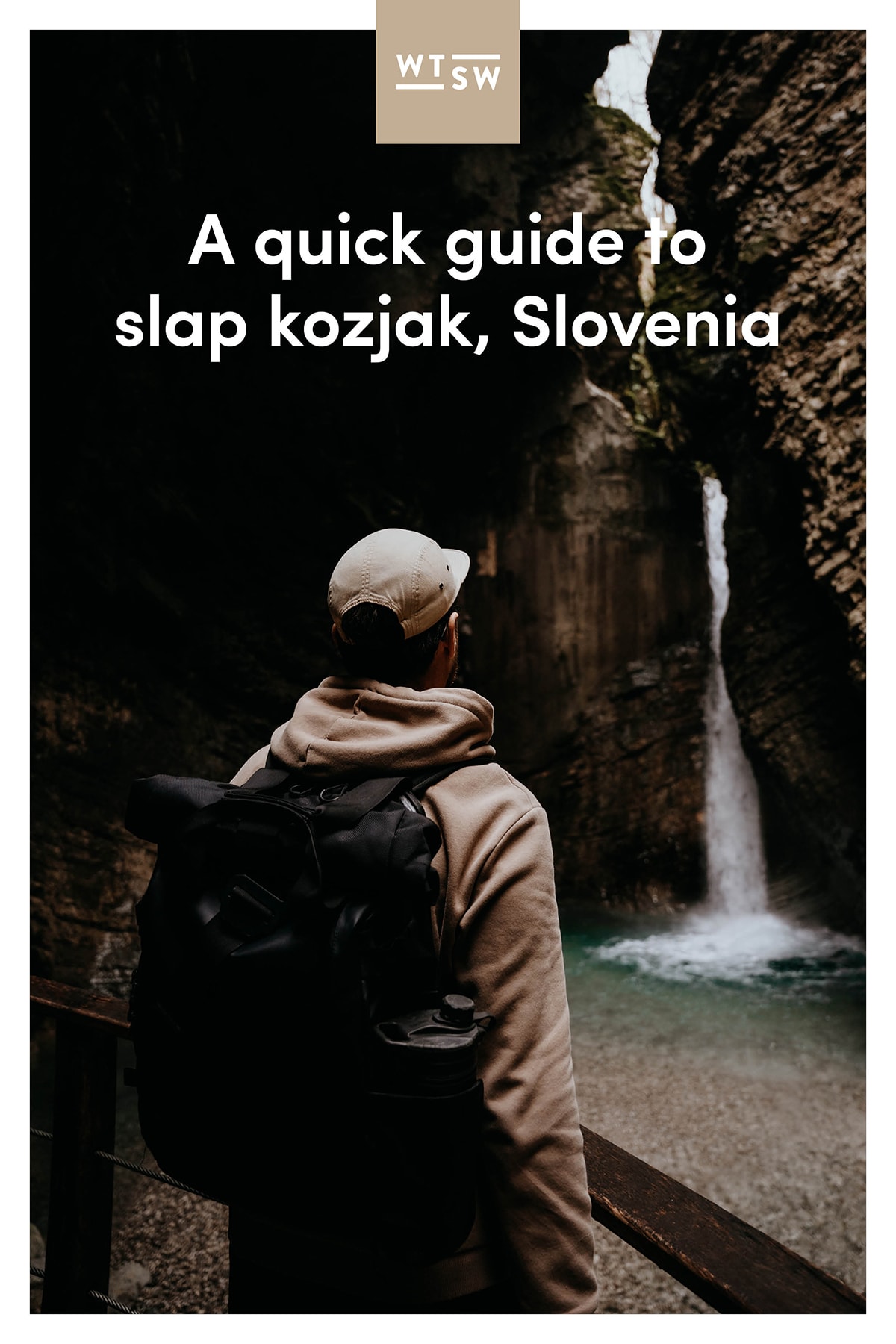
A guide to the Vrsic pass, Slovenia's breathtaking mountain pass
As a road trip aficionado by heart, a winding mountain pass like Vrsic is set to get me hyped up.
Running between Kranjska Gora and the pristine Soca valley, the Vrsic pass is without question one of the most spectacular drives in Slovenia, as it showcases the immense beauty of the Julian Alps in an utterly fascinating way.
After driving the Vrsic pass twice (in fall and winter), it’s safe to say that no Slovenia road trip itinerary is complete without a drive over the exciting, yet slightly feared mountain pass – there’s simply nothing that matches the feeling of taking on the many hairpin bends, while the mesmerizing views unfold before you.
However, with a height of 1,611m, and exactly 50 hairpin bends to conquer, driving the pass comes with quite a unique set of challenges, which is why I’ve put together this guide.
This in-depth guide includes everything you need to know before driving the Vrsic pass, including where to stop, car rental in Slovenia, the best time to visit – as well as some of my personal tips.
Enjoy, and remember to keep your eyes on the road.
If you choose to use any of the links on this page, I may receive a small commission at no extra cost to you. By using these links, you’ll have a direct impact on WTSW and my ability to continue to create free insightful travel content for you. If you find any of my tips useful, you can support me by buying a virtual coffee here.
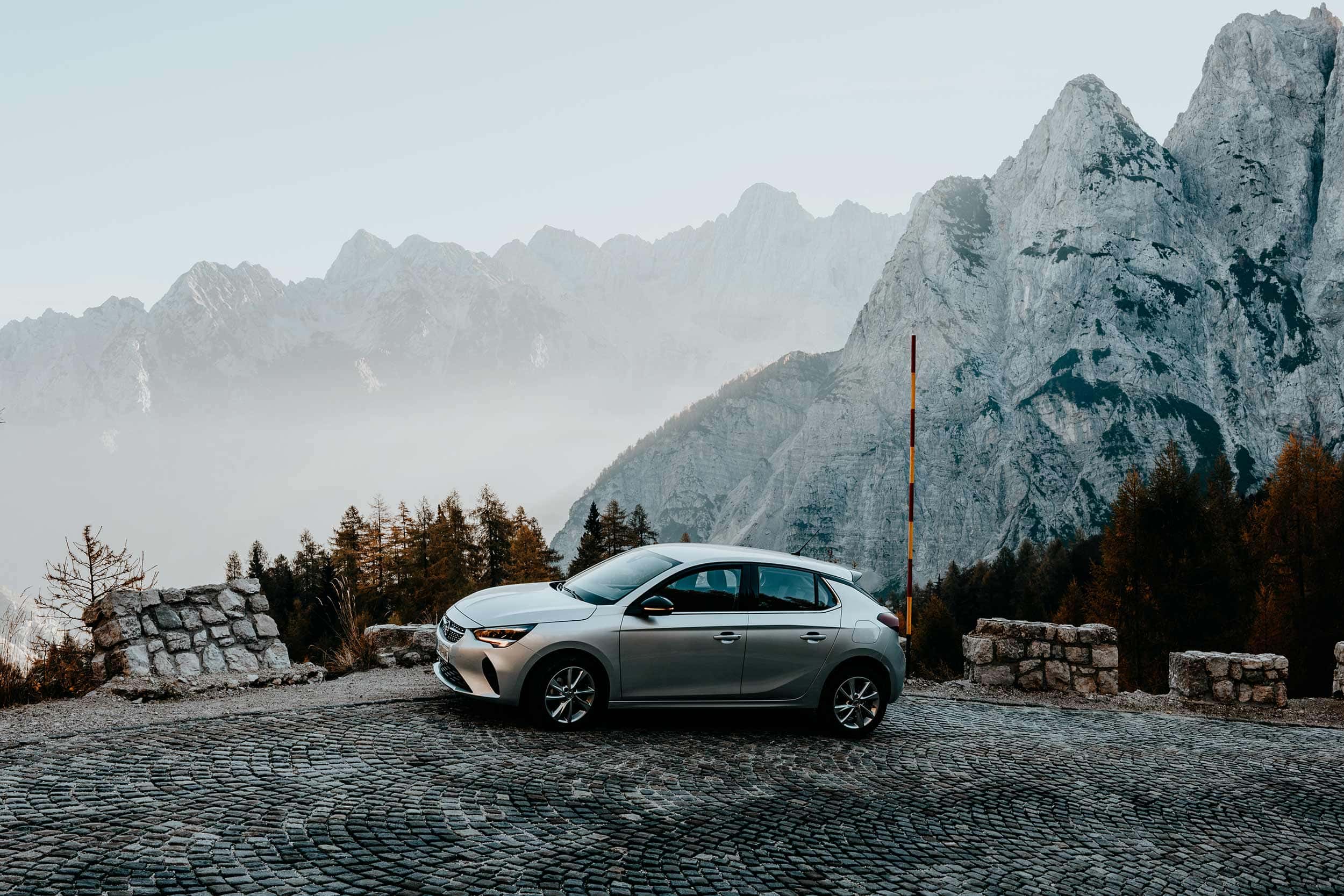
Where is the Vrsic Pass?
The Vrsic pass is a 1,611m high mountain road amongst the stunning Julian Alps in the northwest of Slovenia.
With exactly 50 hairpin turns, this stunning mountain pass connects two of Slovenia’s most popular areas; Kranjska Gora and the Soca valley.
Those who’d like to conquer the Vrsic Pass can access the road from Trenta or Kranjska Gora, which makes it an exceptional addition to your road trip through Slovenia.
About the Vrsic pass
The winding mountain road of the Vrsic Pass has been around for more than a hundred years, and has a rich history that dates back as far as World War 1.
But sadly, much of its history is a rather tragic one.
Throughout World War I, the Vrsic Pass served as a crucial supply route for the Austro-Hungarian soldiers battling the infamous Isonzo Front; one of the most brutal battlefronts of the Great War, where a total of twelve battles took place.
Given the importance of this route, the army drafted roughly 10.000 Russian prisoners of war to improve and maintain the Vrsic pass throughout the war.
It was an utterly gruelling task, as it required the prisoners to work under extremely harsh conditions, which, sadly, resulted that many of them lost their lives in the process.
On March 8, 1916, more tragedy struck, when heavy snowfall triggered an avalanche which wiped out the entire camp of prisoners, leaving a death toll of over 300.
At present, the road serves as a war memorial to the lost soldiers, while also being one of the most scenic stretches of pavement in the country, where fifty adrenaline-inducing hairpin turns guide travellers from one Alpine valley to another.
With a height of 1,611m, the Vrsic pass is deemed the highest mountain pass in the whole of Slovenia, making it an incredibly popular destination on any Slovenia itinerary.
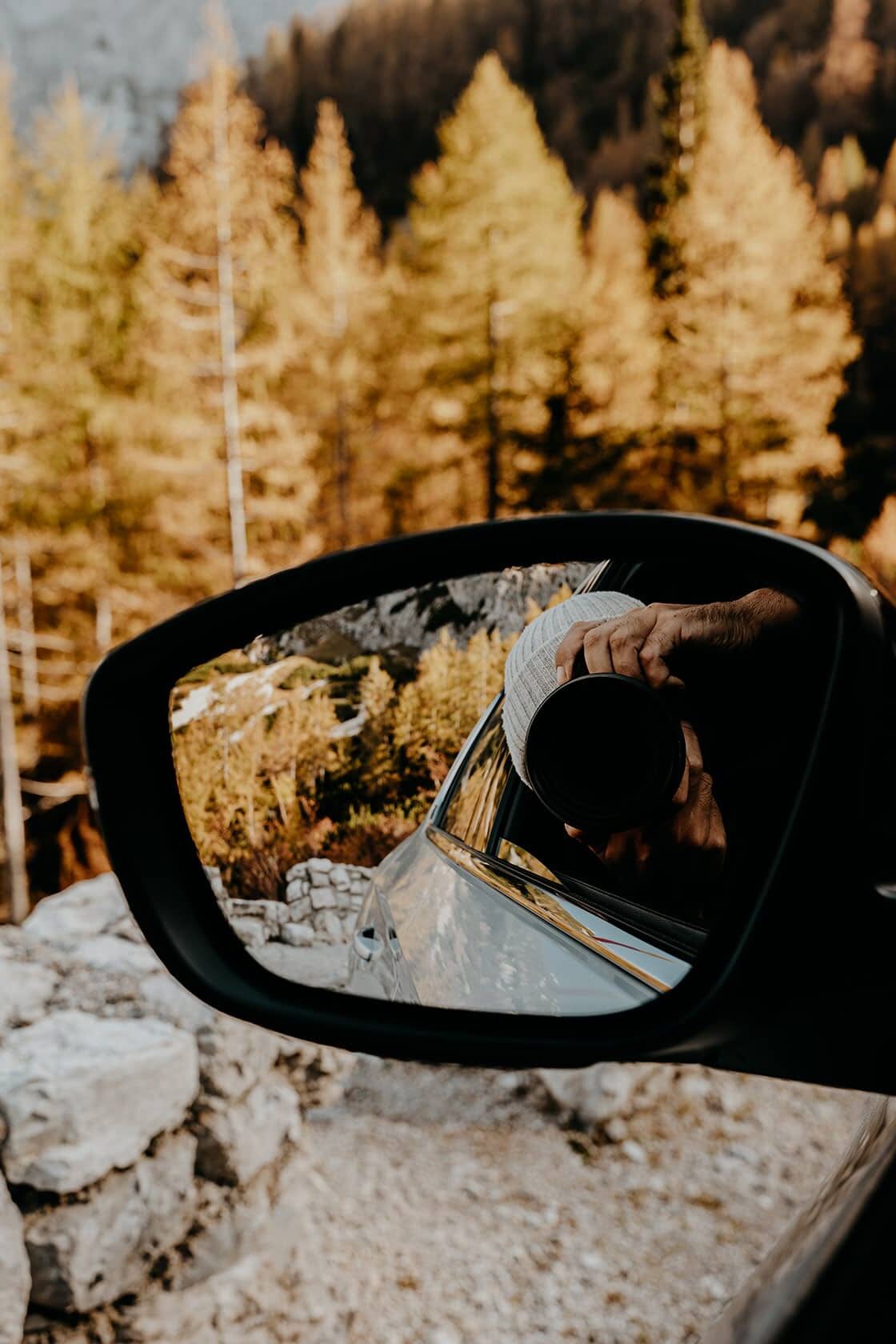
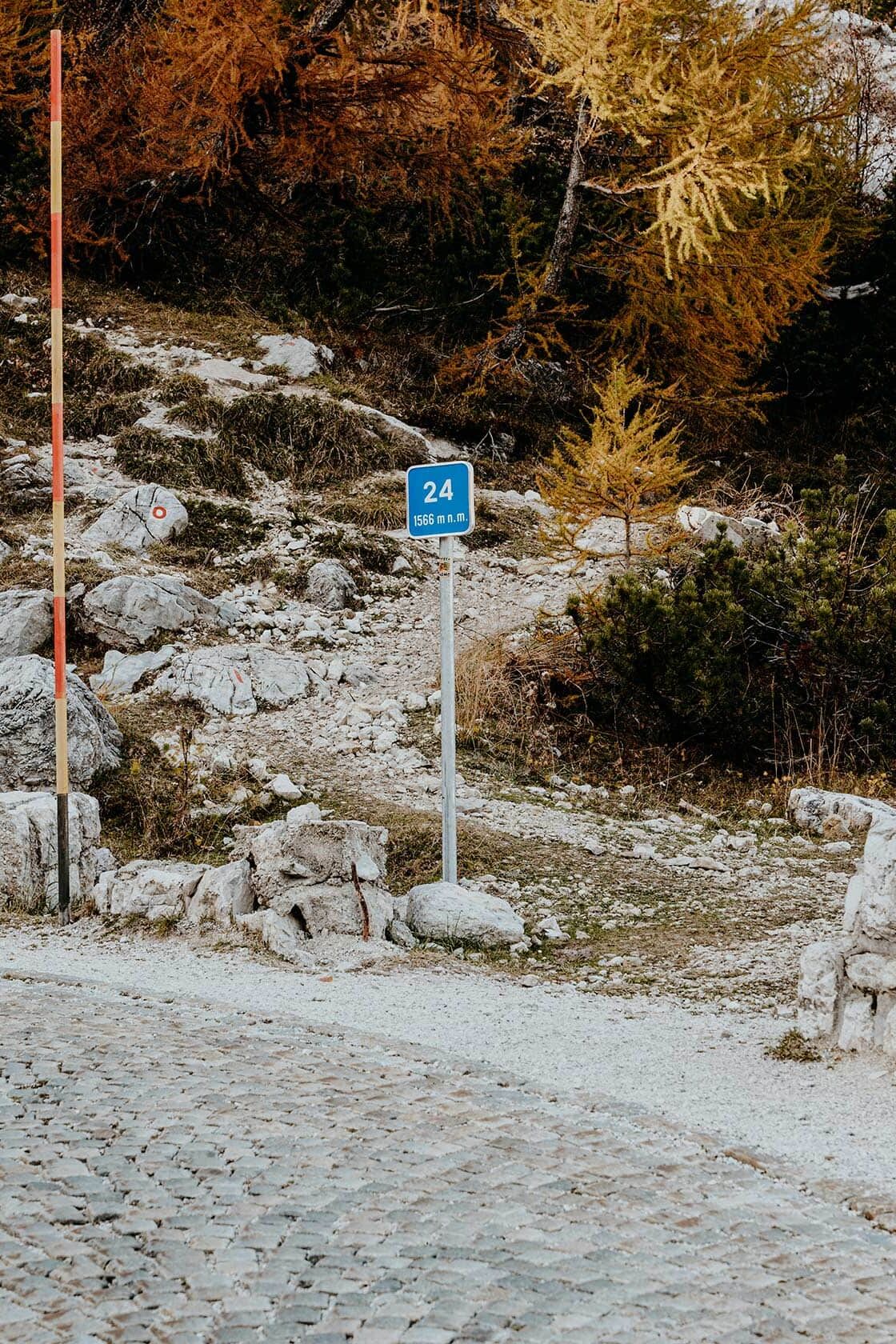
Driving the Vrsic Pass | Where to stop and what to see
Admire Lake Jasna before taking on the Vrsic Pass
While it’s not officially on the Vrsic pass, I do highly recommend dropping by the incredibly scenic Lake Jasna, before zigzagging your way along the winding roads of Vrsic.
Nestled in the foothills of the Jullian Alps, Lake Jasna is a set of two interconnected lakes, surrounded by the stunning mountain peaks of the Triglav National Park, including that of Mangart, Jalovec and Prisank.
Make sure you spend a few moments around the lake and witness how the crystal clear water acts as the perfect mirror to reflect the spectacular peaks of Spik, Razor and Prisank.
After taking in the beauty of Lake Jasna, it’s time to take on the somewhat challenging, yet extremely rewarding drive along the Vrsic pass.
Where | Lake Jasna
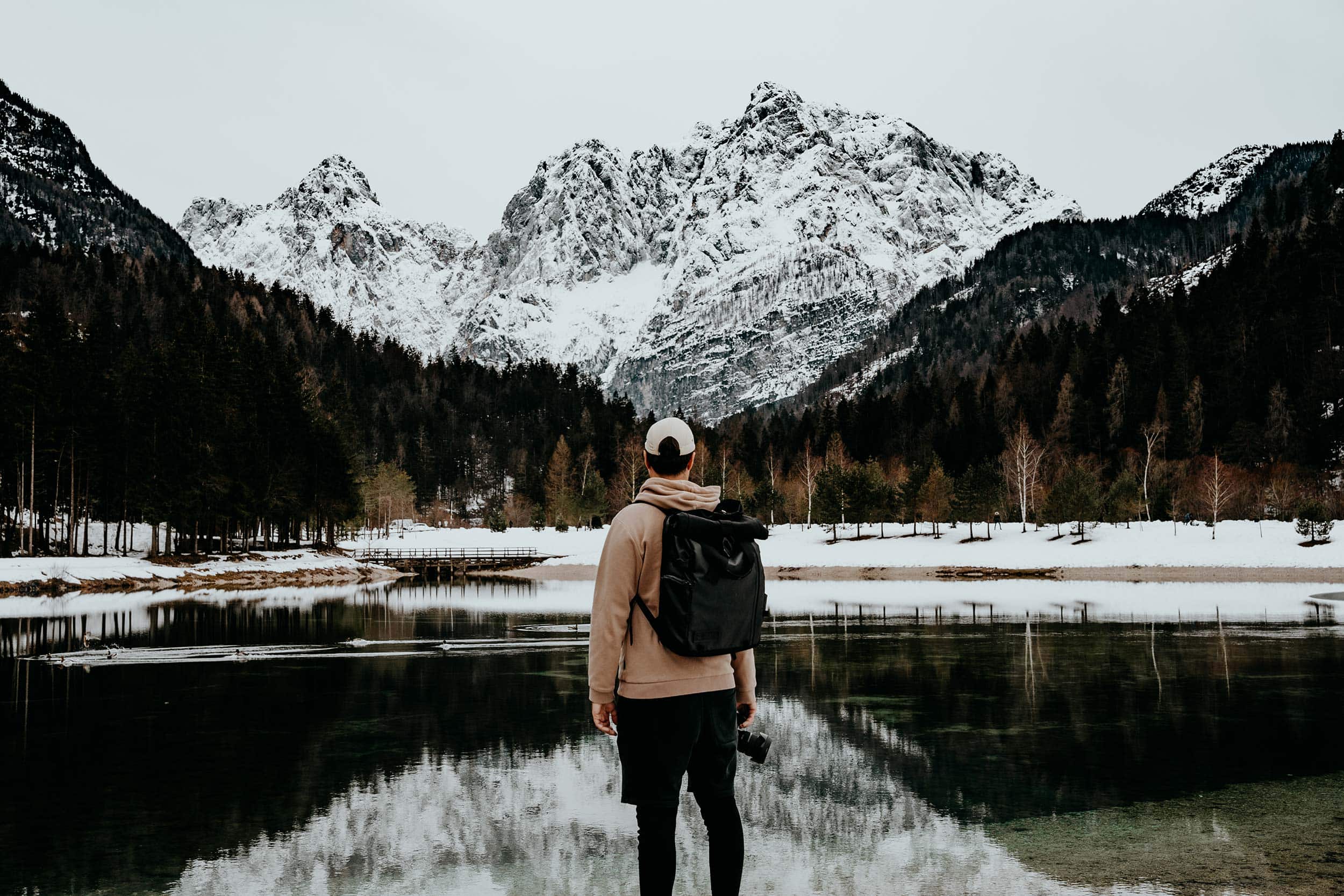
The Russian Chapel
Situated just after hairpin turn #8 from the Kranjska Gora side, the Russian Chapel is a small wooden chapel built in memorial of the Russian prisoners of World War 1, who died here in the process of constructing the pass.
This traditional Russian orthodox chapel is dedicated to Saint Vladimir and was built in the year 1917 by the prisoners who survived the avalanche that had struck the area.
While the chapel is a relatively simple structure, I have to say that it’s still very authentic and impressive, making it an essential stop for anyone driving the Vrsic pass.
Though its purpose is to reflect on the past and honour those who died, the church itself is also the perfect subject for some aesthetically pleasing Instagram shots.
Given the chapel is somewhat of a blink-and-you-miss-it spot, I’d advise keeping an eye out for a blue sign with #8 on it, as the chapel is hidden in a dense forest right after that turn.
Where | The Russian Chapel
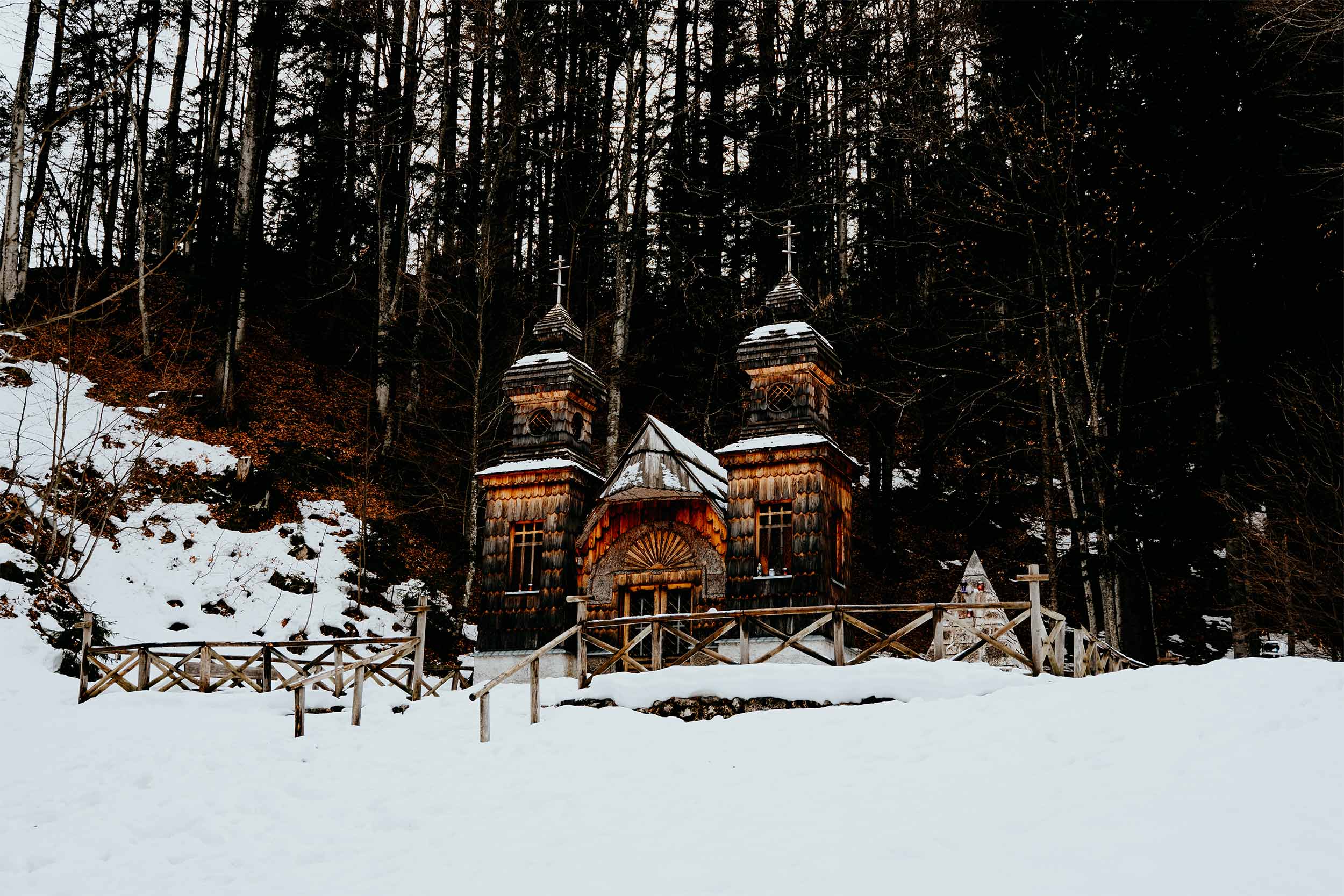
Prisank Viewpoint
The Prisank viewpoint is one of the most popular stops along the Vrsic pass, given it is often referred to as the ideal gateway to the stunning nature of the Triglav National Park.
From Prisank, you can explore Ajdovska Deklica (Heathen Maiden), a carved-out rock formation that looks like the face of a female, as well as the famous Prisank window, which is the best-known mountain window in the Julian Alps, with a size of roughly 80 by 40m.
Prisank is also home to a small mountain meadow with a wooden cabinet, which makes for an ideal place to sit down and enjoy lunch or a cup of coffee. The meadow is located right next to hairpin #16, where you will also find a small parking area.
This area is seriously stunning, so make sure you bring out your camera gear and snap some bangers while exploring the scenic mountain meadow.
Where | Prisank viewpoint
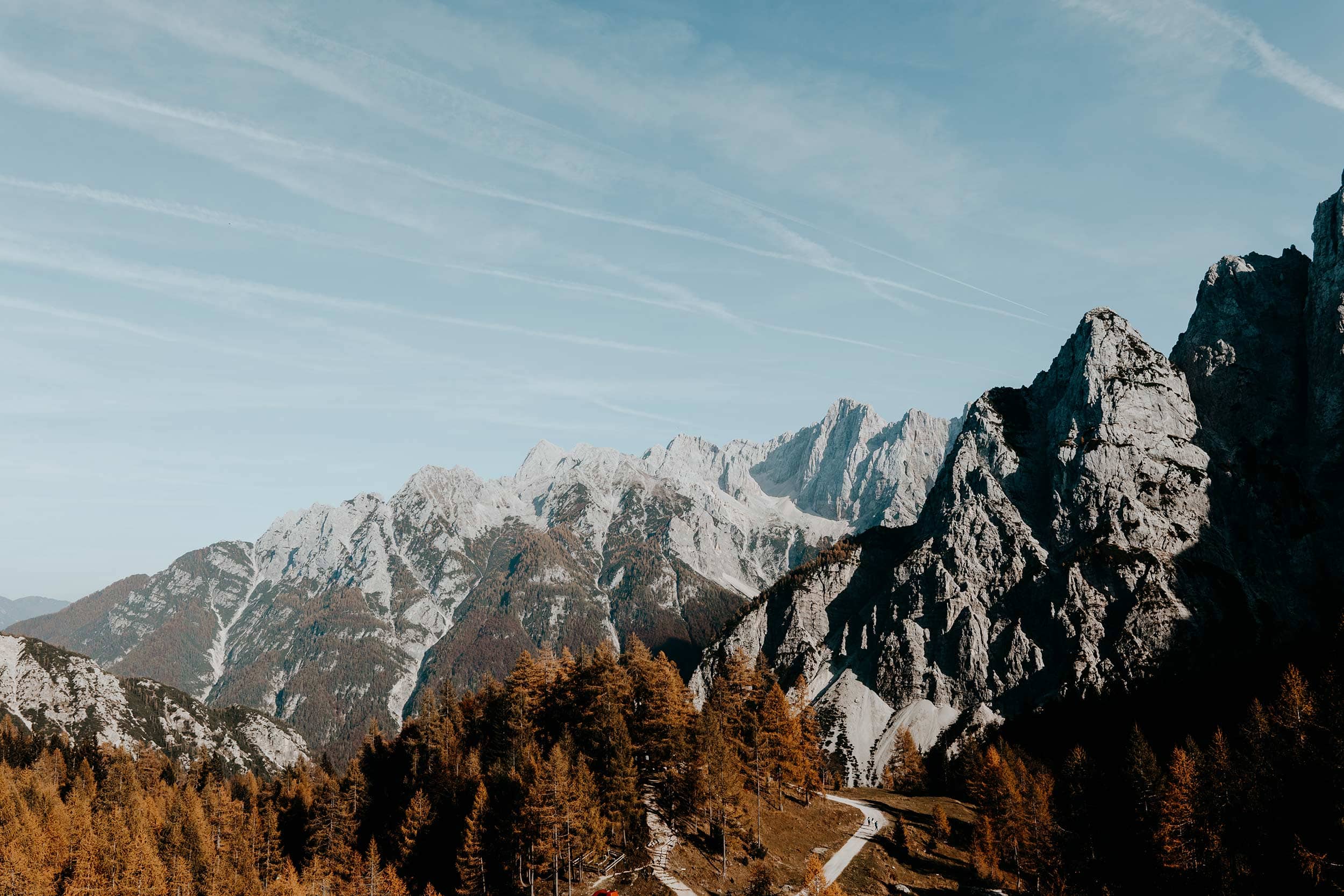
The Vrsic pass – the highest point of the road
After completing the first 24 turns, you’ve finally made it to the highest point of the road; the Vrsic Pass at 1,611 metres above sea level.
From this point, you’ll be welcomed by some of the best views in Slovenia, so drop your car in the parking, and seek out a quiet spot to take in the stunning panoramic vistas of the rugged peaks of the Triglav National Park.
It’s worth mentioning that the Vrsic pass gets extremely busy early in the day, given it’s marked as the starting point for most of the hikes in the Triglav National Park.
If you’re keen to grab a coffee or lunch before taking on the remaining 26 hairpin turns, there’s a mountain hut about 5 minutes from the parking, which serves delicious local food, and excellent coffee too.
Where | The Vrsic Pass
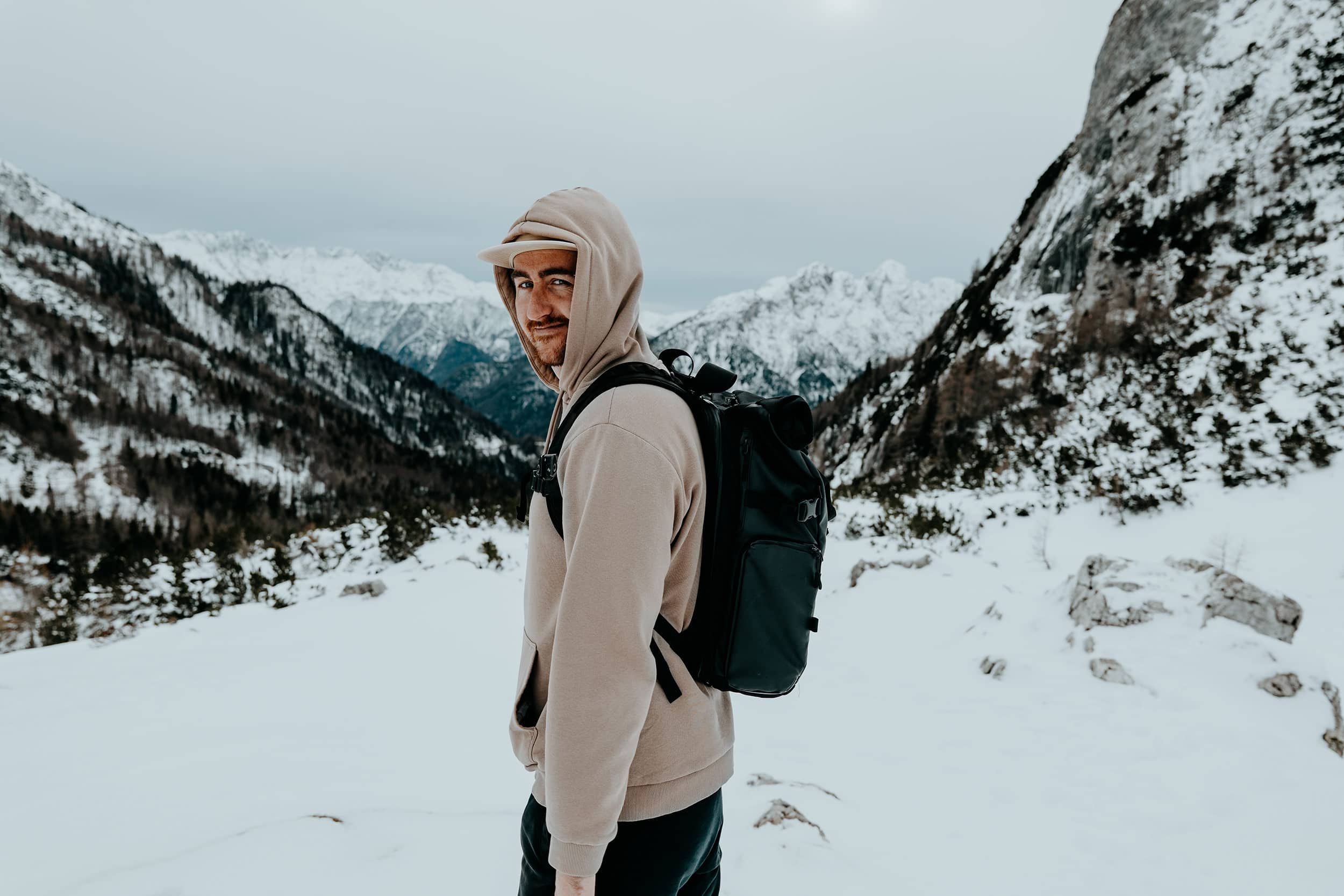
The upper Soca Valley
As you make your way down the winding roads of the Vrsic pass, the views of the Julian Alps slowly give way to the breathtaking beauty of the Soca valley.
With every hairpin turn, the road flattens out further, offering a relaxing drive that allows you to take in the natural grandeur that surrounds you.
But it’s not just the picturesque drive that will capture your heart.
Famous for its distinctive emerald green waters, the gushing Soca river is a constant companion as you make your way in the direction of Bovec, inviting you to stop at just about every turn.
Though the Soca valley breathes unparalleled beauty throughout, I believe there’s one absolute highlight here; the magnificent Soca gorge.
Make sure you stop here, and experience how the powerful Soca river carves its way through the steep, rocky walls of the gorge – it’s truly a spectacle to behold.
Where | The upper Soca Valley
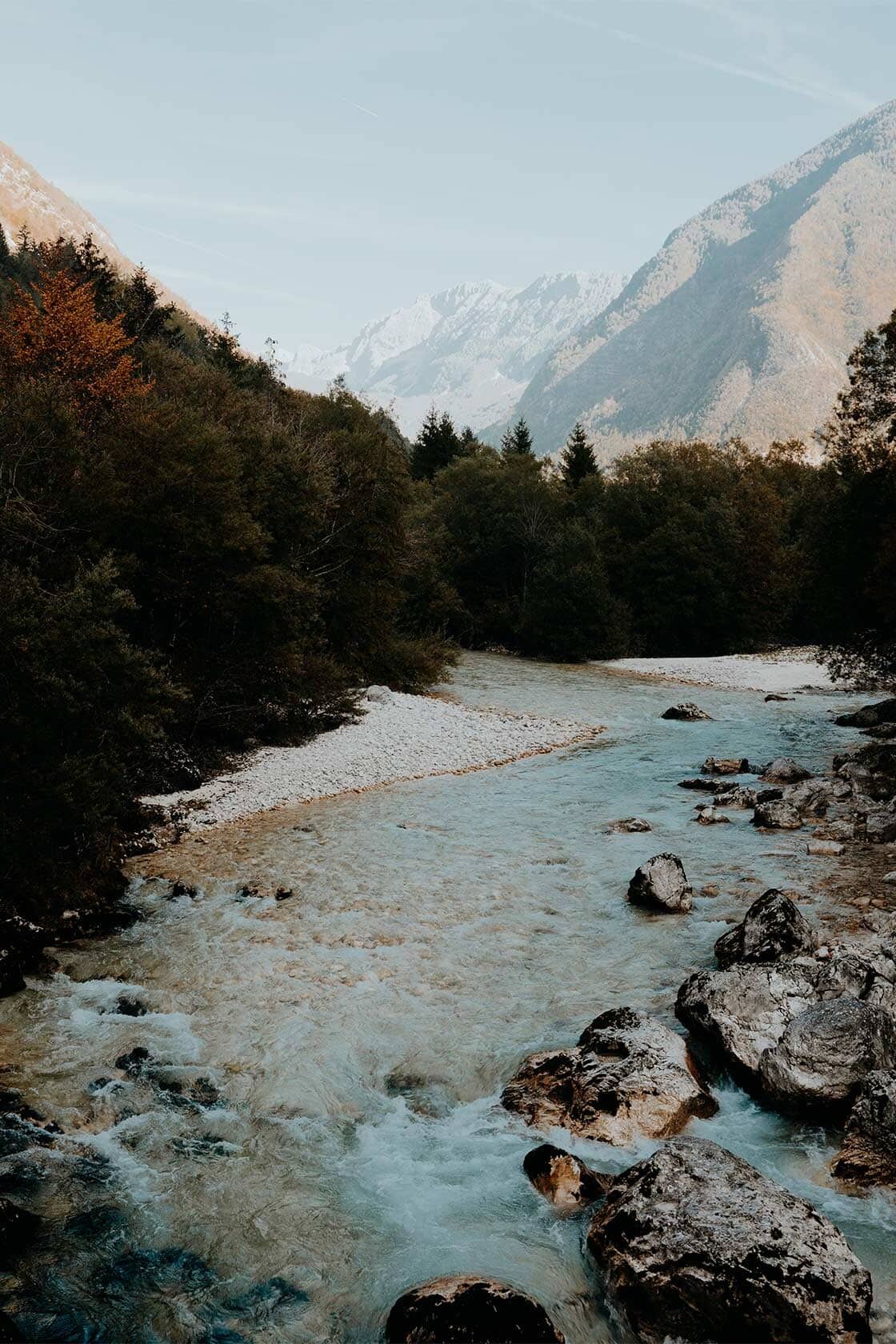
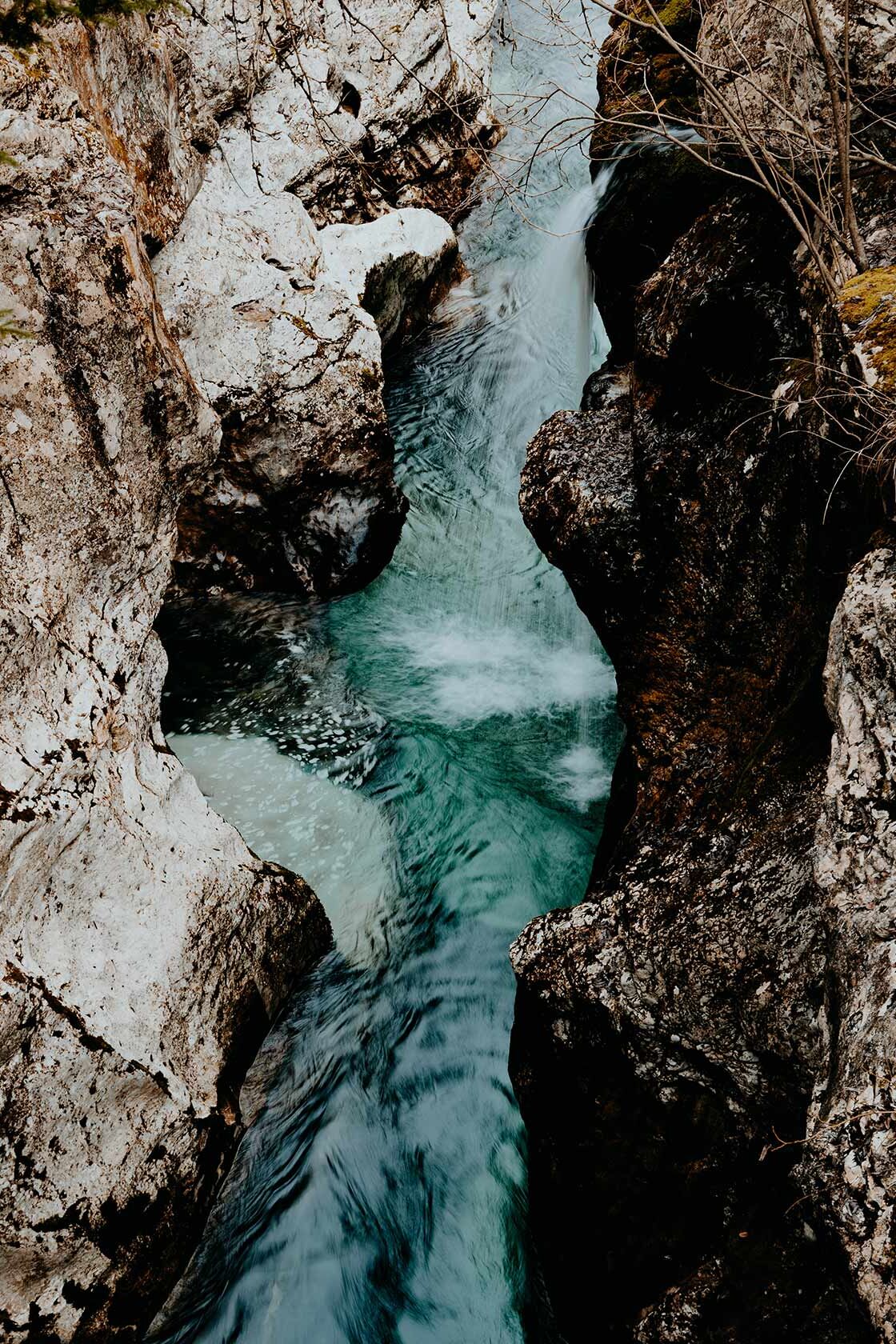
Conquer the road to Mangart Saddle
Those who want to turn it up a notch, continue driving in the direction of Mangart Saddle, Slovenia’s highest mountain road and easily one of the most captivating places in the country.
Marked by extremely narrow parts – just wide enough to fit one car, sharp hairpin turns, and steep drop-offs with sporadically a crash barrier, the road to Mangart is not for the faint of heart, especially during the peak summer months.
However, those who take on the challenge will quickly learn that the reward is absolutely worth it.
Once you arrive at the top of Mangart, you’ll be welcomed by breathtaking panoramic views of the surrounding peaks and valleys – you can even see the lakes of Fusine in Italy in the distance.
Hiking enthusiasts will be pleased to know that some of Slovenia’s most exciting hiking trails start exactly here, at Mangart Saddle.
One word of caution though; while I managed the drive to Mangart fairly effortlessly, I believe there’s nothing that can fully prepare you for the drive up.
For that reason, I’d highly suggest taking it one step at a time, and more importantly; don’t feel rushed by other drivers.
Where | Mangart Saddle
Read more | A guide to Mangart Saddle, Slovenia’s highest mountain road (coming soon)
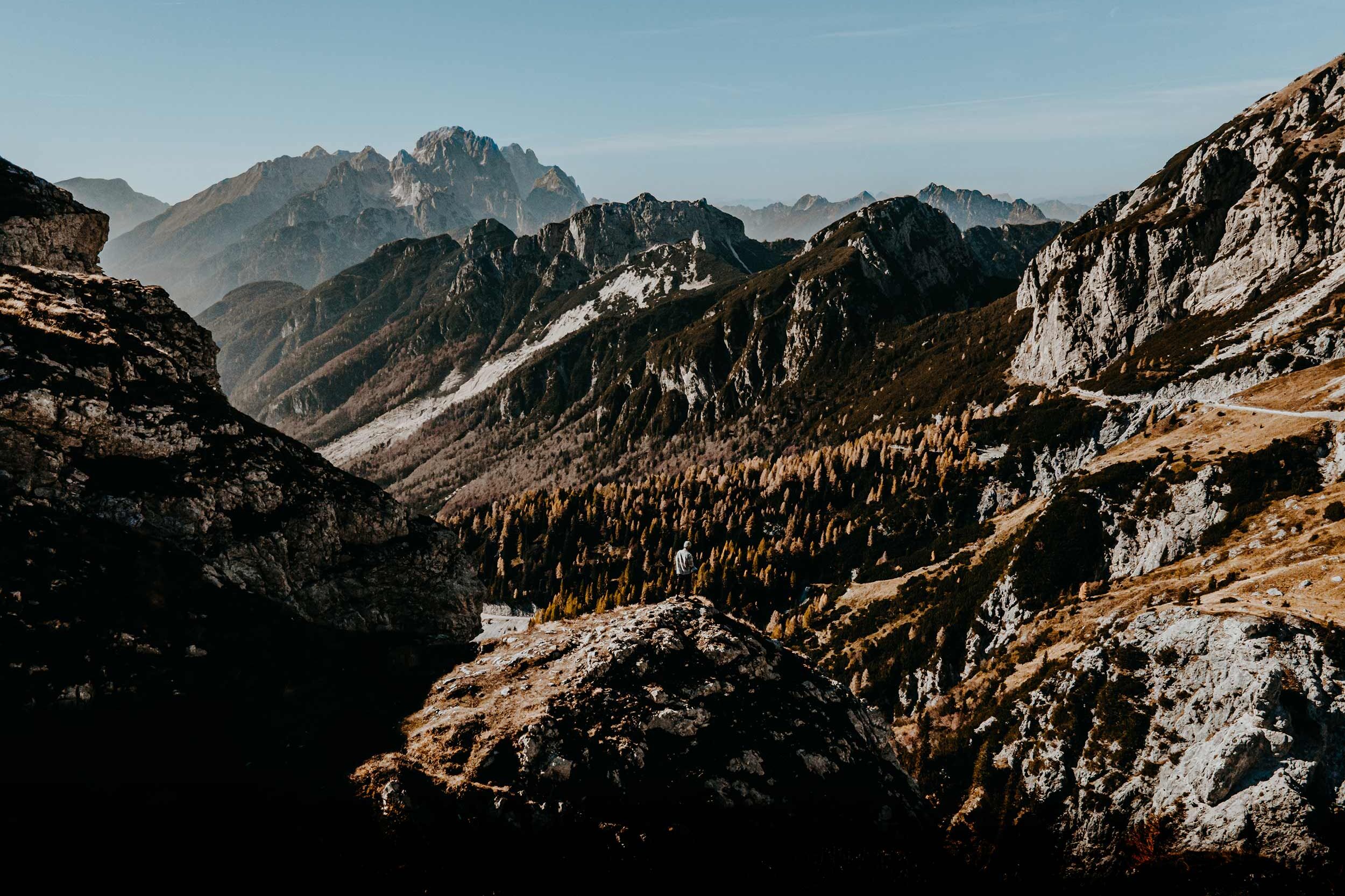
Things to know before driving the Vrsic Pass
Though I firmly believe that experienced drivers will have an easy time driving here, there are a few things that you should know before taking on the winding roads of Vrsic.
After driving the Vrsic pass twice (in autumn and winter), I’ve put together a comprehensive list of useful tips and tricks that will hopefully make your journey as comfortable as mine.
To prepare you for the journey, I’d highly recommend paying attention to the following:
The turns are steep and narrow | Do exactly as Kanye West raps in one of my favourite tracks of Ye’s Late Registration; drive slow, homie – I highly recommended to navigate the hairpin turns at a steady pace (10 to 15km/ph).
Driving experience is a must | To me, driving the Vrsic pass requires at least a few years of driving experience, since the somewhat challenging circumstances are far from ideal for those new to driving.
Go in the early morning | Like so many popular tourist places in the world, Vrsic pass gets extremely busy throughout the day, especially during the peak summer months. For that reason, I can’t stress enough to drive the road in the early hours, when the road is still relatively empty.
There could be road closures in winter | While I’d passed the Vrsic pass on a snowy Thursday in January, road closures are actually pretty common during the winter. In general, the road is open for around 7 months a year, depending on the severity of the winter months. Just to be sure, I’d advise keeping an eye out for the latest updates on road closures on the Vrsic pass here.
Bring lunch, snacks and coffee | While there is a restaurant on the Vrsic pass, I’d highly recommend packing your own lunch, a few snacks and a thermos filled with coffee, to enjoy in the midst of nature.
Keep an eye out for cyclists | Since the Vrsic Pass is popular among cyclists, you’ll share the road with lots of them, especially in the peak summer season. As a driver, it’s therefore pretty important to drive with caution, while also giving plenty of space in narrow areas.
Make use of the parking | Throughout your journey along the Vrsic pass, you’ll notice plenty of parking spaces, and I highly recommend making use of them. Although it’s tempting to take in the views from behind the steering wheel, I believe it’s essential to keep your eyes on the road at all times here. So, if you see something that piques your interest, don’t mind parking along the road, so you can experience it in a relaxing manner.
Limited phone connection is common | Even though Vrsic counts only one road, it is wise to set up your maps for offline use, since phone connection could be limited in the mountains. This is especially handy if you’re planning to do some hiking in the area.

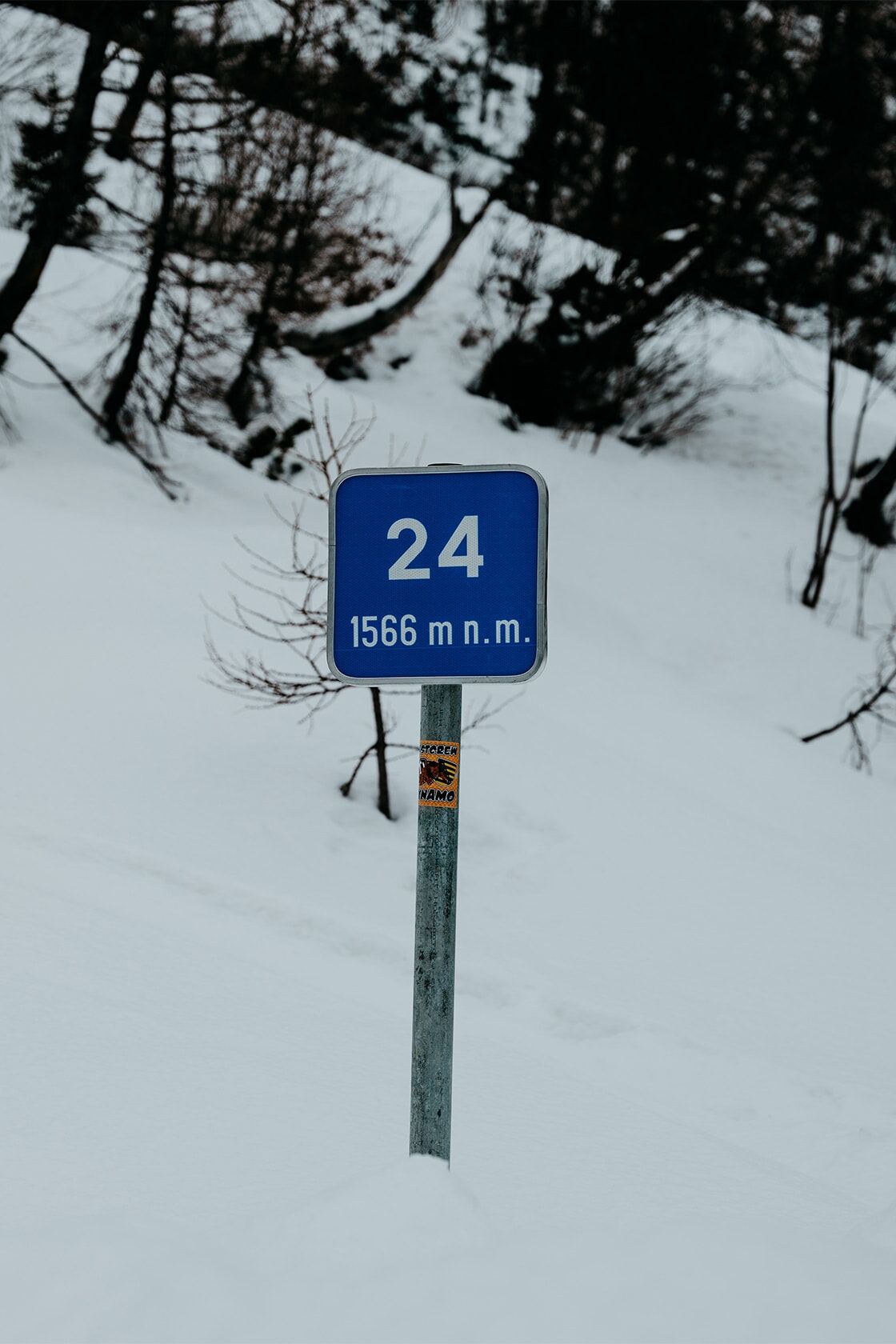
Best time of year to visit the Vrsic Pass
The road along the Vrsic pass is without question one of the most spectacular drives in Slovenia (Mangart I see you), as it showcases the Julian Alps in an utterly stunning way.
I’d highly recommend visiting the Vrsic pass between March and November, when the weather is perfect for hiking and explorations, and it’s almost guaranteed that the pass is open.
But to me, the absolute best time to visit the Vrsic pass is during the shoulder months of March to May and September to November, when it’s significantly less crowded.
I first visited the Vrsic Pass in the fall, and was blown away by the warm orange colours – it truly was an epic time of year to explore Slovenia.
While the Vrsic pass is stunning at any time of year, it is worth noting that the road closes during the winter months, due to heavy snowfall and the potential threat of avalanches.
Since these road closures depend on the severity of the weather conditions, I’d highly suggest checking if the pass is open here, before planning your visit.
Surprisingly, the Vrsic pass was open during my second visit in the midst of winter – so road closures are not set to a fixed period.
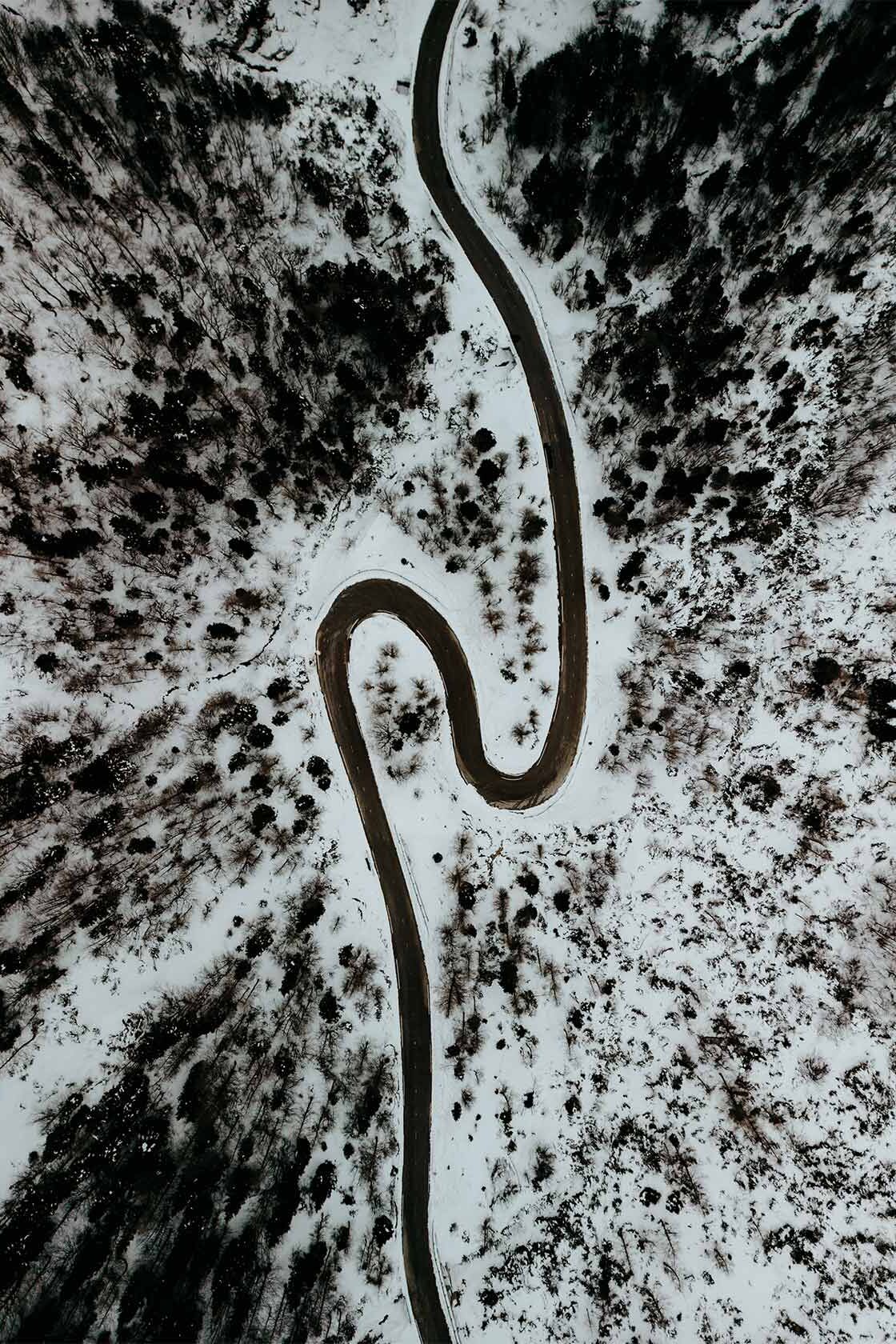
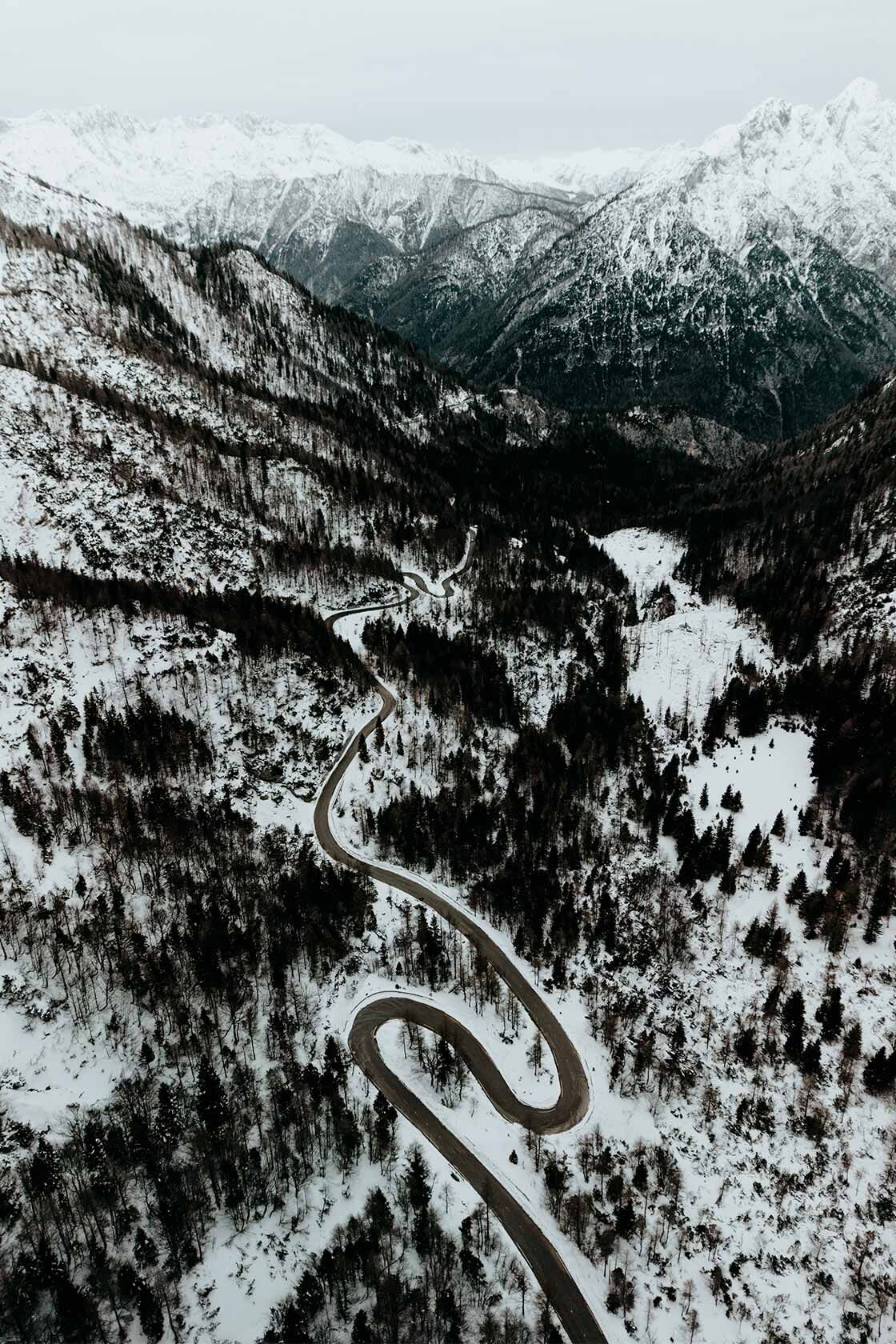
Renting a Car in Slovenia
If like me, you’re planning an epic road trip in Slovenia, I’d recommend sorting out a rental car in advance, so you have all the freedom to visit wherever, whenever suits you.
I always use Rentalcars.com to book my car rentals, as they offer all the major rental car companies, excellent service, and additional insurance – plus, it’s super easy to find yourself a deal here too.
I’ve also written a comprehensive guide on driving in Slovenia (coming soon), so make sure you give that a read too – you can find it here.
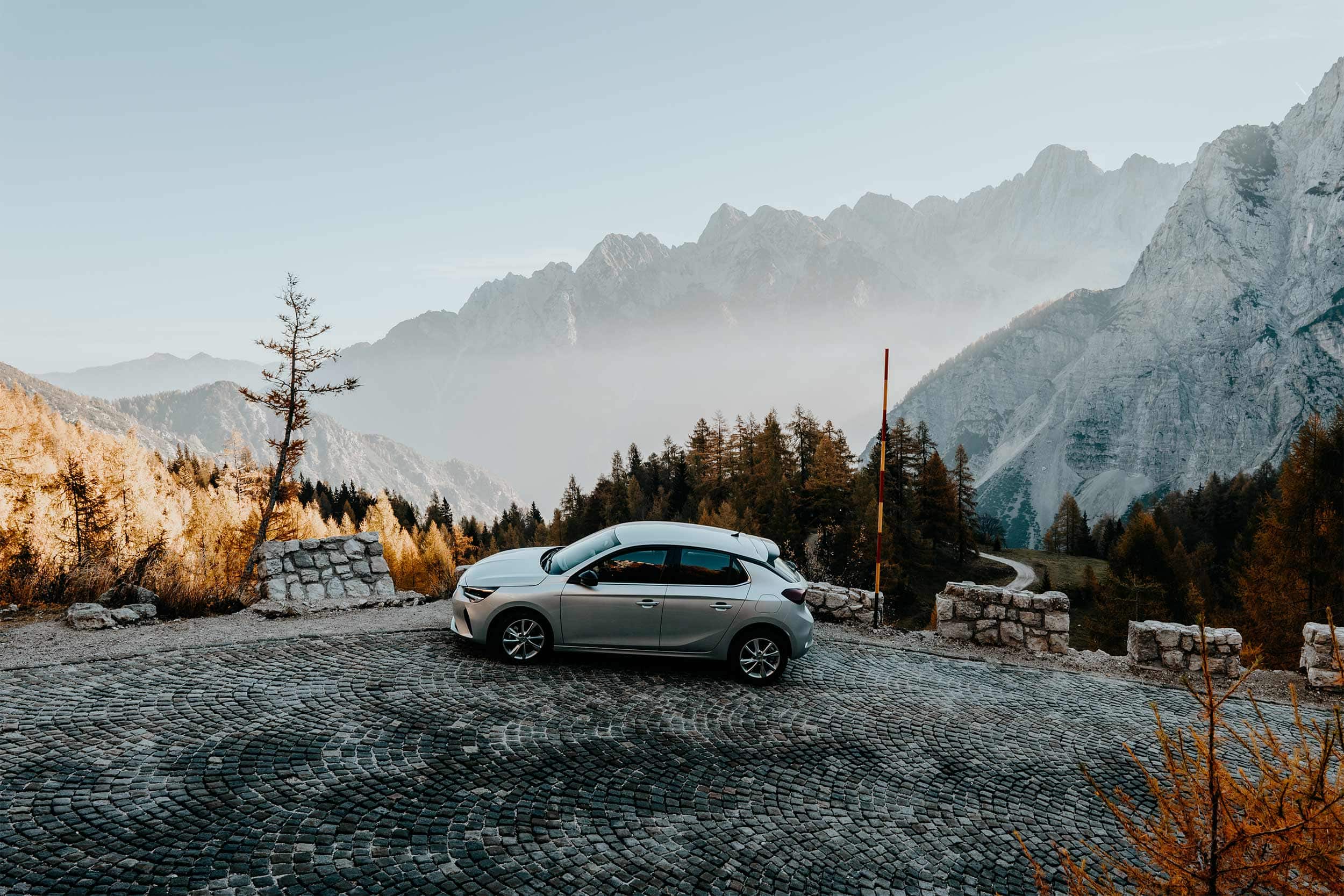
Where to stay near the Vrsic Pass
Given the Vrsic pass is more of a day trip between two popular areas, where you’ll plan to spend the night will highly depend on the starting point of your Vrsic pass journey.
Since I explored Kobarid, Bovec and the Soca Valley before taking on the Vrsic pass, it was quite logical to choose Bovec as my Vrsic pass base.
I stayed at Hotel Soca, a comfortable hotel with spacious rooms in the heart of Bovec, about 20 minutes drive away from the beginning of the Vrsic pass, making it a solid base from where to start your Vrsic pass adventures.
Depending on your itinerary (make sure you check out my Slovenia itinerary here), you could also opt for a stay in Kransjka Gora or the Soca valley, both are great places to include in your Slovenia itinerary.
STAY SAFE IN SLOVENIA | TRAVEL INSURANCE
Since Slovenia has plenty of adventurous activities on offer, I advise everyone to sort out good travel insurance before setting out on their own adventure.
While I believe that it’s unlikely to experience any troubles when following the advice in this guide, something unfortunate can happen at any time, whether it’s an injury, a stolen camera, or an accident on the road.
For travel insurance, I use Heymondo, as they offer full covid-19 coverage, as well as a handy app with 24-hour medical assistance. Make sure you check it out – readers of WTSW receive 5% off any insurance policy too.
Plan your Slovenia itinerary with these essential guides
March 19, 2023
11 Incredible things to do in Ljubljana, Slovenia's lively capital
Ljubljana, Slovenia’s small yet lively capital will quickly steal your heart.
You see, Ljubljana is relatively compact, which gives the city a unique and more intimate feel compared to other better-known capital cities on this side of Europe.
Often used solely as a stepping stone to popular destinations such as Lake Bled, Bohinj, the Soca Valley or Kranjska Gora, Ljubljana is a beautiful place in its own right and one where you’ll easily spend a couple of days.
While it’s home to only 300.000 people, the city sure knows how to charm and captivate, with no shortage of unique things to see and do – especially on a warm summer’s day.
From charming cobblestone laneways filled with quaint Art Nouveau and Baroque architecture to the iconic Dragon Bridge, the trendy restaurants and cafes along the Ljubljanica river to the city’s vibrant artistic atmosphere, Ljubljana is quite frankly one of Europe’s best-kept secrets.
In this guide, I’ll cover the absolute best things to do in Ljubljana, a few personal tips on where to eat and drink, plus my picks on where to stay.
If you choose to use any of the links on this page, I may receive a small commission at no extra cost to you. By using these links, you’ll have a direct impact on WTSW and my ability to continue to create free insightful travel content for you. If you find any of my tips useful, you can support me by buying a virtual coffee here.
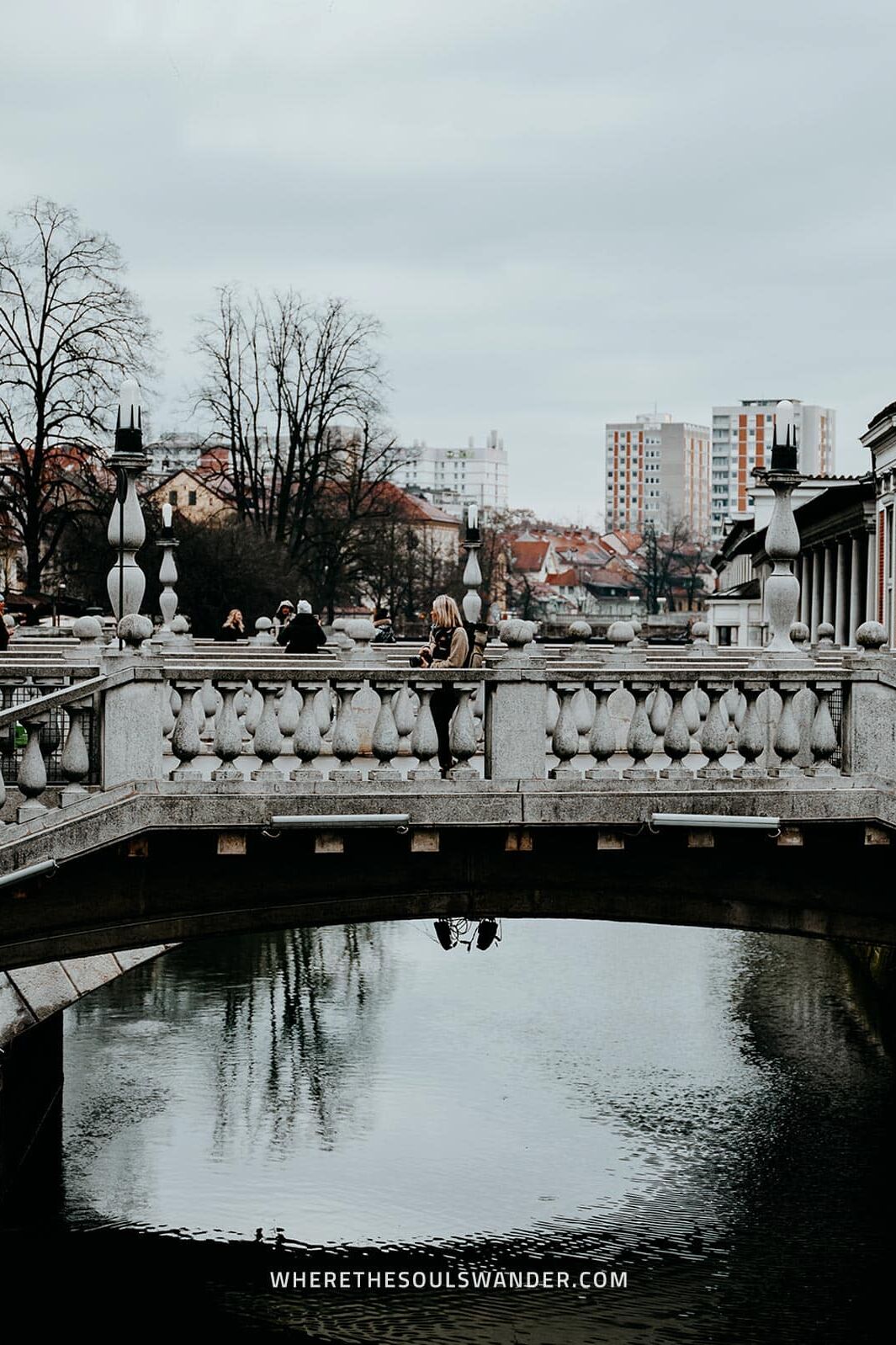
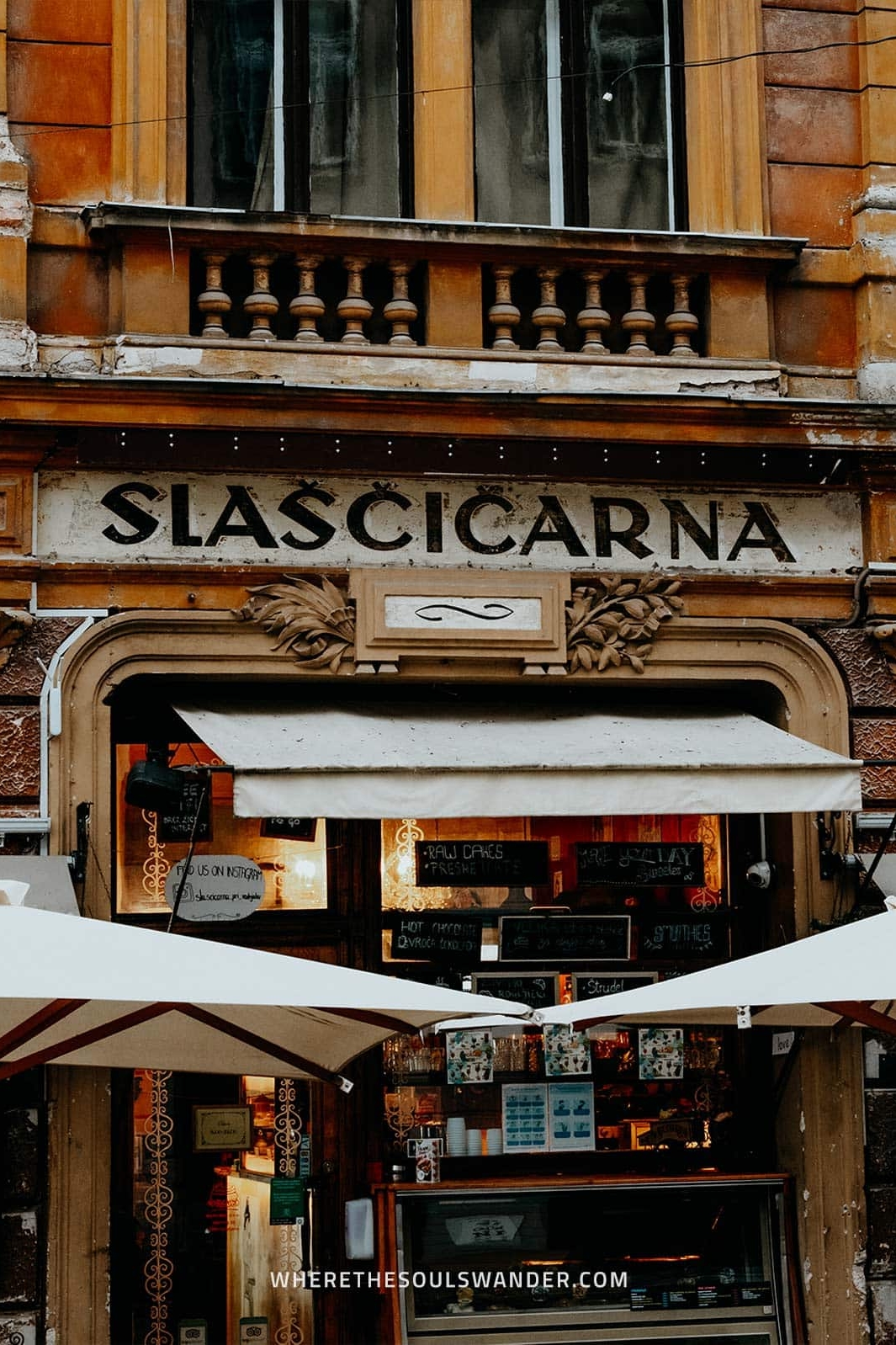
Where is Ljubljana
Situated in the heart of Slovenia and home to only 300.000 people, Ljubljana is the country’s small, yet lively capital city, as well as one of Europe’s best-kept secrets.
But despite that Ljubljana is rather compact in size, it’s extremely vibrant, with plenty of trendy cafes and restaurants, scenic cobblestone alleyways, and no shortage of captivating architecture dotted throughout the city centre.
Encircled by the Dinaric Alps, Ljubljana is also considered the least populated capital city in Europe, which to me, adds a special touch to this already amazing place.
Where to stay in Ljubljana
When it comes to accommodation, Ljubljana has no shortage of excellent options, catering to any budget and travel preferences.
Since Ljubljana is compact in size, most properties are situated in the old town, which is a great way to experience its authentic, medieval atmosphere.
Here are some of my personal favourites:
+ Stella Sky | Located right in the middle of Ljubljana’s old town, this super trendy apartment is well-priced, fairly spacious, fully equipped with a kitchen, and also has a lovely rooftop terrace with a pool.
+ Hotel Cad | Situated on the edge of Park Tivoli, about 2 kilometres from the city centre, the stunning Hotel Cad has been designed in an utterly stylish way, with fascinating details throughout.
Hotel Cubo | Another surprisingly affordable option, Hotel Cubo is situated only a stone’s throw away from all the best things to do in Ljubljana and offers modern rooms with fantastic breakfast included.
Atik Rooms | If you’re looking for a super comfortable apartment, without paying a fortune, look no further. With spacious rooms, a comfy bed, and its excellent location in the heart of the city, this option is great for those spending a few days in the city.
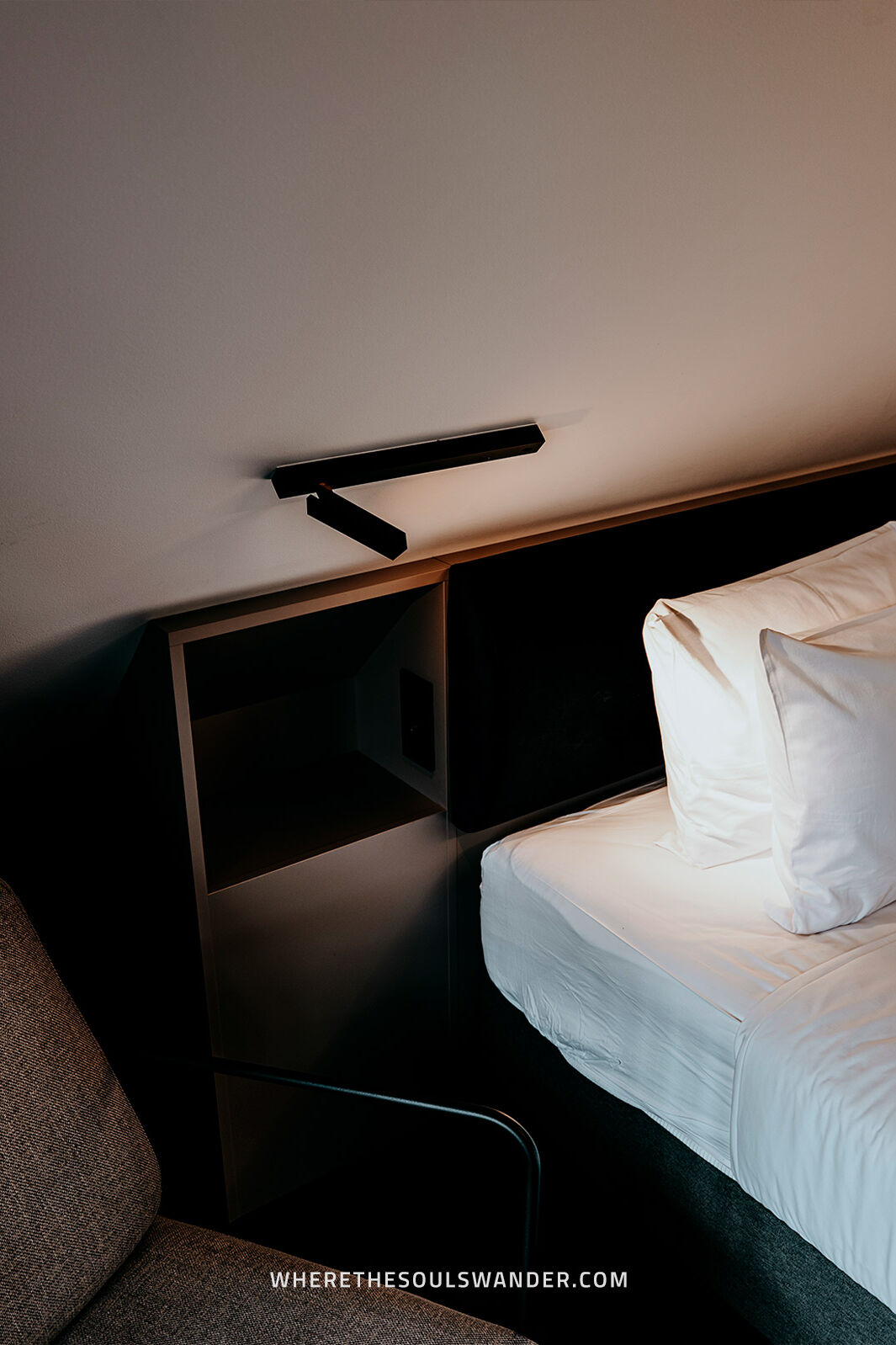
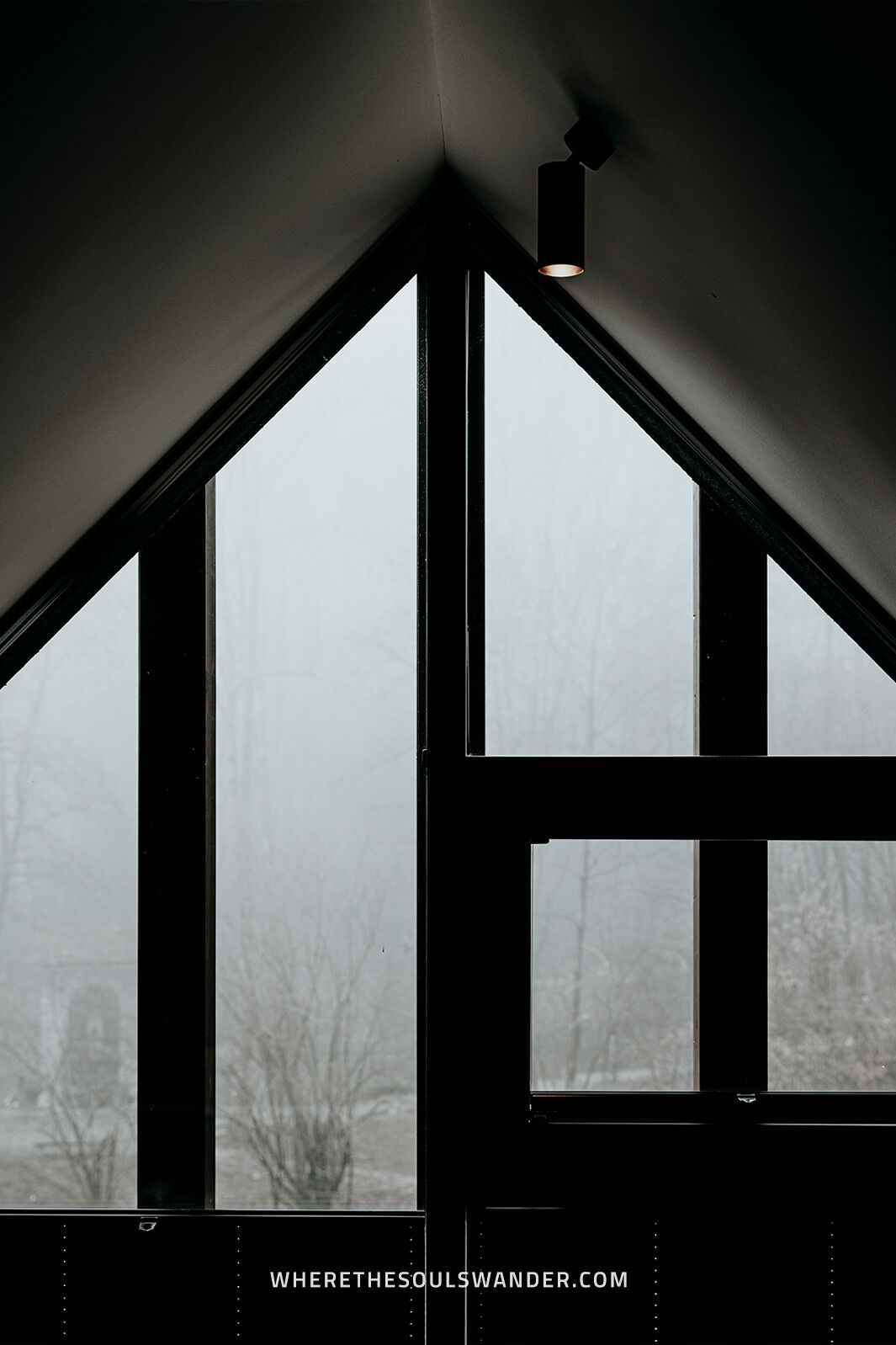
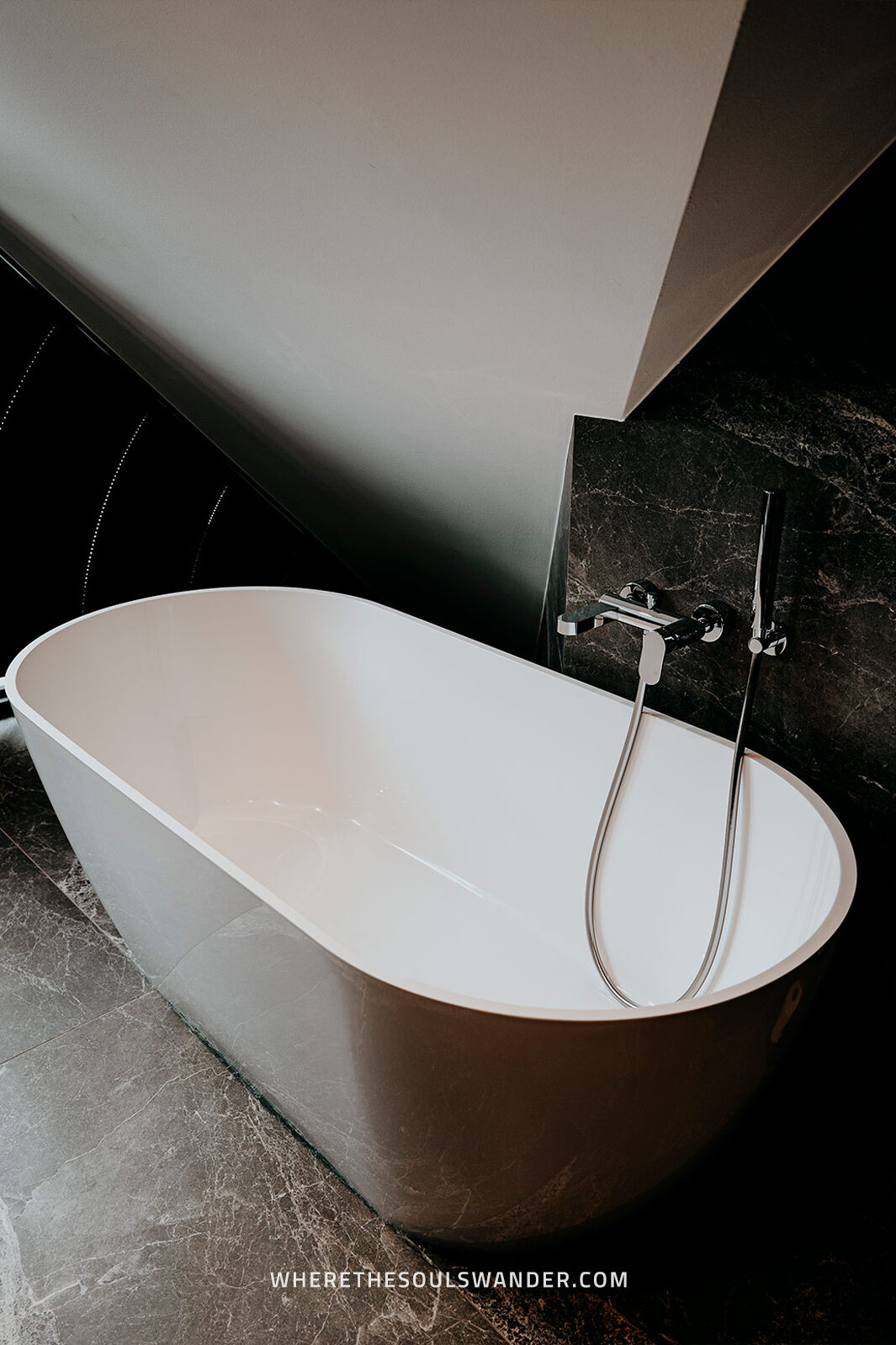
11 Incredible things to do in Ljubljana
1 | Meander at the old town’s incredible architecture
Defined by its quaint Art Nouveau and Baroque architecture, charming cobblestone laneways, and iconic bridges, Ljubljana is without question one of the most attractive towns in Europe.
While the old town itself is relatively compact, it has become my favourite part of town, given there’s no shortage of astonishing architectural highlights dotted throughout its narrow laneways.
These characteristic streets and alleyways are best explored first thing in the morning when the streets are nearly empty and the gloomy morning fog slowly reveals the town’s medieval charm.
Though it would be fair if I split out all that the old town has to offer as separate highlights, I decided to sum it up so you can easily tick them off all at once, if you’d like.
Below are my favourite places to find Ljubljana’s finest architecture.
Preseren Square | Located at the heart of the city and home to the impressive 17th-century Franciscan Church, the monument of poet France Prešeren, and the white-washed Triple Bridge that connects the old with the new, the Preseren Square is arguably one of the most beautiful squares in Europe.
Mestni Trg square | Adjacent to Preseren Square is Mestni Trg square, a spacious medieval square where you’ll stumble upon the Ljubljana Town Hall and the famous Robba Fountain.
Stari Trg and Gornji Trg | Only 5 minutes away from the hustle and bustle of Preseren Square, the Gornji Trg Square might be a more quiet alternative, but it’s equally as charming, with fine Baroque architecture and plenty of charming cafes and boutiques.
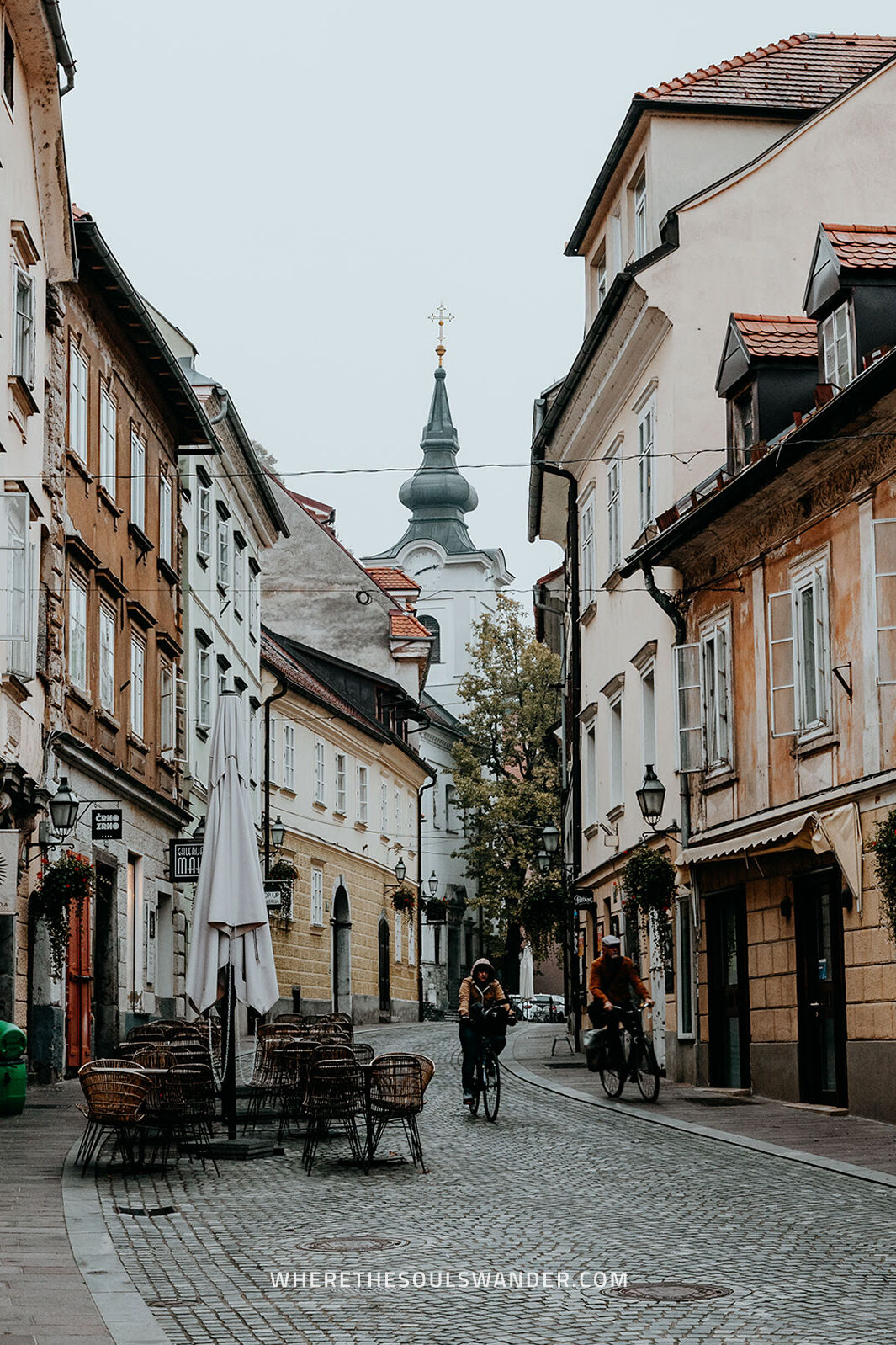
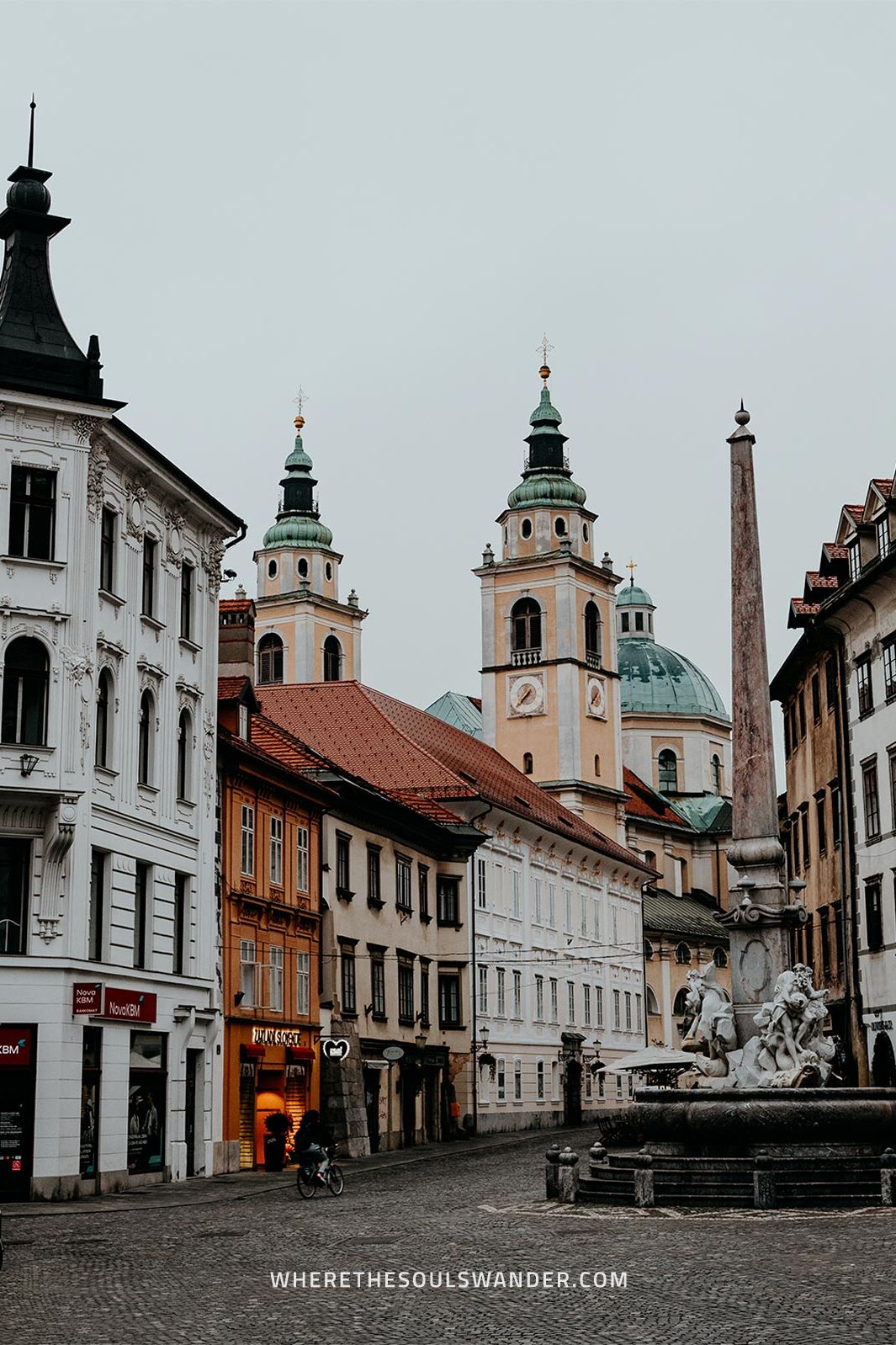
2 | Have a burger at Pop’s Place
As a burger enthusiast by heart, I have to admit; my first stop in Ljubljana was Pop’s.
Nestled on the banks of the Ljubljanica river, Pop’s Place is a trendy burger joint, offering a wide range of mouthwatering gourmet burgers, as well as an excellent selection of Slovenian, regional, and international craft beers.
My burger of choice was the classic bacon cheeseburger; a 200g locally sourced beef patty with aged English cheddar, Pop’s signature sauce, and maple bacon jam on a perfectly toasted homemade brioche bun – it was outstanding.
If you’re not feeling like eating a burger, Pop’s Place also serves authentic barbecue dishes, including slow-cooked smoked ribs, Asian-style chicken wings and grilled Spanish peppers with Maldon sea salt to name but a few.
All in all, Pop’s is a place of excellent vibes and flavours, making it a must-visit for any burger enthusiast spending time in Ljubljana.
Where | Pop’s Place
Opening hours | Daily from 1200 to 0000
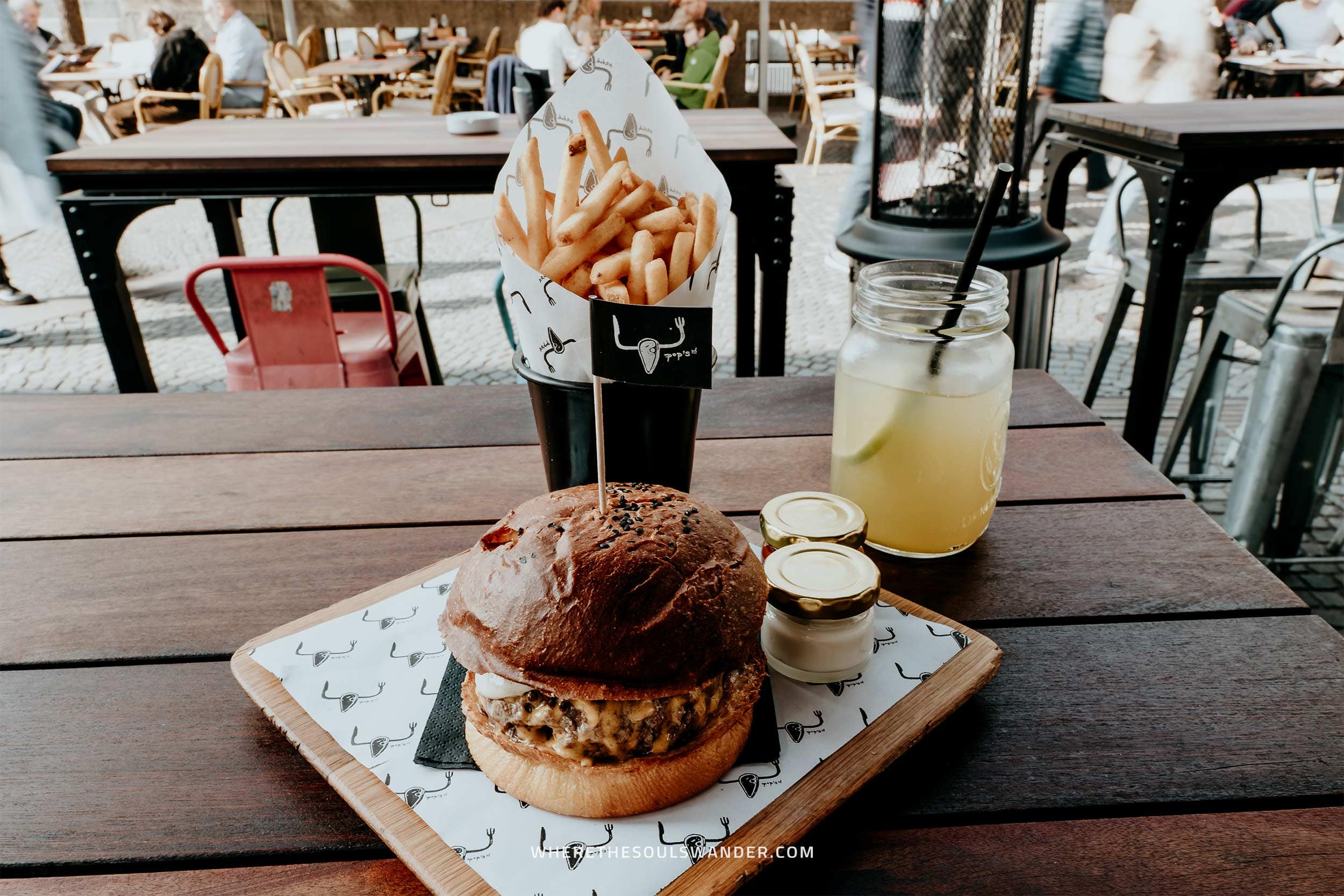
3 | Explore vibrant street art at Metelkova
If finding the dopest street art in an unexplored city gets your blood pumping, I’m pretty sure you’ll take lots of joy wandering through the vibrant neighbourhood of Metelkova.
Metelkova, with its unusual and somewhat atrocious appearance, is considered one of the best-known centres of independent artistic activity in Europe.
Situated in the heart of Ljubljana, Metelkova is a former military barracks turned cultural hub and is packed with vibrant street art, extravagant graffiti murals and contemporary art galleries, which makes it one of the more unique things to do in Ljubljana.
At night, Metelkova turns into a bustling place for those after a party, with underground raves, reasonably priced drinks and live Dj sets from both Slovenian and international DJs.
Not to mention, that you’ll find one of Ljubljana’s most unique accommodations in Metelkova; hostel Celica, a former Yugoslavian prison that has been transformed into a trendy hostel – talking about unique travel experiences.
All of this is discovered at just a 10-minute walk from the lively city centre, so make sure you pay a visit to this Ljubljana sightseeing gem!
Where | Metelkova
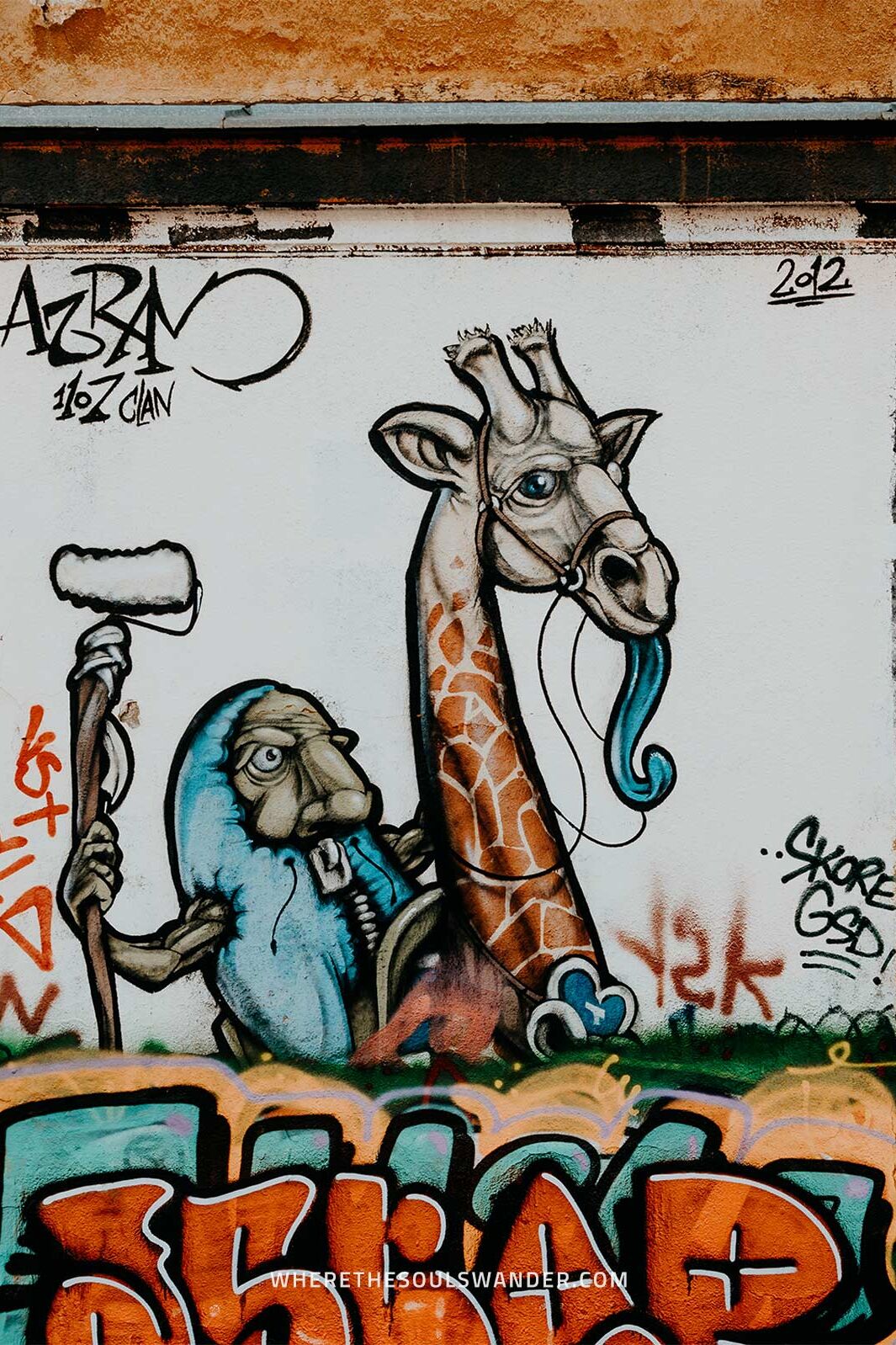
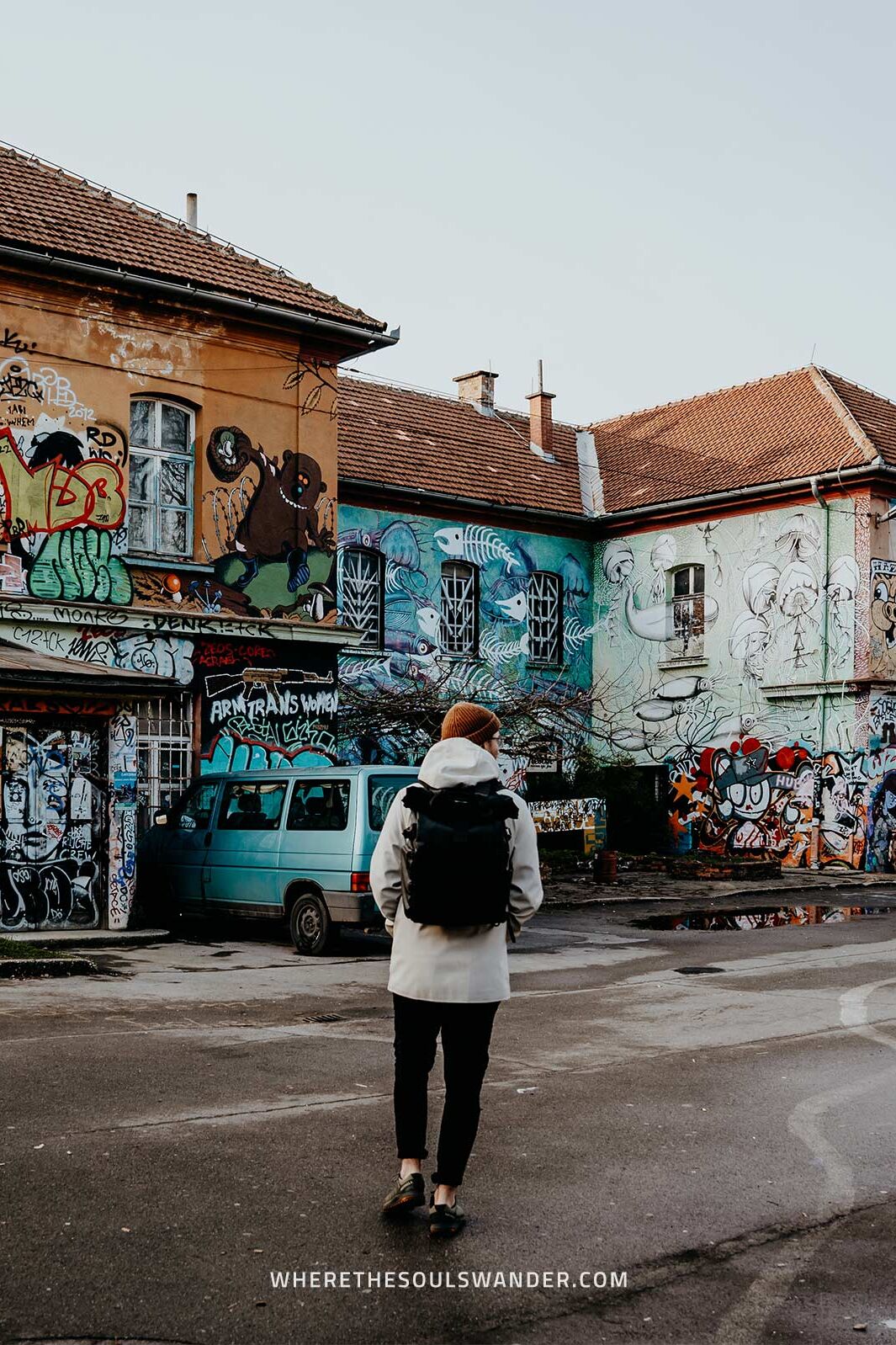
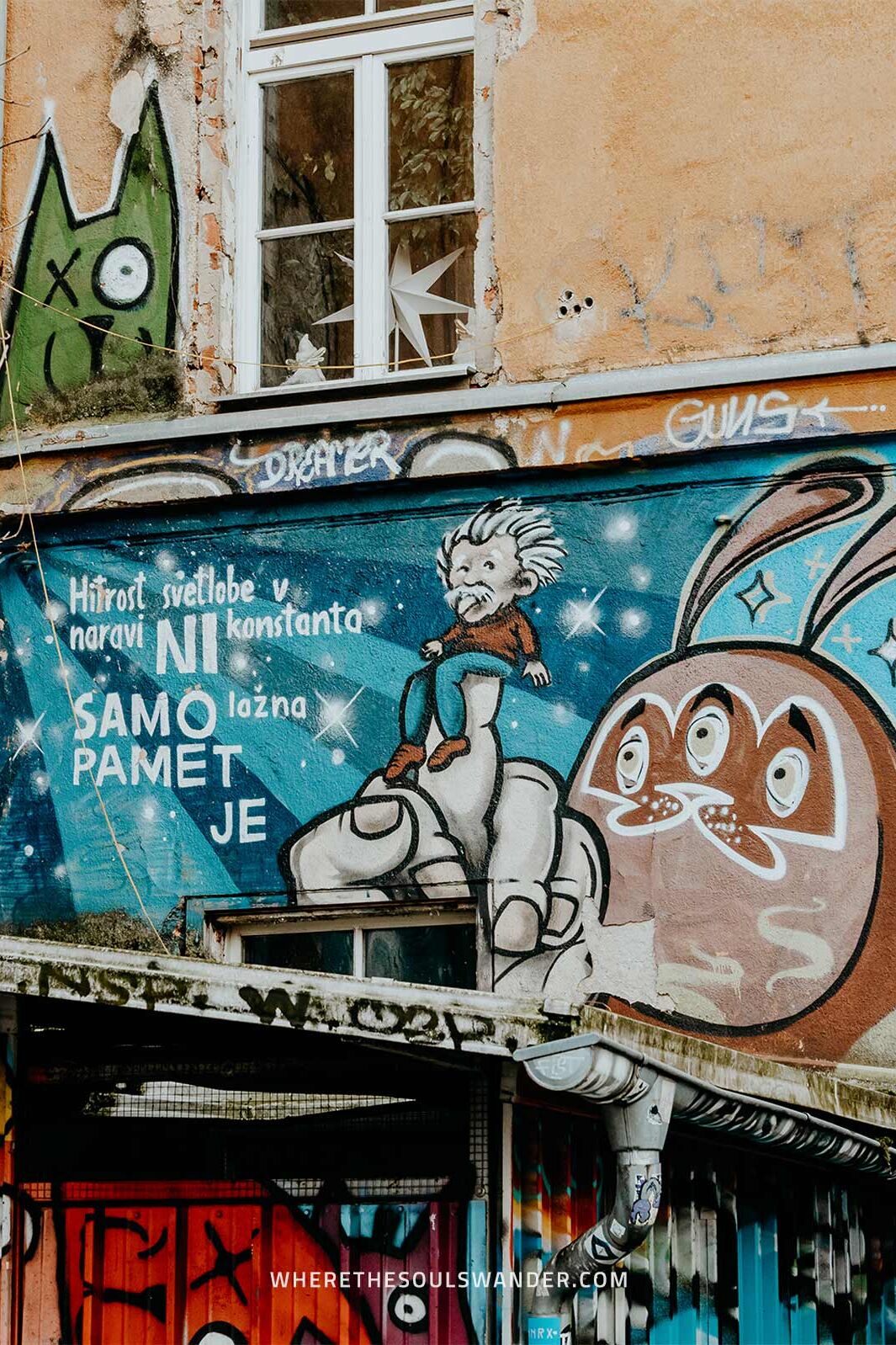
4 | Admire modern art at Moderna Galerija
Set within a stunning 1930s building designed by Edvard Ravnikar; one of Slovenia’s most notable architects, the Ljubljana Museum of Modern Art is fully dedicated to the works of modern artists.
At present, visitors to the Moderna Galerija can lay their eyes on some of Slovenia’s finest modern artworks, with an extensive collection of fascinating paintings, sculptures, photographs and graphic art on display.
Some of my favourite works in the museum are the acrylic paintings of the collection: Abstract Art and Visual Art Theory by Marijan Trsar.
The works that are on display represent the final stage of his explorations of abstract art, with a clear focus on colours that he admired from works of impressionists and post-impressionists.
Other highlights include the paintings of Tone Kralj and Stane Kregar, the graphics of France Mihelic and the sculptures of Jakob Savinsek.
So, if you have time to add a museum to your list of things to do in Ljubljana, I’d highly recommend spending some time at the Museum of Modern Art.
Where | Ljubljana Museum of Modern Art
Opening hours | Tuesday to Sunday 1000 to 1800
Exhibition Marijan Trsar | 22 December 2022 to 2 April 2023
Cost | €5,- per person
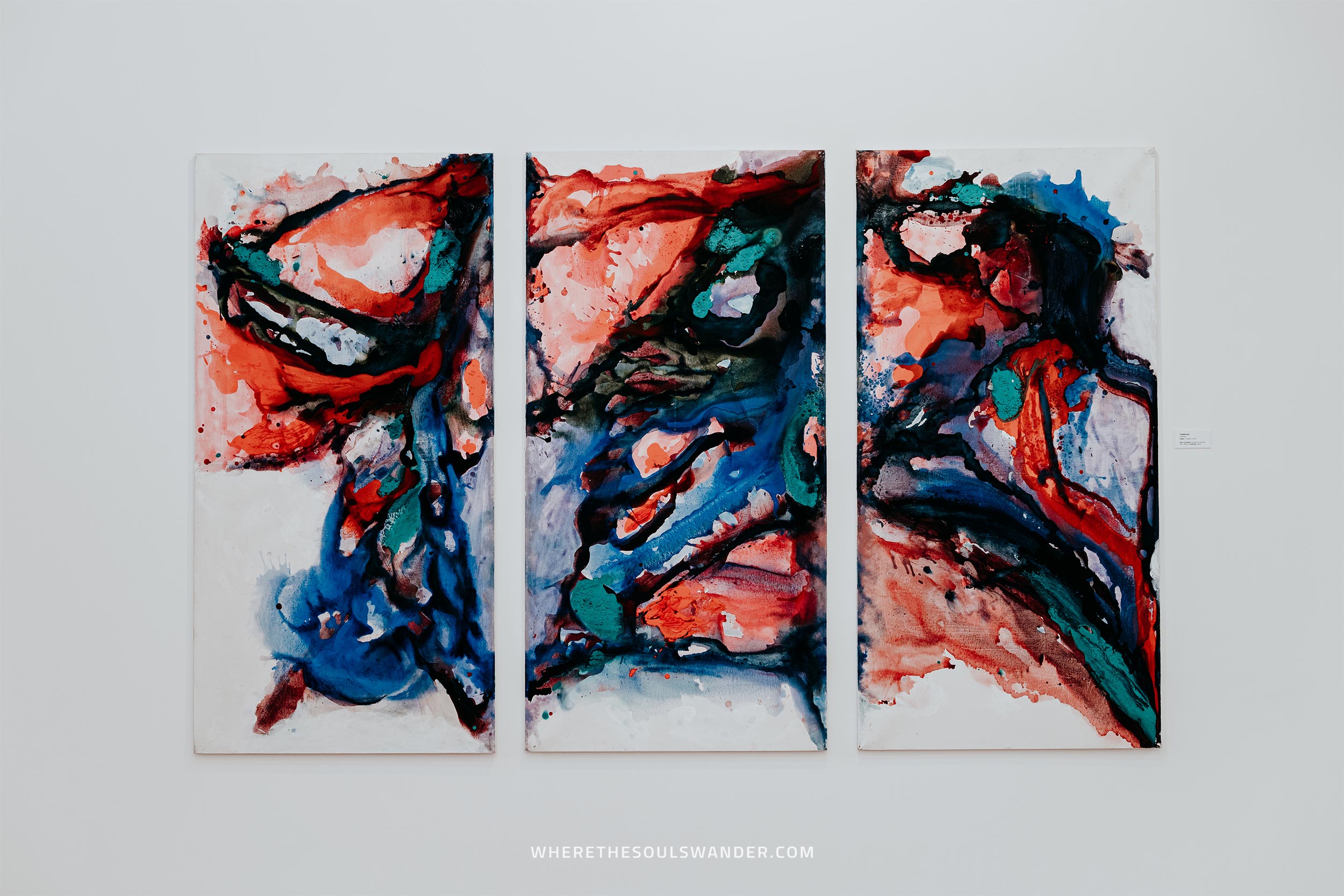
5 | Take in the views from the Nebotičnik Skyscraper
To get a better perspective of Ljubljana, make your way to the panoramic observation deck on the highest floor of the Neboticnik Skyscraper.
Build in 1933, this imposing building in neoclassical and art-deco style was once the tallest building in Yugoslavia and offers an extraordinary bird’s eye view of the city.
From atop, you’ll see some of the city’s most iconic landmarks, including the Ljubljana Castle, the Franciscan Church, and the Dragon Bridge. On a clear day, you can even see the majestic Julian Alps in the distance.
But it’s not just the views that make the Neboticnik Skyscraper one of the best things to do in Ljubljana.
No, another great part of the skyscraper (and somewhat of a hidden gem), is the extremely beautiful art-deco-style spiral staircase, which is truly one of the building’s most remarkable features.
There’s also a restaurant, bar and cafe set on the 12th floor, perfect for lunch or sunset drinks.
Where | Neboticnik Skyscraper
Opening hours | Daily 0900 to 0000
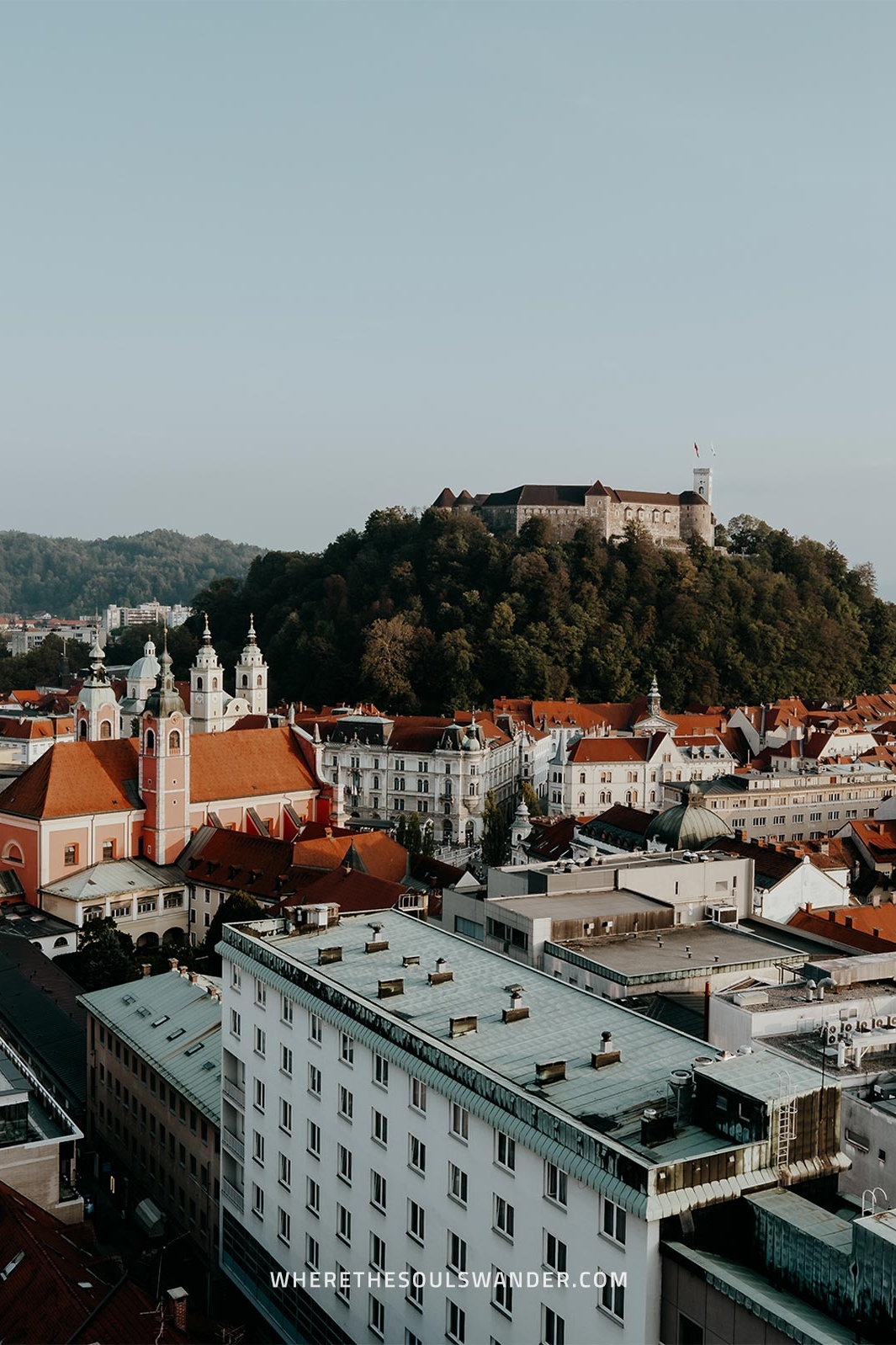
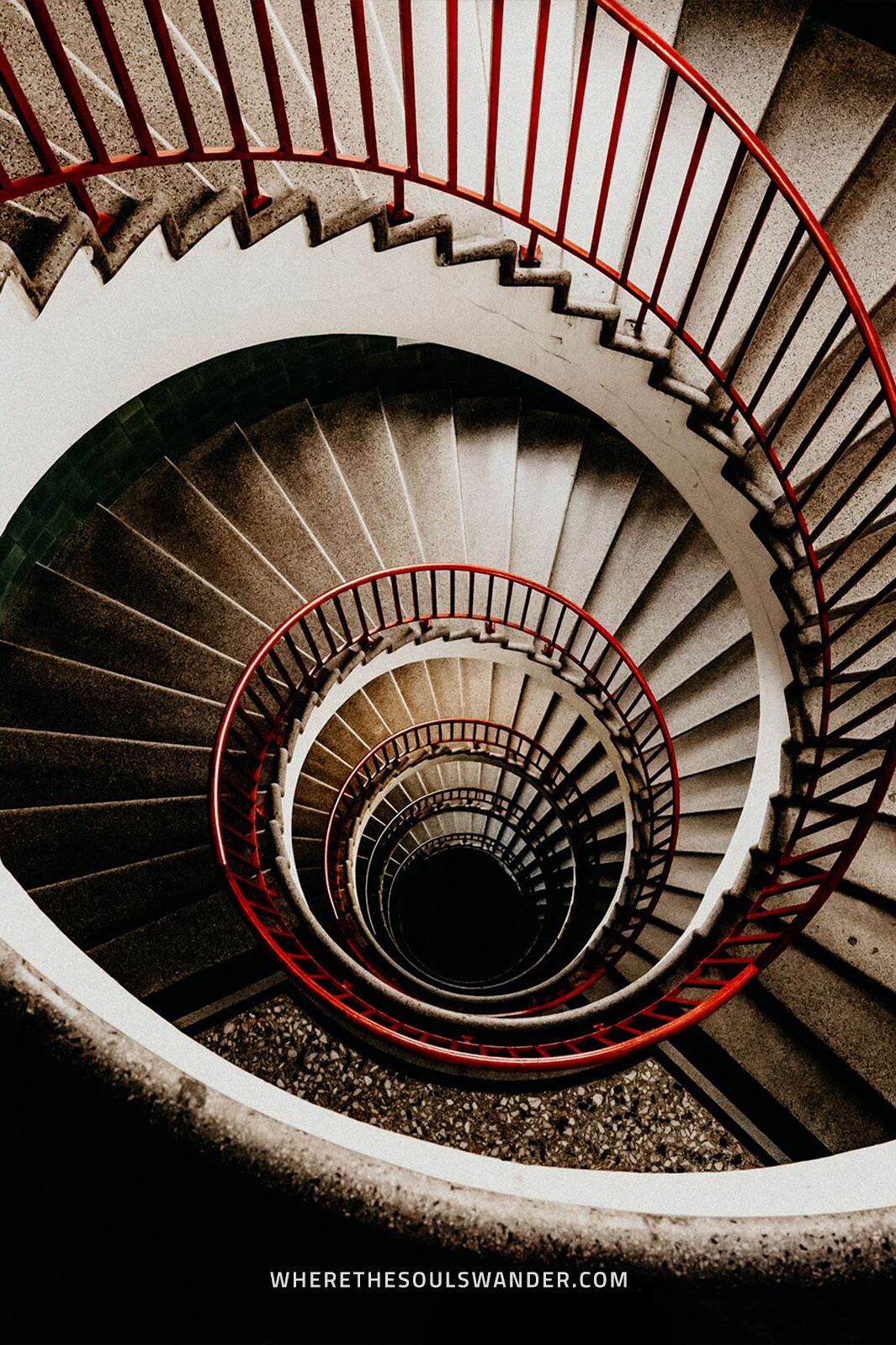
6 | Grab a coffee at Stow
In my humble opinion, Stow Coffee is clearly the best place to get your caffeine fix in Ljubljana.
With a clear focus on freshly roasted speciality coffee, Stow opened its doors in 2015 to bring unique flavours into its visitors’ cups, by acquiring hand-harvested beans directly from farmers, before roasting them into perfection in their in-house roastery.
Tucked away in the City Museum of Ljubljana, this trendy cafe serves rocket-fuel espresso, a distinctive range of filter and cascara coffee, as well as freshly baked sweet and savoury pies.
During my time in the city, I enjoyed a fair share of caffeinated goodness, which I mostly drank at Stow – my favourite was clearly the Samii Bensa Lot #1; a rich espresso from Ethiopia with notes of mango juice, papaya, sweet lemon, honey.
The cafe itself is light and spacious with a robust cobblestone floor, large floor-to-ceiling windows and a vibrant, yet soothing atmosphere, as mellow jazz tunes echo in the background.
If you’ve gone head over heels for one of the flavours, Stow also has a small store where you can buy freshly roasted beans, coffee blends, and barista equipment.
Where | Stow Coffee
Opening hours | Tuesday to Sunday from 1000 to 1800
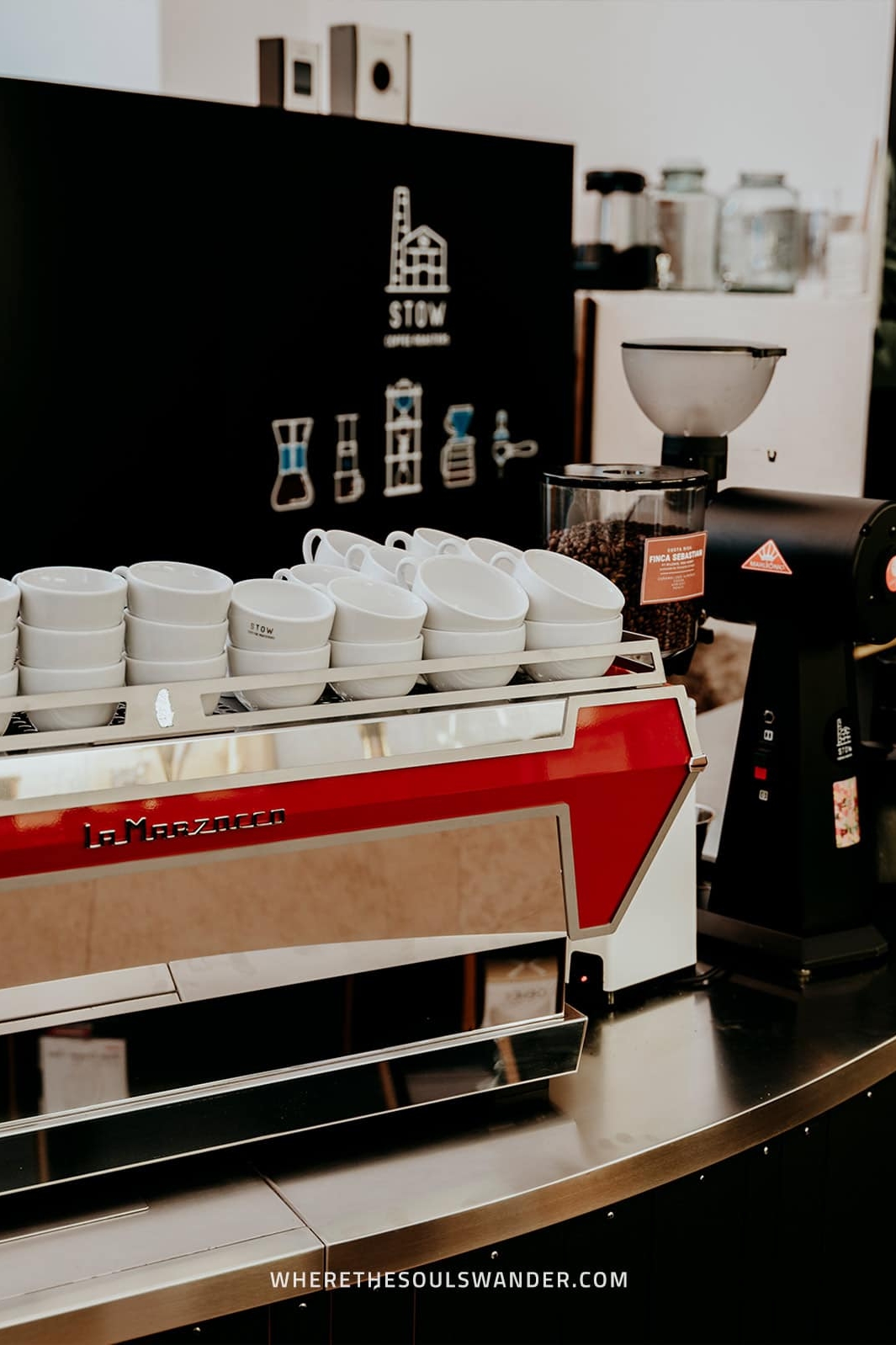
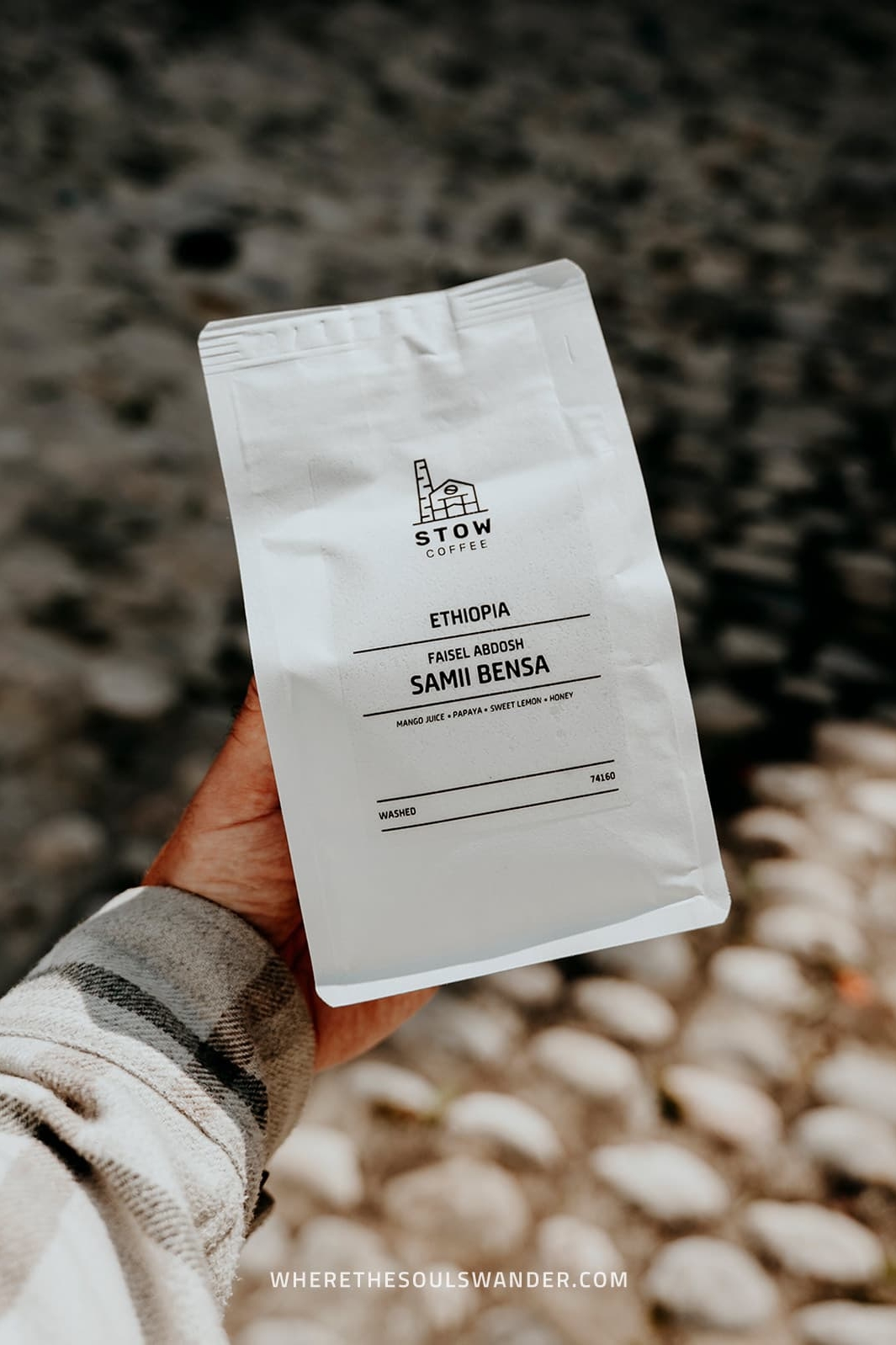
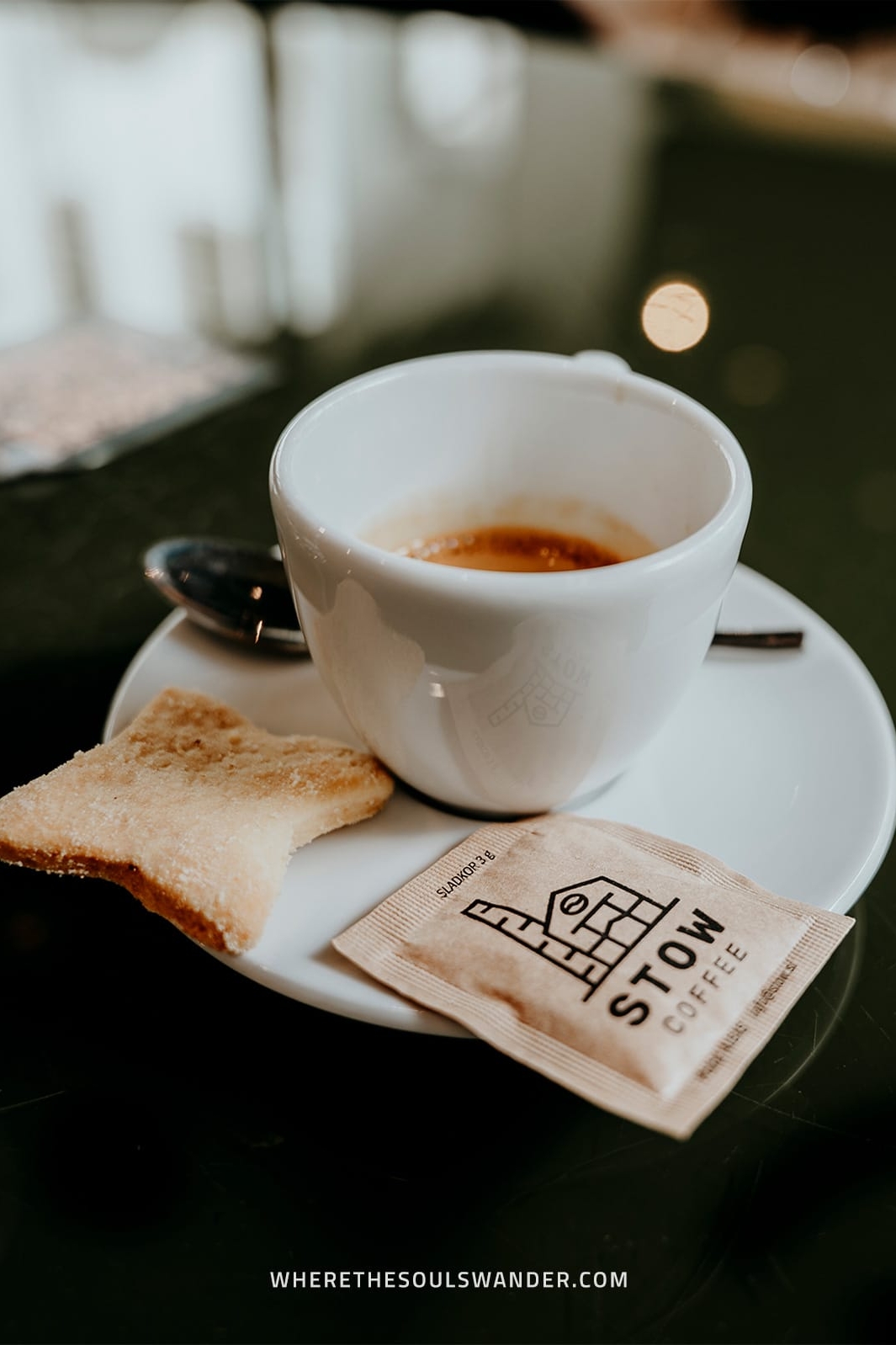
7 | See the iconic Dragon Bridge
The enchanting Dragon Bridge, connecting Ljubljana’s medieval centre with the modern part of town, is an absolute icon.
Marked by four copper dragon statues, the bridge reflects the story of Jason and the Argonauts, who according to a local legend had killed a dragon that lived near the source of the Ljubljanica river.
Designed by famous Italian architect Jurij Zaninović, the iconic bridge was built in 1901, and is considered one of the finest examples of Art Nouveau architecture worldwide.
Since it has become a symbol of the city, hundreds of people flock here every day, so it’s best to visit the bridge first thing in the morning, especially if you’re keen to get some awesome photography.
But it’s not the only bridge worth seeing in Ljubljana. Other attractive bridges in Ljubljana include the Butchers’ Bridge, Triple Bridge, and Shoemaker’s Bridge.
Where | The Dragon Bridge
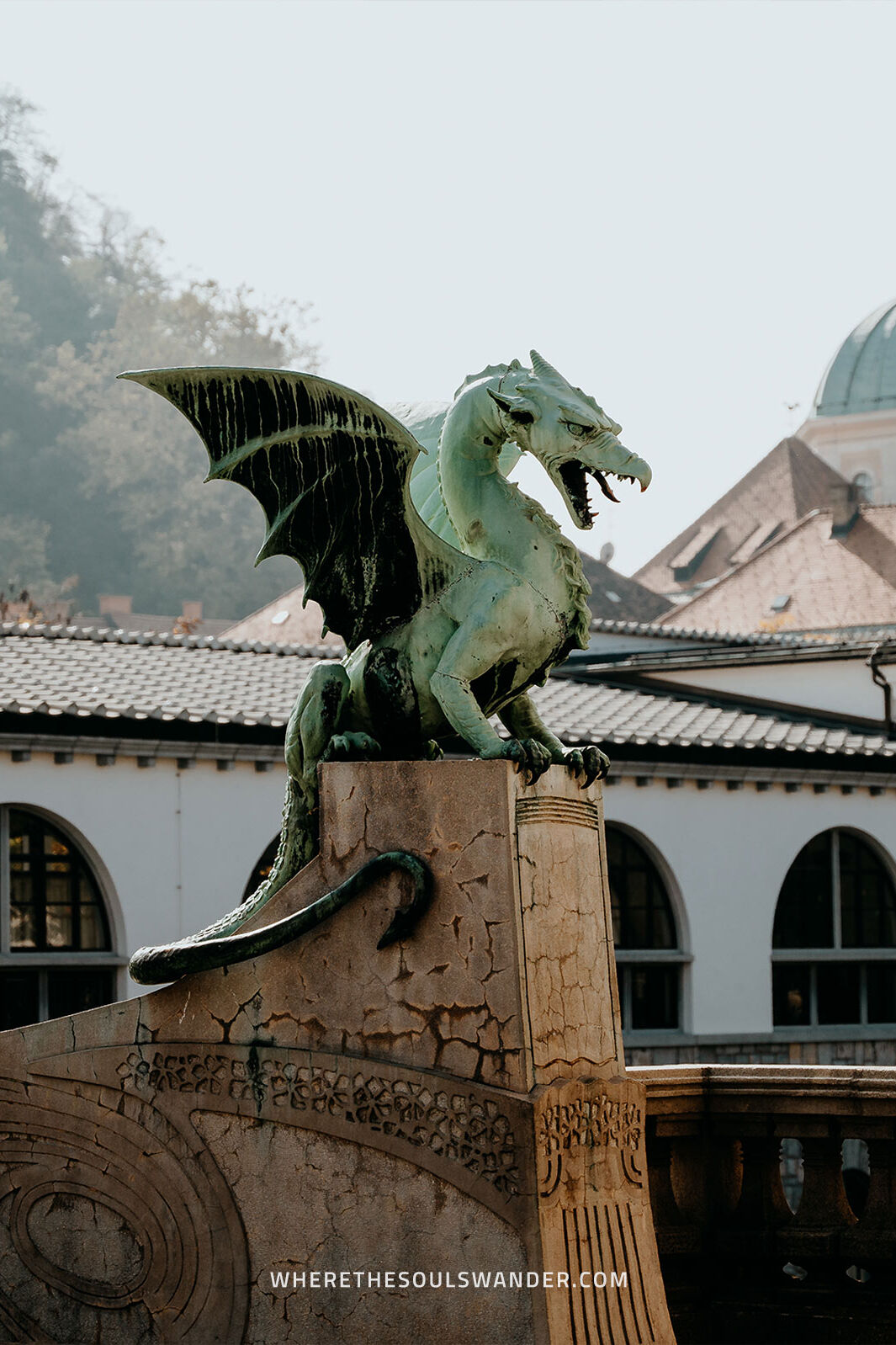
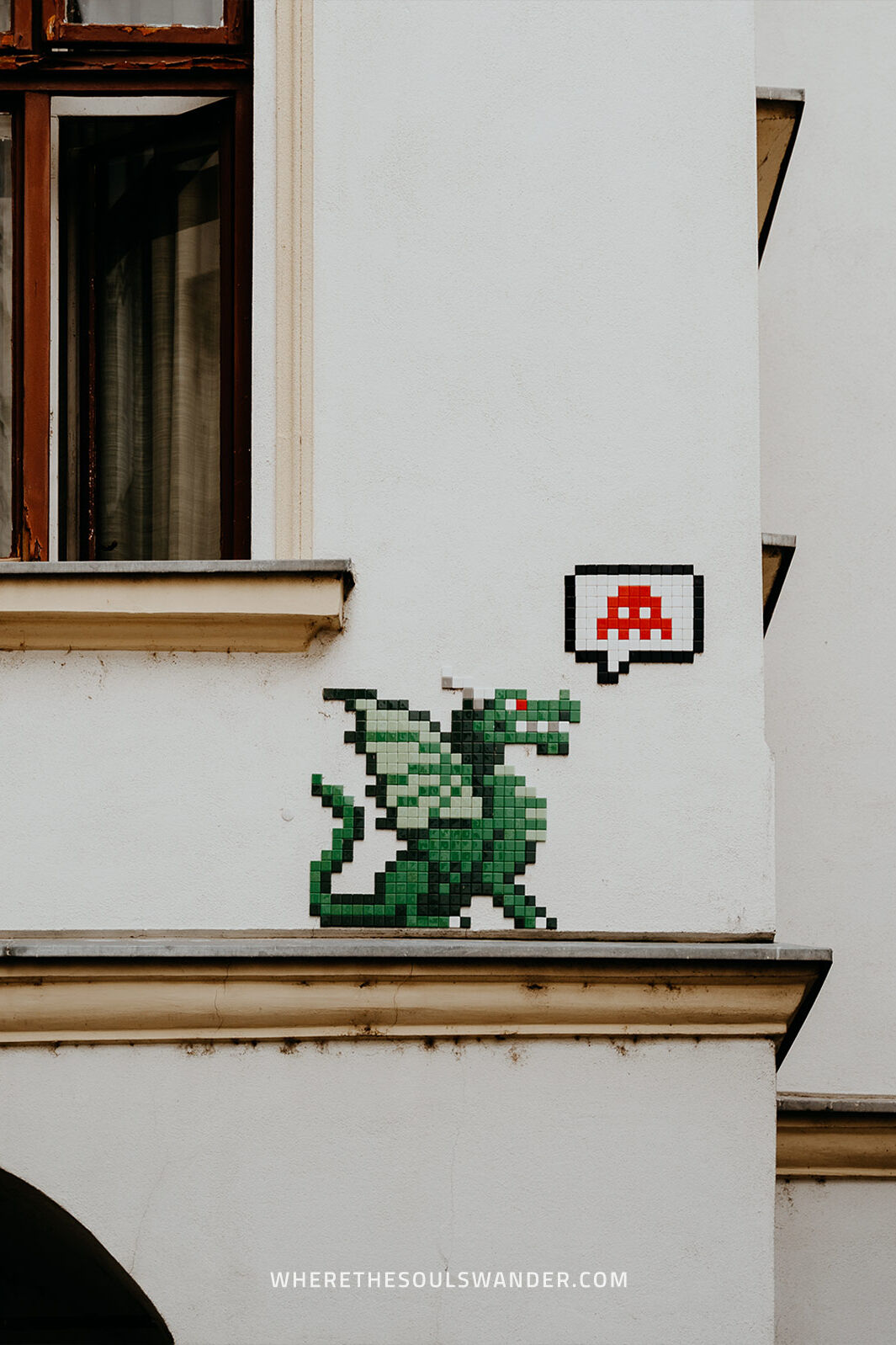
8 | Get creative at TipoRenesansa
If you’re after unique places in Ljubljana and admire the art of letterpress, calligraphy and graphic design, make sure you stop by TipoRenesansa, a small nonprofit studio that’s specialised in the above-mentioned crafts.
As a graphic designer graduate with a specialisation in typography myself, I was pretty excited when I first read about TipoRenesansa – unfortunately for me, the studio was closed during my time in the city.
However, this guide to the best things to do in Ljubljana is all about delivering you my personal recommendations – so I still desired to share this authentic spot with you here.
Founded in 2010 by graphic designer and calligrapher Marko Drpic, this studio is the last place in Slovenia where you can experience the art of traditional printing before modern technology took over.
It’s a place where typography lovers and letterpress enthusiasts alike will gain lots of inspiration, but also a place where you’ll find one-in-a-kind souvenirs.
Since TipoRenesansa is a small, independent studio, opening hours might differ, so make sure you contact Marko on his Instagram just to be sure.
Marko also offers printing workshops, where you’ll learn about his art, the printing techniques he uses, and where you’ll eventually make your custom prints to take back home.
Where | TipoRenesansa
Opening hours | Daily 1000 to 1700 – longer during the summer
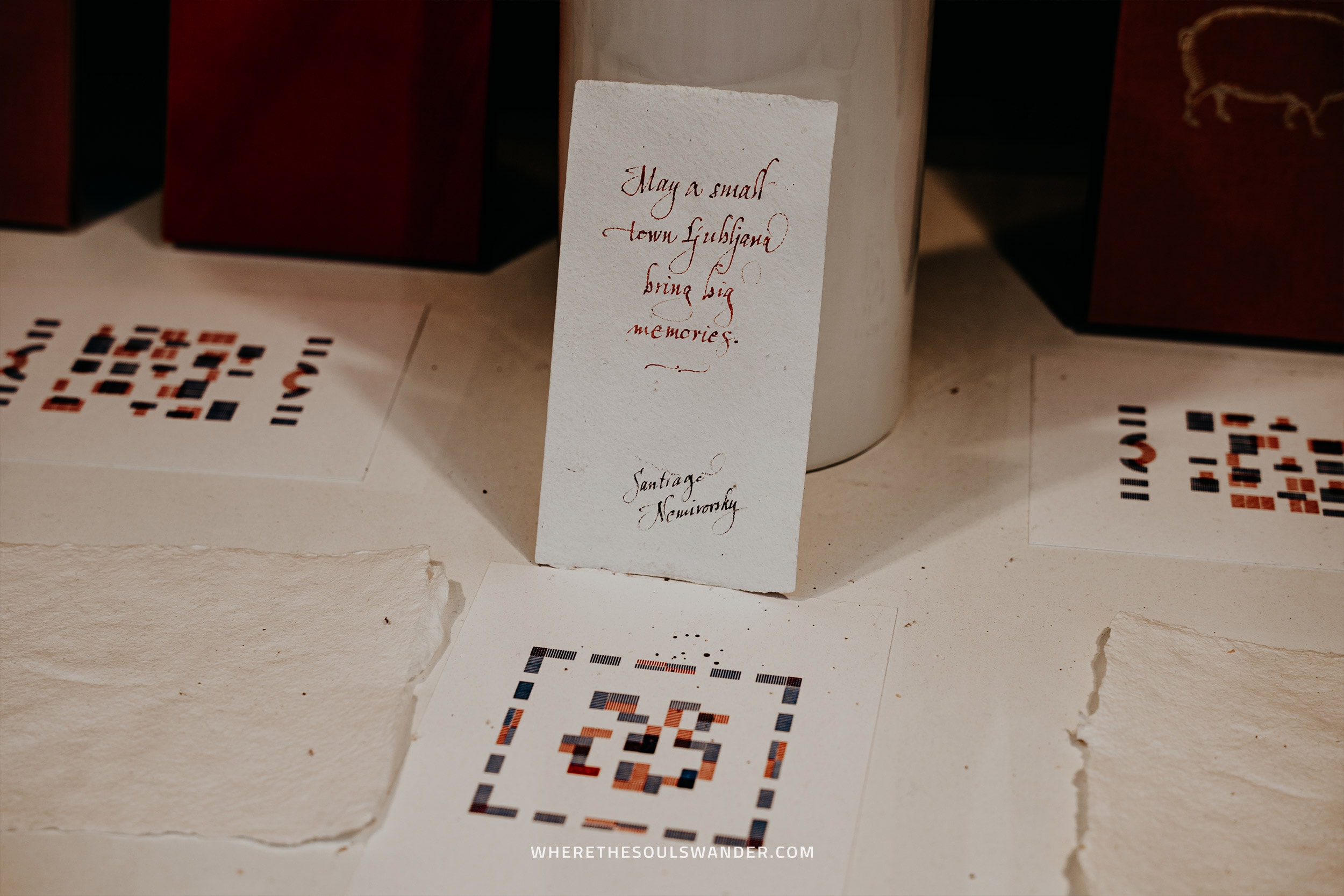
9 | Sample Ljubljana’s best ice cream at Cacao
If you’re in for a sweet treat, a good cup of joe, or just want to enjoy the excellent views over the Ljubljanica river, look no further.
Located along the promenade of the Ljubljanica river, Cacao is a trendy Kavarna (coffee shop) that specialises in artisanal ice cream, freshly baked cakes and desserts, and great coffee.
If you’ve followed me for a while, you know that I take my gelato seriously, so when I stumbled upon Cacao, I knew I had to stop by to sample a scoop of creamy goodness.
As always, I sampled a scoop of lime (which is my all-time favourite) – plus a scoop of Rafffaelo and both tasted exceptionally good. The flavours were balanced out perfectly and it was easy to notice that only the best ingredients made the cut.
If you’re not quite sure which flavours to choose, the friendly and knowledgeable staff will be happy to help and you can even ‘taste before you buy’, which is awesome (but will make it slightly more difficult too).
Where | Cacao Ljubljana
Opening hours | Daily 0800 – 2200
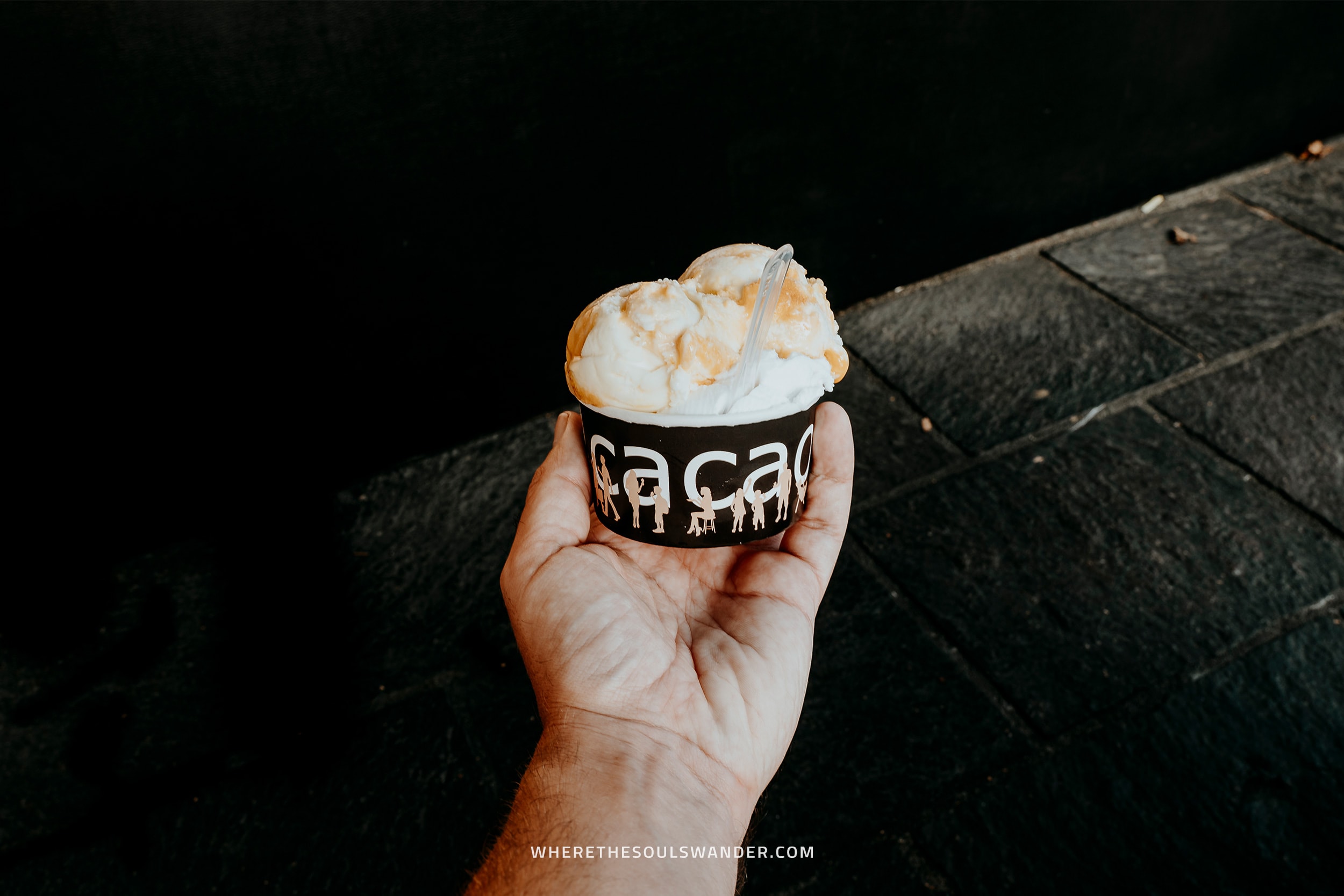
10 | Visit the Ljubljana Castle
To me, the Ljubljana Castle was a little too boring for my liking, but despite my underwhelming experience, I still believe it’s worth your time since the fortress played a pivotal role in the history of Ljubljana.
Nestled high on the hill above Ljubljana, overlooking the tangerine-coloured roofs of the old town is the Ljubljana Castle, a medieval castle that dates back to as far as the 11th century.
Getting to the castle is pretty straightforward, simply follow a 20-minute hike from the old town, or opt for a one-minute funicular ride from Krekov Trg instead.
Once you arrive at the castle walls, you’ll be welcomed by some of the most spectacular views of Ljubljana, as well as the Kamnik Alps in the distance.
Though the courtyard is free to enter, you can also choose to join the “Time Machine” tour, which includes access to the watchtower of the castle.
While I can imagine that the views from there are stunning, I don’t necessarily believe you miss out if you decide to skip the guided tour.
Additionally, the castle houses a cafe, art gallery, restaurant and even an escape room, which is actually quite cool if you ask me.
Where | Ljubljana Castle
Opening hours | Daily 0900 to 1800
Funicular | Daily 1000 to 1800
Cost funicular | One-way ticket €2,20 – Return €4,-
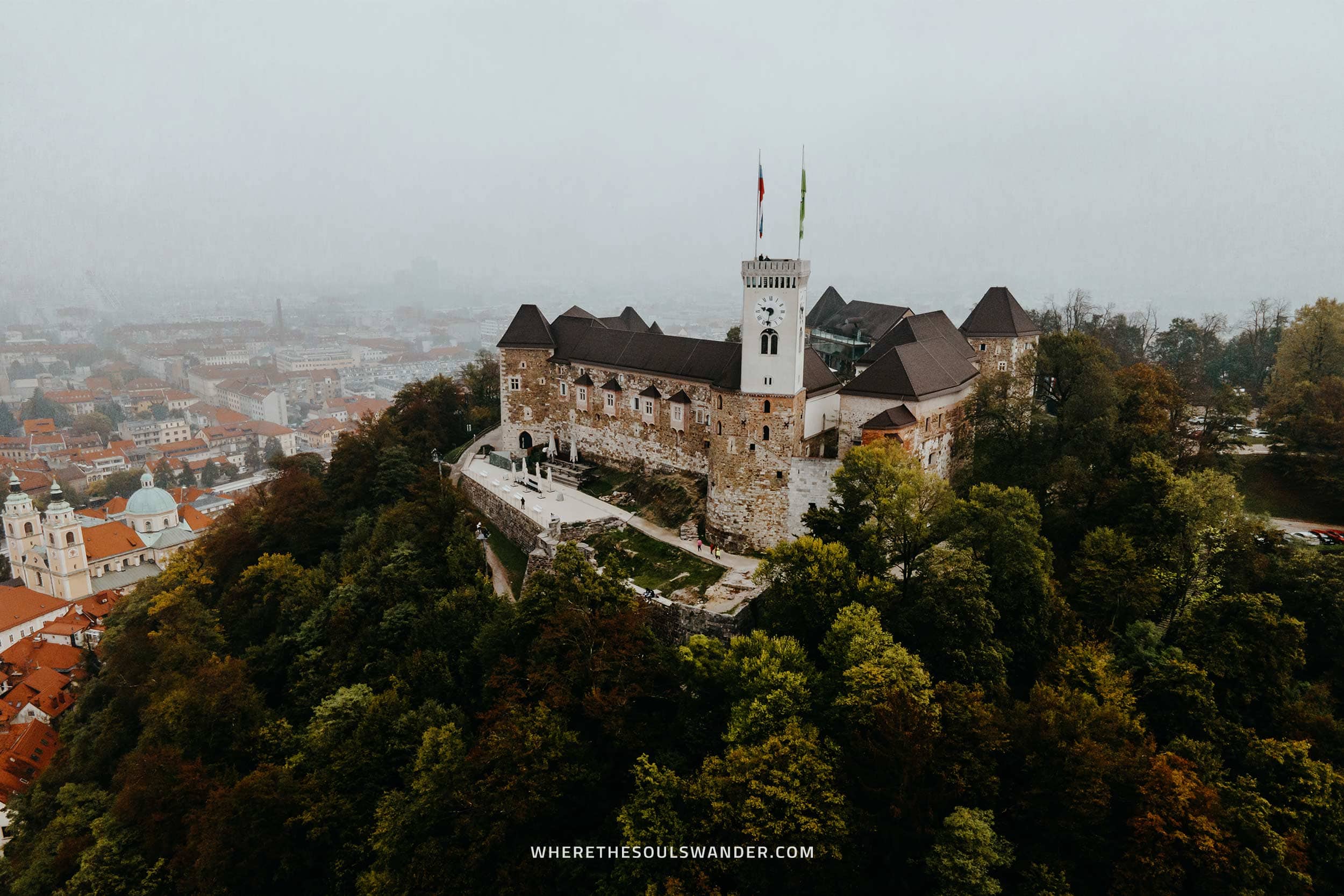
11 | Take a stroll along the Ljubljanica river
Running straight through the heart of the city, the Ljubljanica river is without question the heart of all things social life in Ljubljana.
Every day, locals and tourists alike come here to gather in one of the many trendy cafes and restaurants that are dotted along its vibrant riverbanks.
But taking a stroll around Cankarjevo Nabrezje (the car-free street that lines the river), will not only take you past dozens of cafes, restaurants and bars, but it will also give you a good feel for the city and its people.
So whether you’re looking for an exceptional dining experience, in need of a coffee break, or simply want to sit and watch the world go by, the banks along the Ljubljanica river will easily charm you with its inviting atmosphere.
It’s also likely to be the starting point of all your explorations in Ljubljana – and that’s a good thing!
If you’re looking for something a little different, you can also choose to see the city from a whole nother perspective by joining a Ljubljana river cruise.
Where | Ljubljanica River
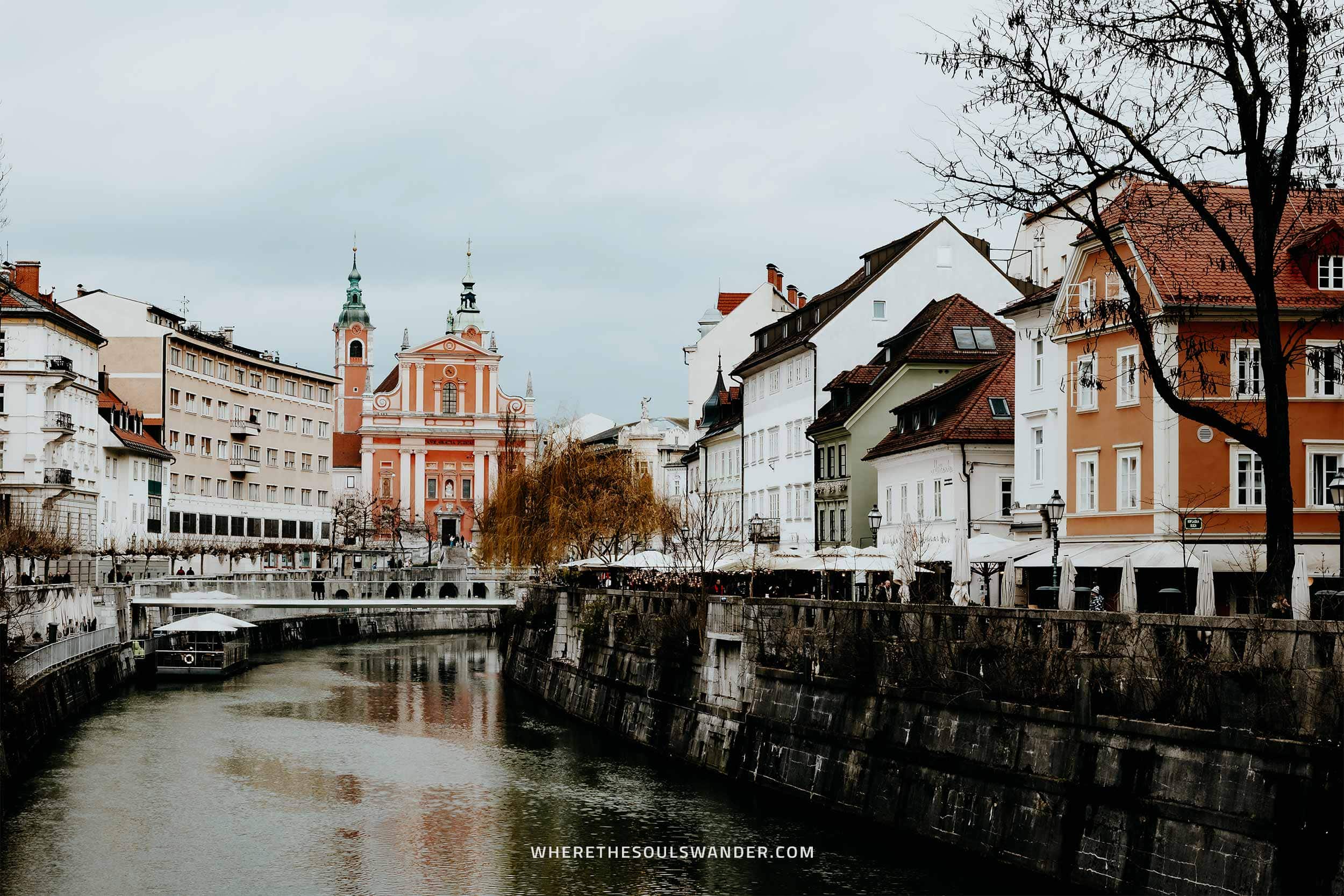
Best time to visit Ljubljana
To be fair, I firmly believe that anytime is a good time to visit Slovenia, as it’s stunningly charming at any time of year.
Of course, summer (June to September) is a big thing here in Europe, as it brings excellent weather and long days. But unfortunately, this is also the time when you’re elbow to elbow with lots of other visitors.
For that reason, I believe that the absolute best time to visit Ljubljana is during the shoulder months of April to May, or September to November, when pleasant weather and thinner crowds provide the perfect weather to go out and about.
If you’re strictly visiting Slovenia for a city trip, Ljubljana is also an amazing place during the winter months, when there’s a magical wintery vibe and plenty of festivities.
I visited Ljubljana on a road trip through Slovenia in October, which I found just perfect.
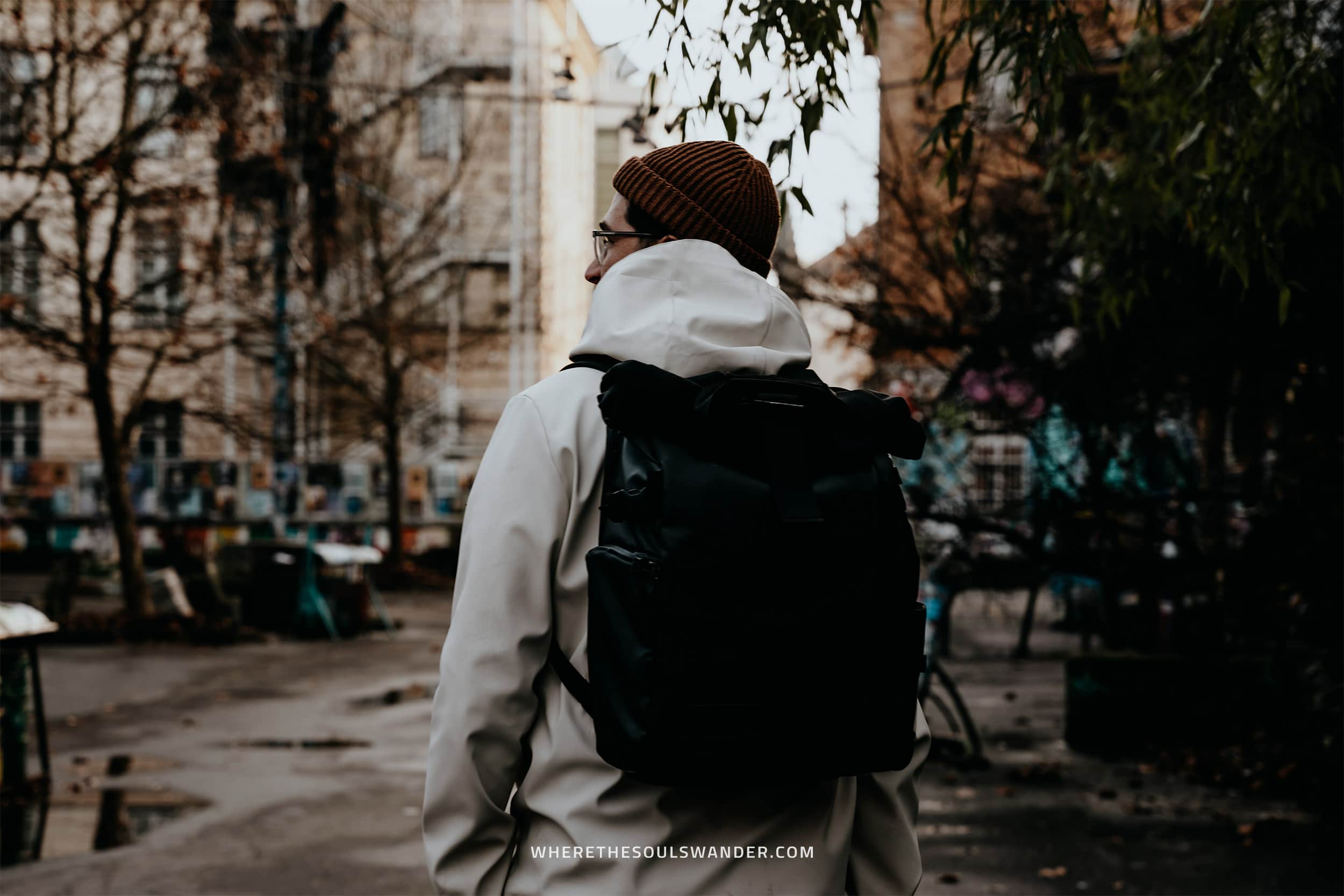
How to get to Ljubljana
BY PLANE | If you’re planning a trip to Ljubljana from overseas, you likely enter Slovenia via plane through the Joze Pucnik International Airport in Ljubljana, as it hosts the majority of European and international airlines.
For flights to Ljubljana, I would highly recommend checking out Skyscanner, since their website is user-friendly, holds a great variety of airlines and grants the possibility to find great deals.
From the airport, make sure you take bus 28, which takes you to the city centre in roughly 50 minutes. Tickets cost €4,10 one-way and the bus leaves every 30 minutes, starting from 05:00 on weekdays and 07:00 during the weekend. More information here.
BY CAR | If like me, you’re planning to do an epic road trip through Slovenia, I would advise sorting out a rental in advance, so you have all the freedom to visit wherever, whenever suits you.
For both of my recent trips to Slovenia, I rented a car for the entire journey (including my time in Ljubljana) and was quite satisfied with the flexibility that it provided.
Since car rentals are quite affordable in Slovenia, I’d recommend renting a car for the duration of your time in the country, given a shuttle or taxi to the city will most likely cost you more than having the car for additional days.
However, do make sure you book accommodation with free parking in Ljubljana as parking prices can add up very quickly.
If you have not yet sorted out a rental car, make sure you explore the options at Rentalcars.com, as they have a wide selection of cars on offer, and provides excellent service as well as extra insurance options.
Once you’ve picked up your rental car, it takes only 20 minutes to drive to the city centre.
To see prices and availability, check rentalcars.com here
BY BUS | Whether you’re travelling exclusively within Slovenia, or plan to visit from one of the neighbouring countries, Ljubljana is extremely well-serviced by public transport.
There are quite a few international bus routes that make a stop in Ljubljana, including those that depart from cities such as Venice, Zagreb, Vienna and Munich.
For international bus journeys to Ljubljana, I’d highly recommend the green FlixBus coaches.
Local bus connections in Slovenia are brilliant too, which means that Ljubljana is easily reached from the most popular places, including Lake Bled, Bohinj, Maribor and Koper.
If you’re looking to travel through Slovenia by bus, make sure you check out the Ljubljana Bus Station website for relevant timetables and information.
BY TRAIN | It is also possible to travel through Slovenia by train, which is an affordable, convenient and scenic way to explore the country.
If you’re already in Slovenia, it is easy to get to Ljubljana by train as there’s an excellent connection with some of the country’s most places, including Lake Bled, Bohinj and Koper.
It is worth mentioning that you should buy your tickets in advance. For relevant timetables, tickets and the latest information, see here.
For those travelling around Europe, Slovenia is also well connected to popular cities of the neighbouring countries; Belgrade, Budapest, Munich, Zagreb and Zurich to name a few.
For international train connections to Ljubljana, make sure you visit interrail.
Stay safe in Slovenia | Travel insurance
Since Slovenia has plenty of adventurous activities on offer, I advise everyone to sort out good travel insurance before setting out on their own adventure.
While I believe that it’s unlikely to experience any troubles when following the advice in this guide, something unfortunate can happen at any time, whether it’s an injury, a stolen camera, or an accident on the road.
For travel insurance, I use Heymondo, as they offer full covid-19 coverage, as well as a handy app with 24-hour medical assistance. Make sure you check it out – readers of WTSW receive 5% off any insurance policy too. Additionally, I also recommend World Nomads.
Cheers!
I’ve been on this travel blogging journey since 2019.
If you appreciate what I do here, these are some ways you can support me.

Plan your Slovenia itinerary with these essential guides
Hotel Bohinj review: experience unrivalled eco-friendly luxury in Slovenia
I have to admit, when Hotel Bohinj first appeared on my radar, I instantly thought of booking a trip to Slovenia, even if it was just to spend a couple of nights here.
Fast forward a few weeks, and my idea had come to fruition, with a 2-night stay at Hotel Bohinj as one of the absolute highlights of my road trip throughout the country (make sure you read my Slovenia itinerary too).
Tucked away in the heart of the Triglav National Park, Hotel Bohinj is a super stylish hideaway that could easily be considered a destination on its own.
From the moment I walked through the gigantic wooden doors, I was amazed by the look and feel of this place – it truly embodies the unique ambience of Bohinj in the best possible way.
Defined by its natural surroundings and distinctive eco-friendly philosophy, Hotel Bohinj is the perfect place to escape the hustle and bustle of daily life, and by far the most authentic hotel I’ve stayed in lately.
But to say that Hotel Bohinj is solely an accommodation is an understatement, as it’s more of an experience crafted to perfection – more on that later.
Since I had the most wonderful time here, I decided to share a detailed review of my experience, as well as a few tips on how to get there, when to visit and how to book your stay
Here’s a review of my experience at Hotel Bohinj.
If you choose to use any of the links on this page, I may receive a small commission at no extra cost to you. By using these links, you’ll have a direct impact on WTSW and my ability to continue to create free insightful travel content for you. If you find any of my tips useful, you can support me by buying a virtual coffee here.
Hotel Bohinj review: experience unrivalled eco-friendly luxury in Slovenia
Where is Hotel Bohinj | Hotel Bohinj’s location
When it comes to location, Hotel Bohinj is truly unrivalled.
Encircled by pristine alpine meadows, Hotel Bohinj is located in the heart of the Triglav National Park, which makes it the perfect base for all things nature, hiking and outdoor activities.
While you might be under the impression that you’re completely cut off from the world, Hotel Bohinj is actually pretty close to some of Slovenia’s most popular highlights – it is in fact only about an hour’s drive from the stunningly beautiful capital of Ljubljana.
Bohinj itself is a paradise for those after nature and outdoor pursuits, which, in my opinion, gives it a more authentic and untouched feel than its better-known sister; Lake Bled.
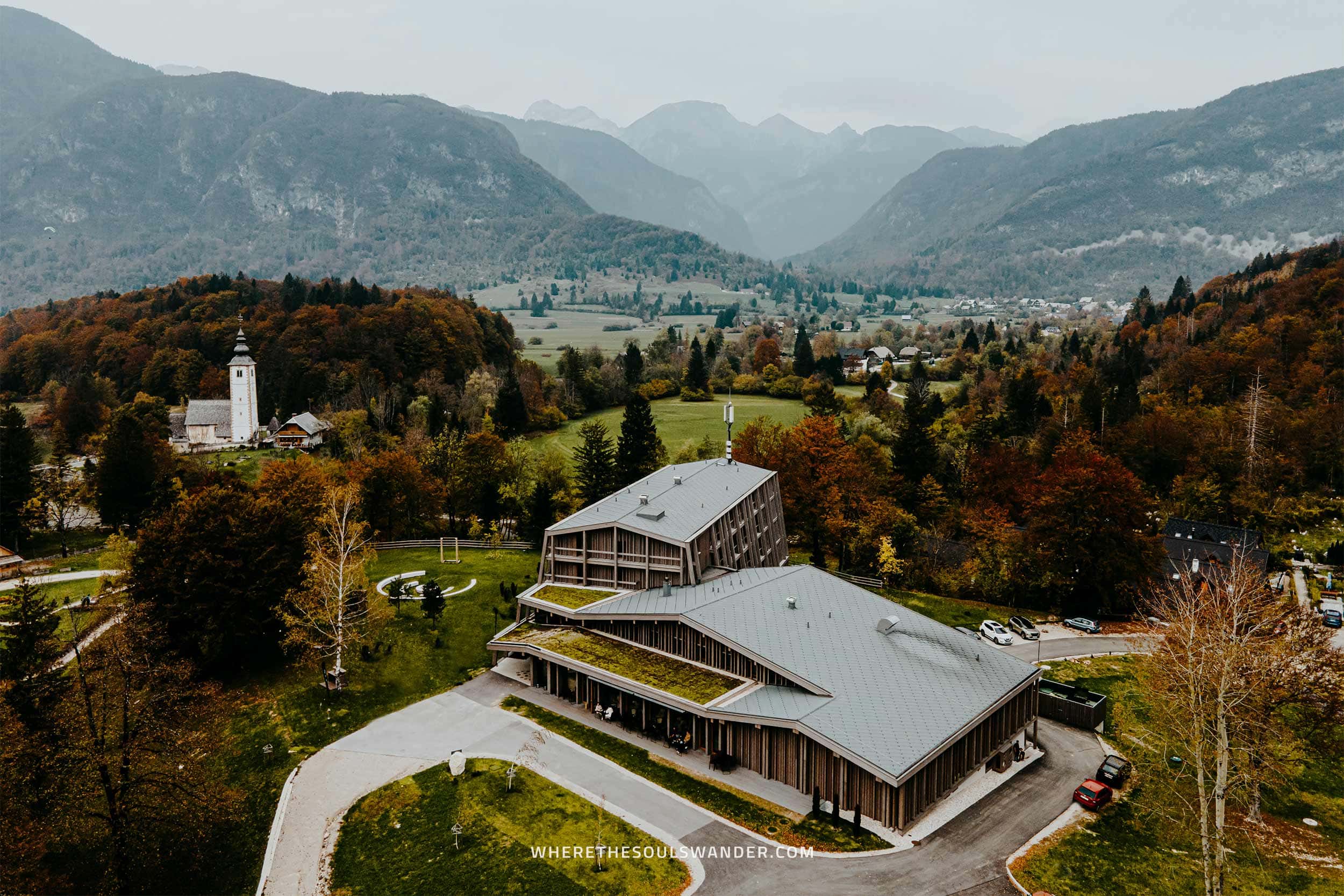
Hotel Bohinj | The Design
Uniquely designed by Ofis Arhitekti, Hotel Bohinj is a modern architectural masterpiece set upon a raised plateau, providing dazzling views of Lake Bohinj, the church of St. John the Baptist and the Triglav Mountains in the distance.
Defined by a characterizing wooden framework, the exterior of the hotel has been given a naturally polished appearance, making it not only stand out but also completely in harmony with its natural environment.
Once you step through the massive wooden doors, you’ll be welcomed in a spacious lobby with raised ceilings and plenty of aesthetically pleasing design elements, which effortlessly reflect the philosophy that’s behind Hotel Bohinj.
The hotel common area is designed in an open-plan layout with an Instagram-worthy lounge area and a cosy fireplace at the heart of it all, which also happens to separate the lobby from the restaurant
The in-house restaurant itself is spacious, yet intimate and exceptionally charming, with numerous eye-catching fragments sprinkled throughout.
All in all, it’s easy to see how much thought has gone into the details, and to me, Hotel Bohinj is by far the most original hotel I have stayed in lately.
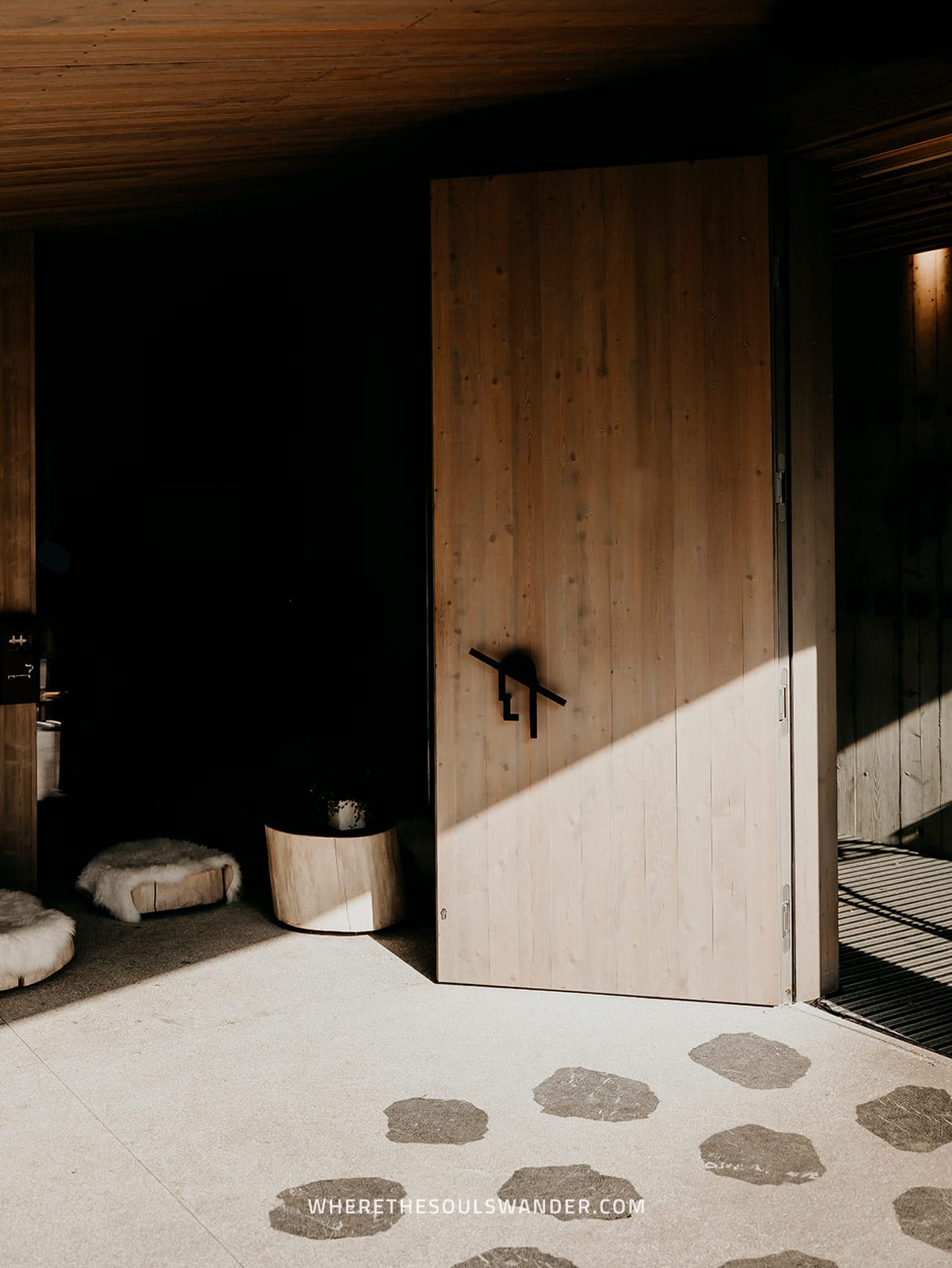
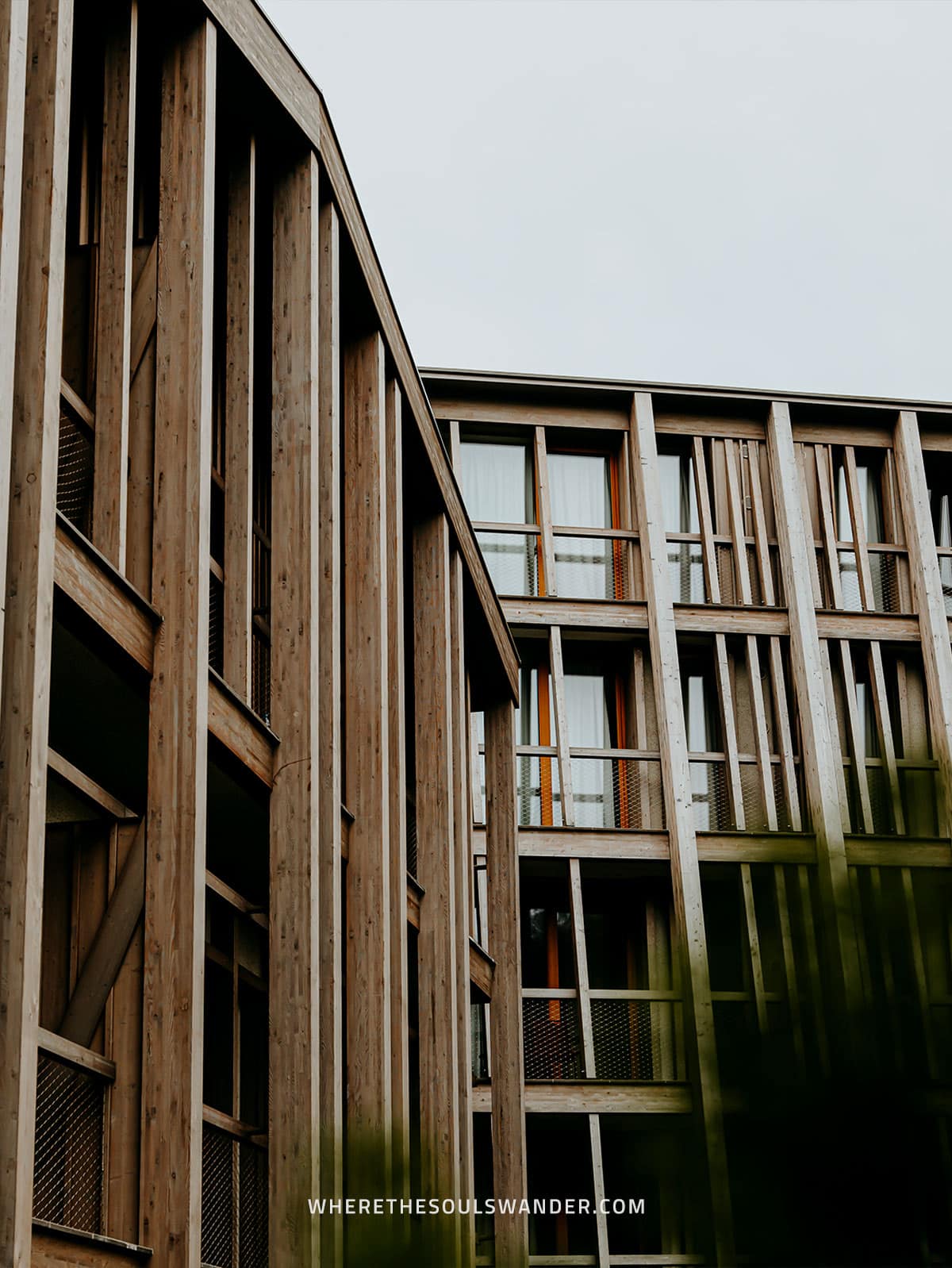
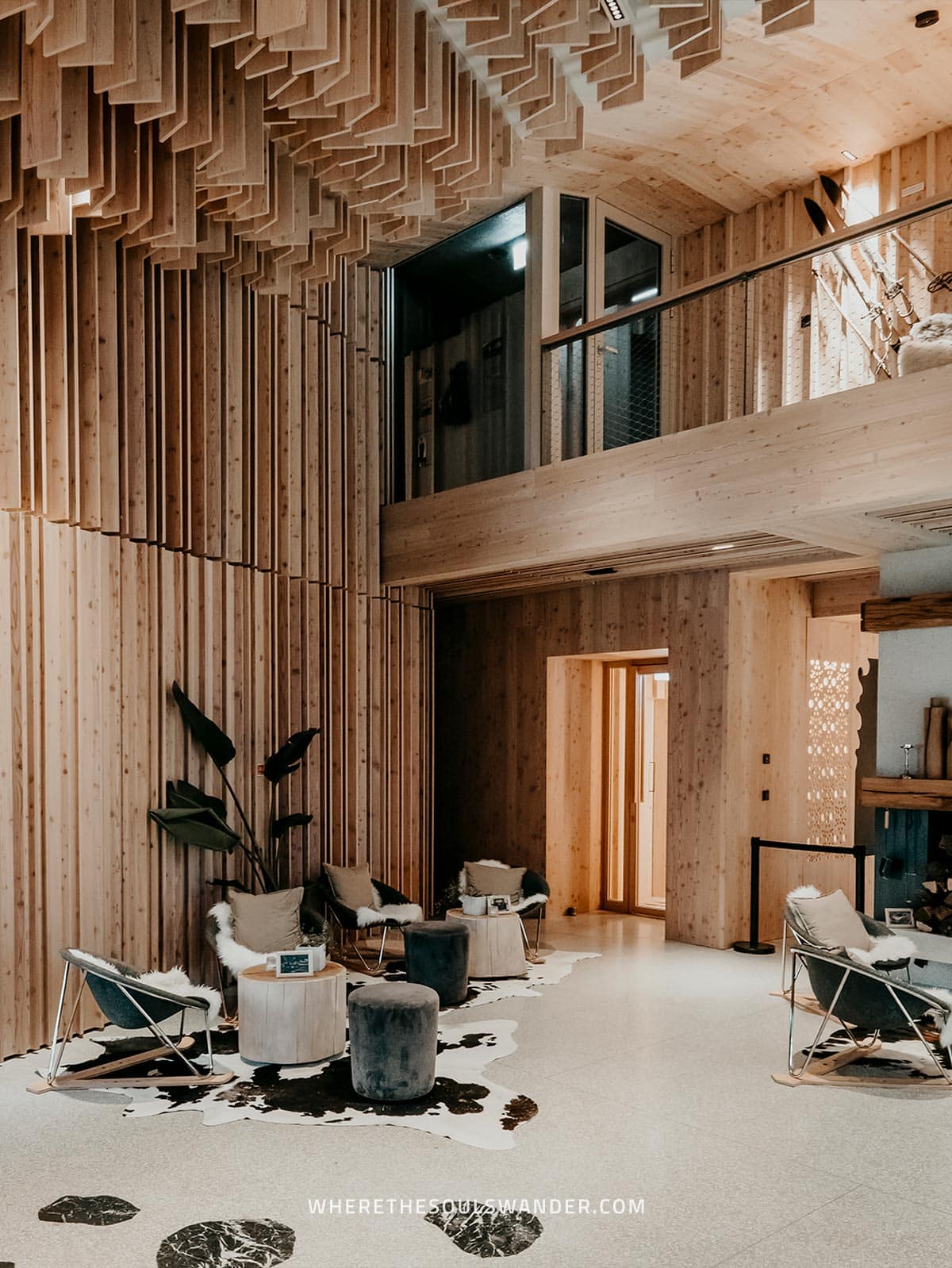
Hotel Bohinj | The rooms
From the moment I walked into my room at Hotel Bohinj, I was hyped by the level of detail that went into the design – everything breathes the unique vibe of Bohinj in the best possible manner.
All 69 rooms are decorated by following a minimalistic, yet original approach, with carefully chosen materials giving the rooms a rich and distinctive feel to them.
Illuminated by a unique silhouette of Mount Triglav, the rooms boast one of the most comfortable beds I’ve ever slept in. Add to that the fact that you can request a pillow to your own liking at the reception, and you’re up for a perfect night of sleep.
The minimalist bathroom has a great rain shower and is designed according to the same sustainable values as the rooms. They are also equipped with organic hair and body wash, which are both distinguished by an exceptional combination of scents.
If you’re like me and work online, the rooms are also equipped with a spacious desk, perfect for those that need to get some work done during their travels.
While there is a television tucked away in a wooden cabinet, I’m pretty sure that it will be the incredible views from the floor-to-ceiling windows that grasp your attention.
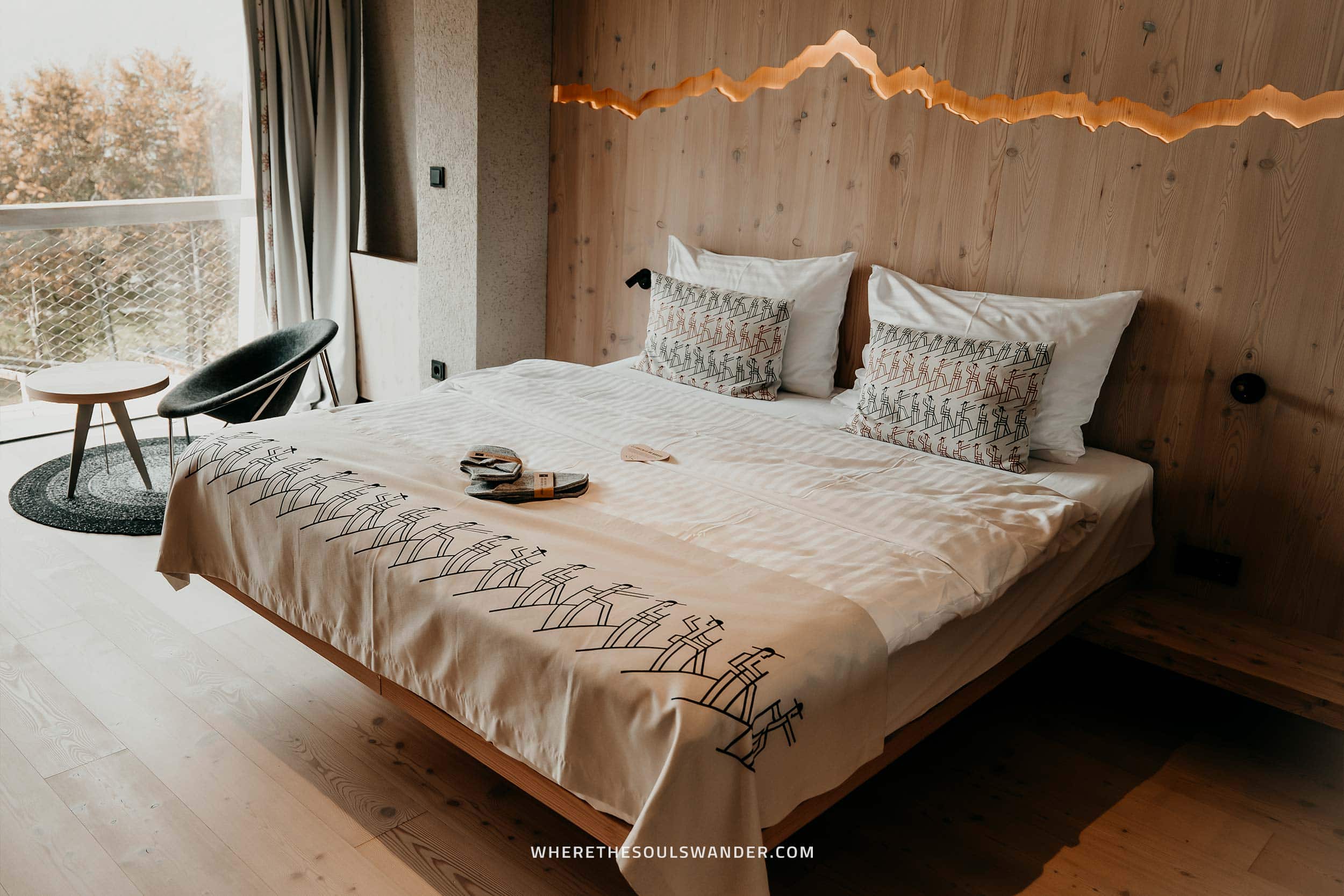
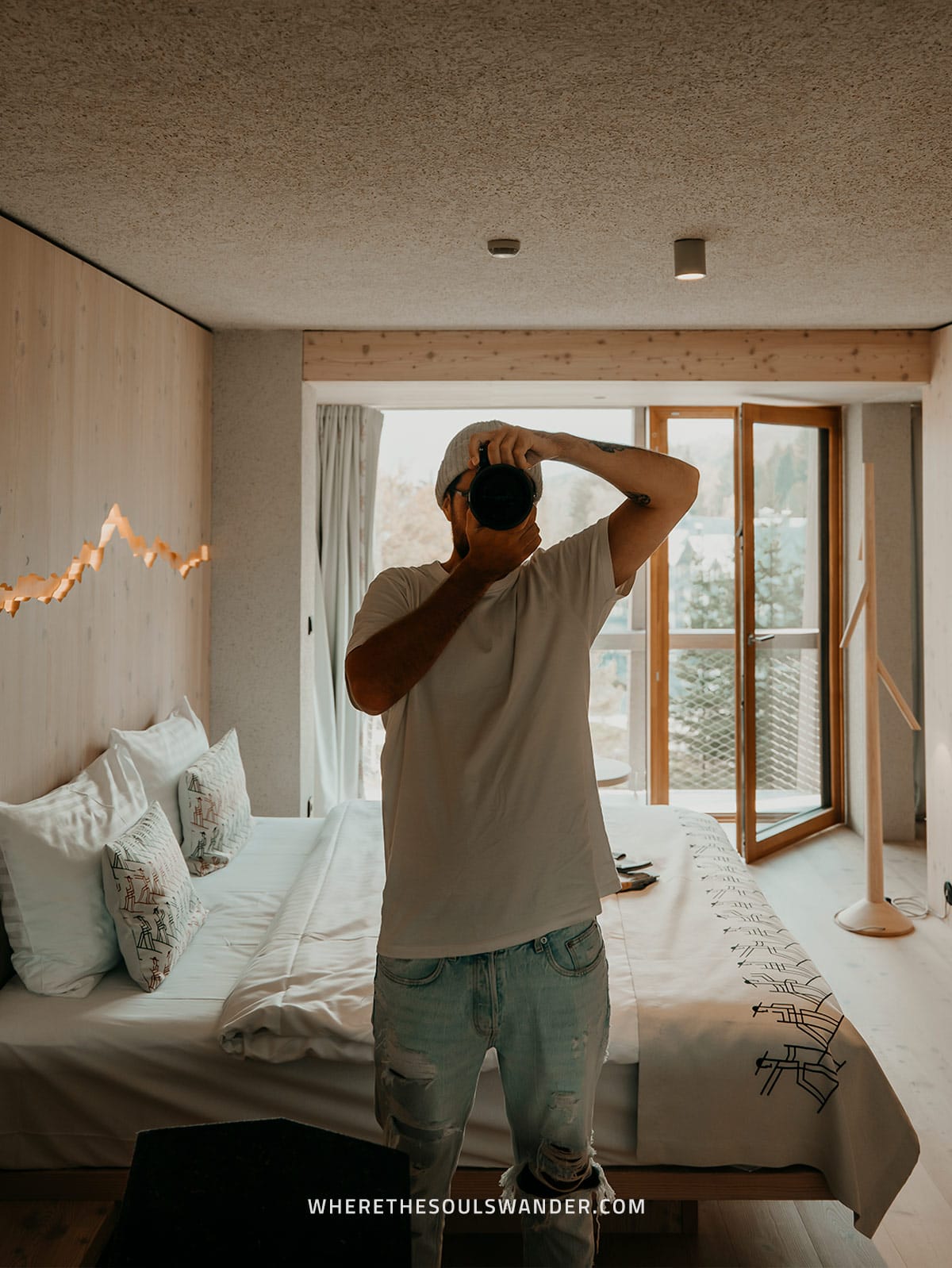
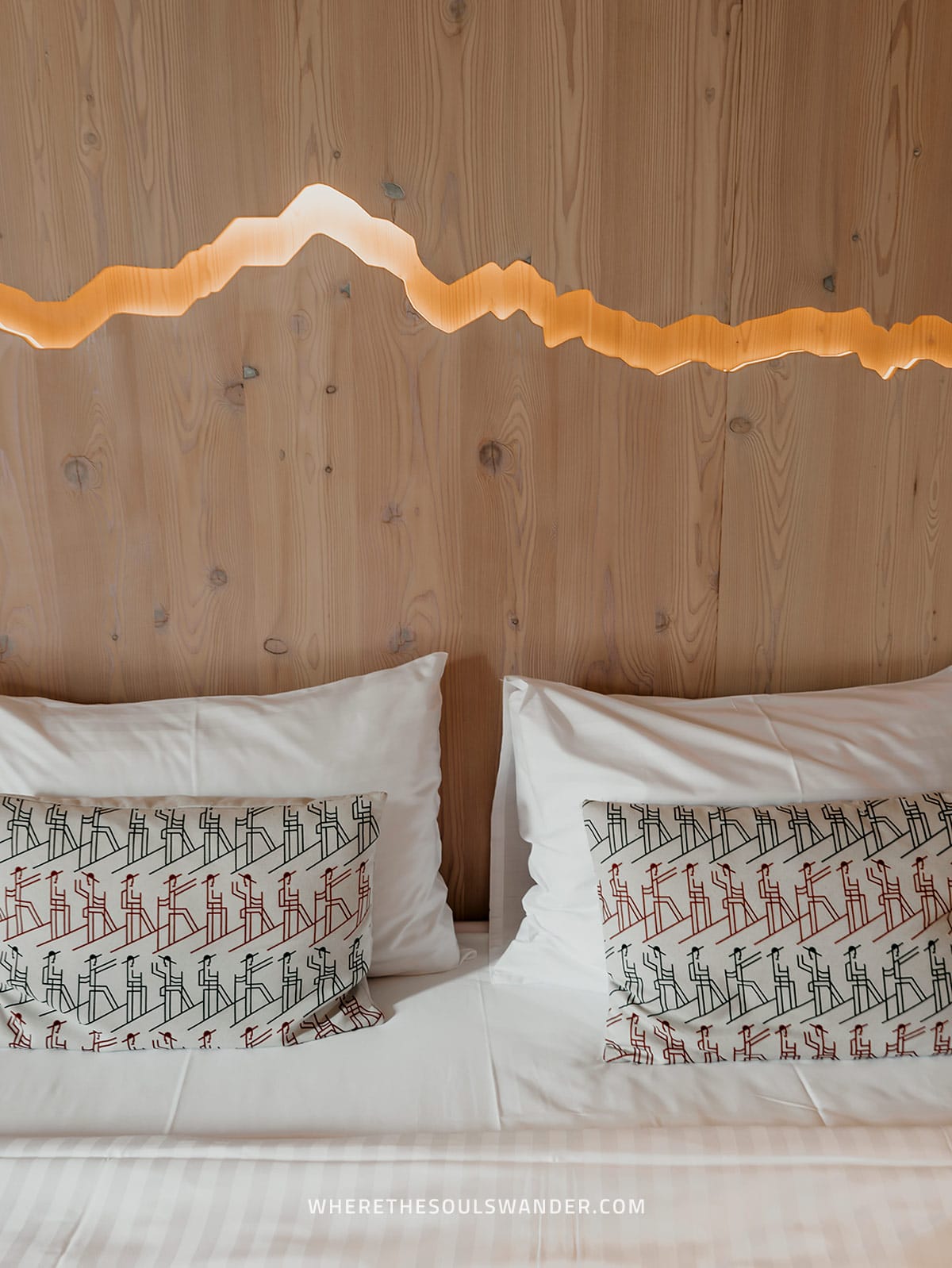
Hotel Bohinj | The food and drinks
First things first, all stays at Hotel Bohinj come with an excellent breakfast spread, which is available to guests every day from 07:00 until 10:00.
While I normally survive the morning solely on coffee due to intermittent fasting, I chose to start off my days in Bohinj with a light, but healthy and nourishing breakfast.
The reason for this is that Hotel Bohinj takes its breakfast spread extremely seriously, with a great range of options to choose from – think fresh bread and croissants, cheese from local farmers, plenty of fresh egg styles, seasonal fruit, and farmer yoghurt to name but a few.
Then there’s dinner.
For as far as I know, Hotel Bohinj works with a seasonal menu, with a focus on seasonal flavours and locally grown ingredients.
In my case, this meant that during my stay in October there was a thoroughly curated menu based on the savoury flavours of autumn.
On these special dates, guests have the option to choose from a perfectly curated menu of cold and warm starters, salads, main dishes, and desserts, as well as a selection of local cheeses.
I opted for the veal oyster blade steak with beetroot purée and potato pavé, paired with a glass of locally produced red wine – which was absolutely wonderful.
For dessert, I chose the honey semifreddo with oat crumble, pollen, and honey sponge, which was tasty and completely made of locally sourced ingredients.
If you’re keen to have dinner at Hotel Bohinj, make sure you book a table in advance, since it has rapidly become one of the best and most popular restaurants in Bohinj.
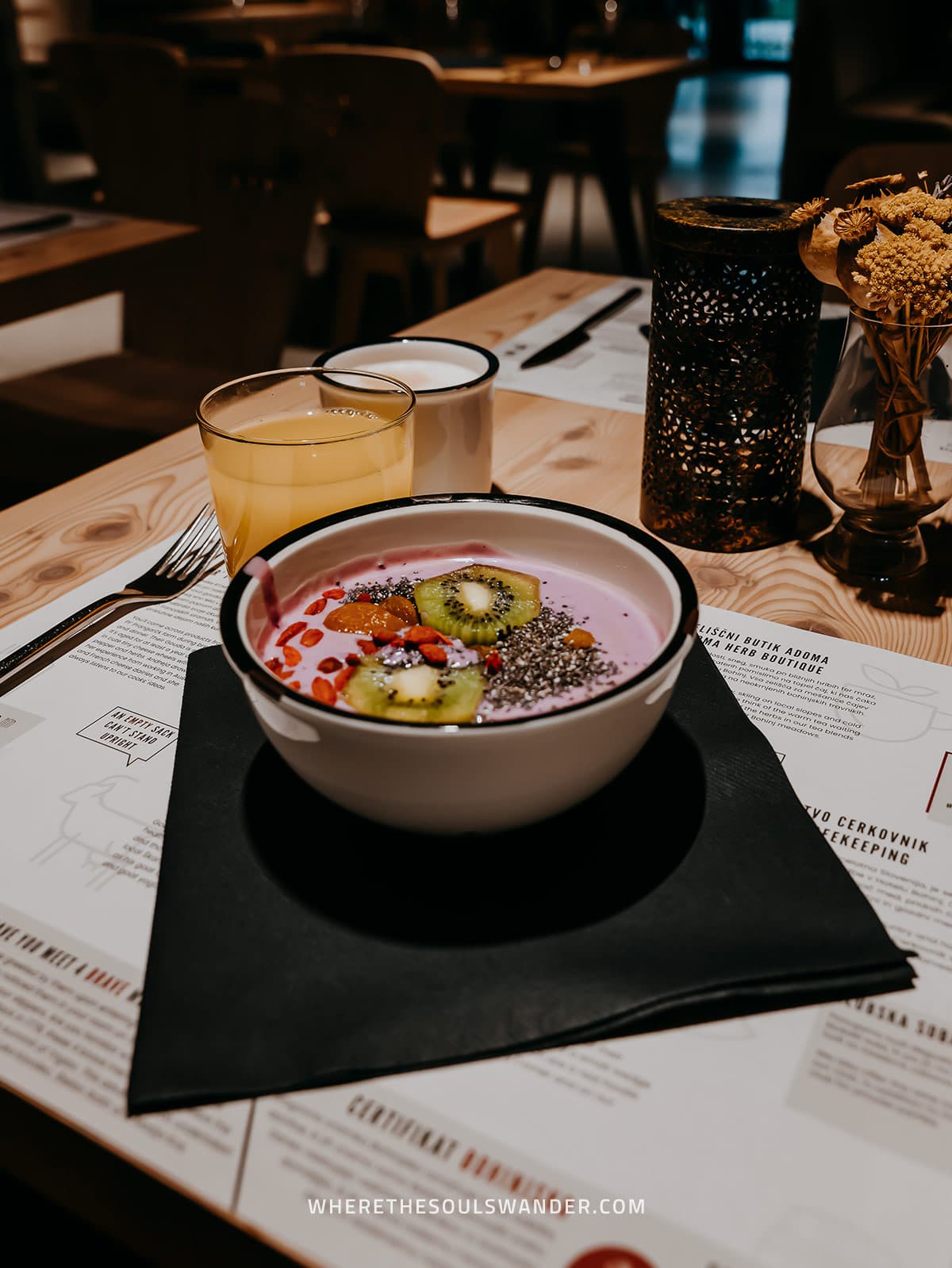
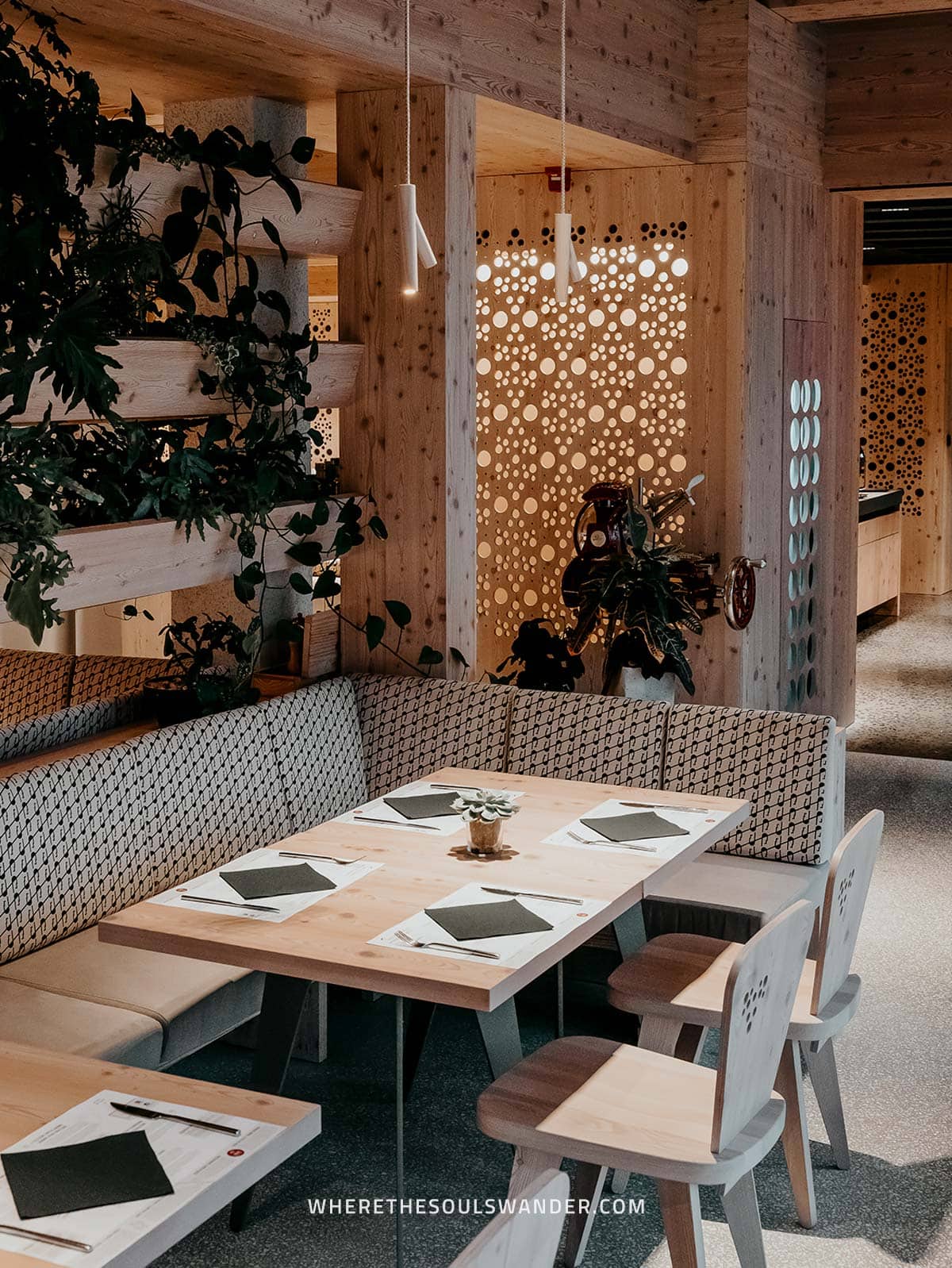
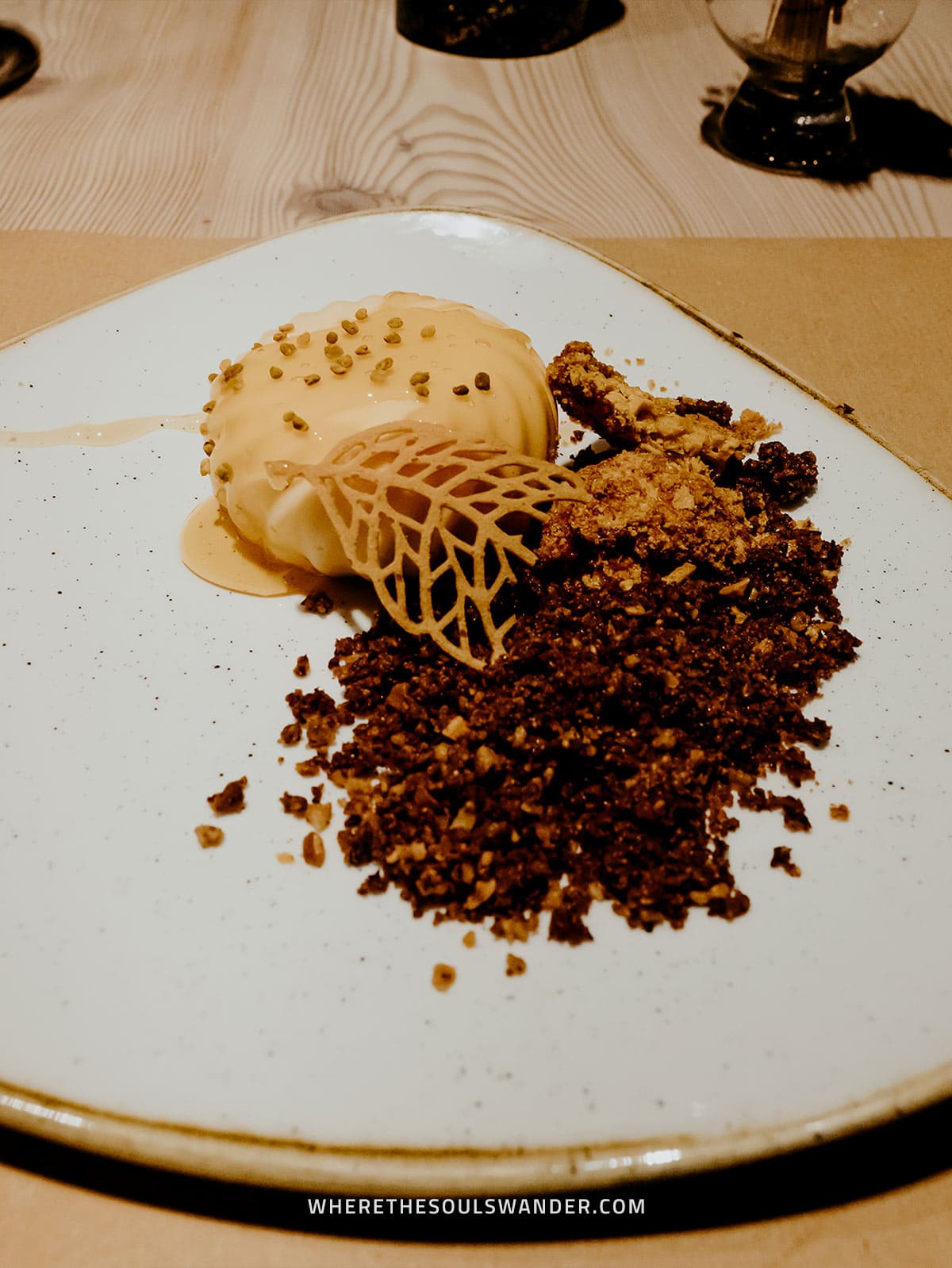
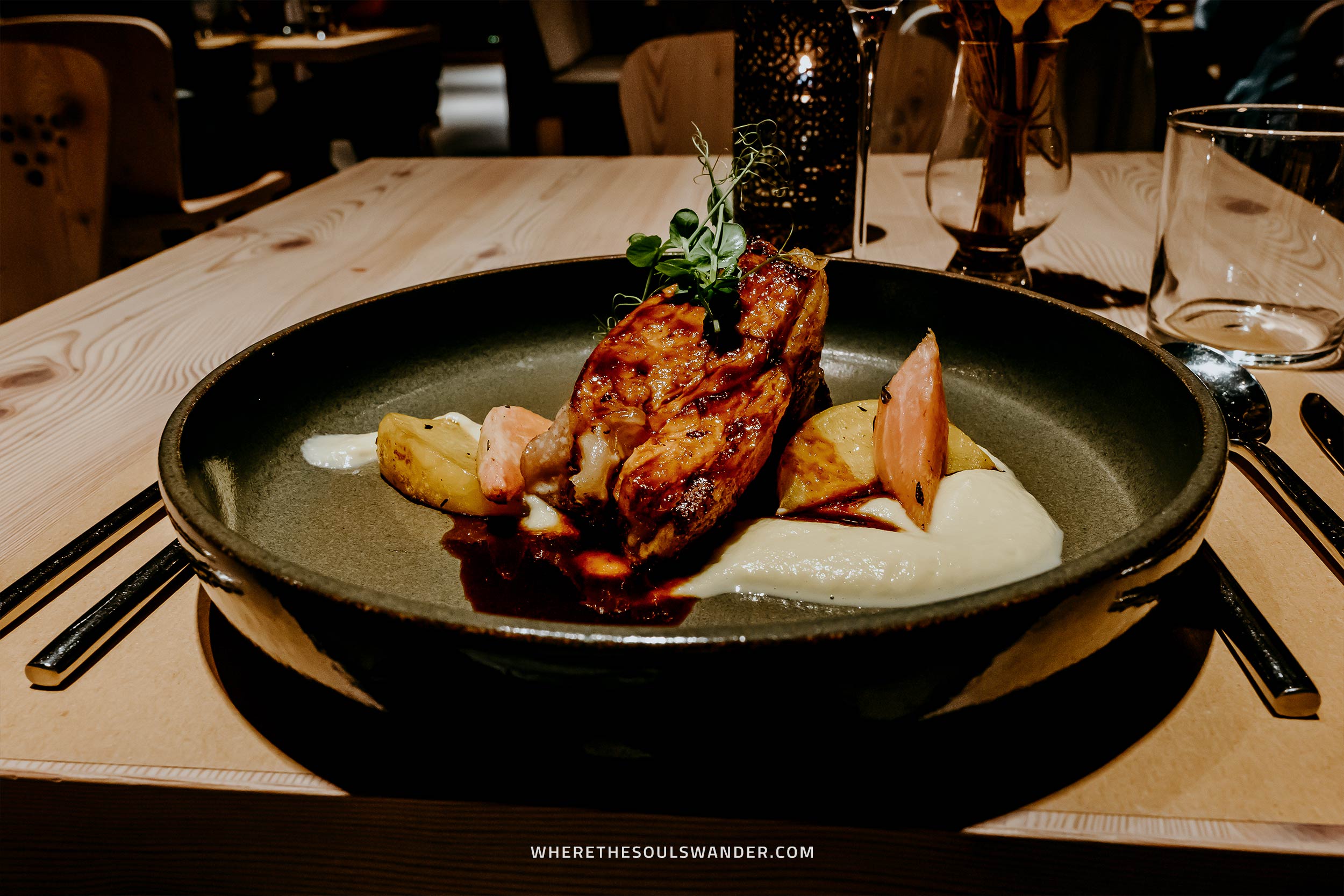
Hotel Bohinj | The Wellness
Tell me, what’s better after an adventurous day in the alpine air than the comfort of having an excellent wellness centre right at your doorstep?
Despite that the wellness is relatively compact, it is actually really pleasant, with a high level of quality clearly visible throughout the various areas.
For a start, you can choose to settle in the Finnish and Turkish sauna, followed by an ice fountain or cold shower to cool yourself down.
After the sauna, make sure you lay down in the distinctive room with a salt wall and feel the negatively charged ions of the salt instantly elevate your overall health and mood.
Now that you’re completely Zen, you can take it easy in the heated outdoor whirlpool, or opt for one of the many massages and facial treatments for further relaxation.
While I’m usually not a huge spa and sauna fanatic, the wellness centre was in fact quite a welcoming addition to my stay at Hotel Bohinj.
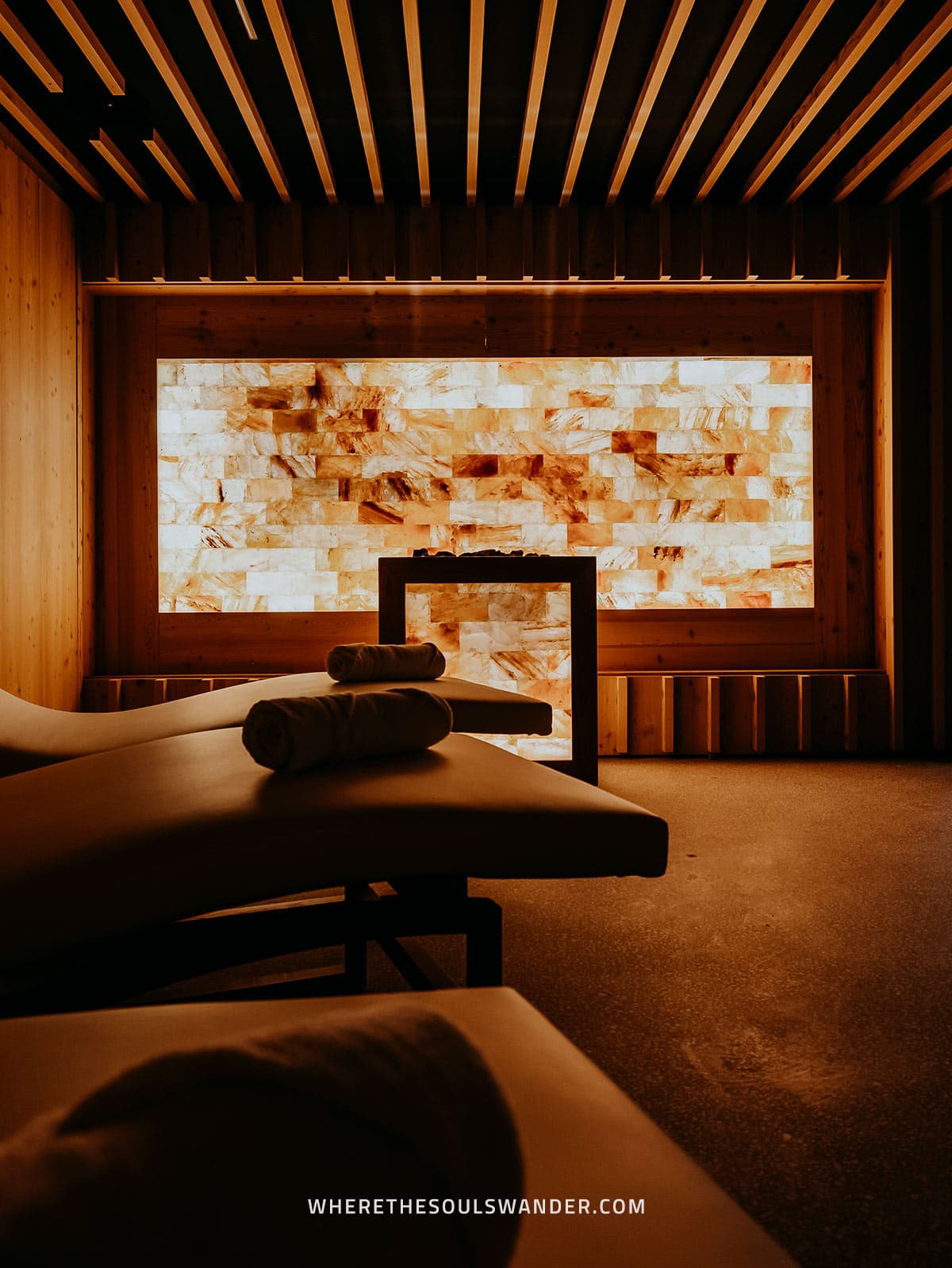
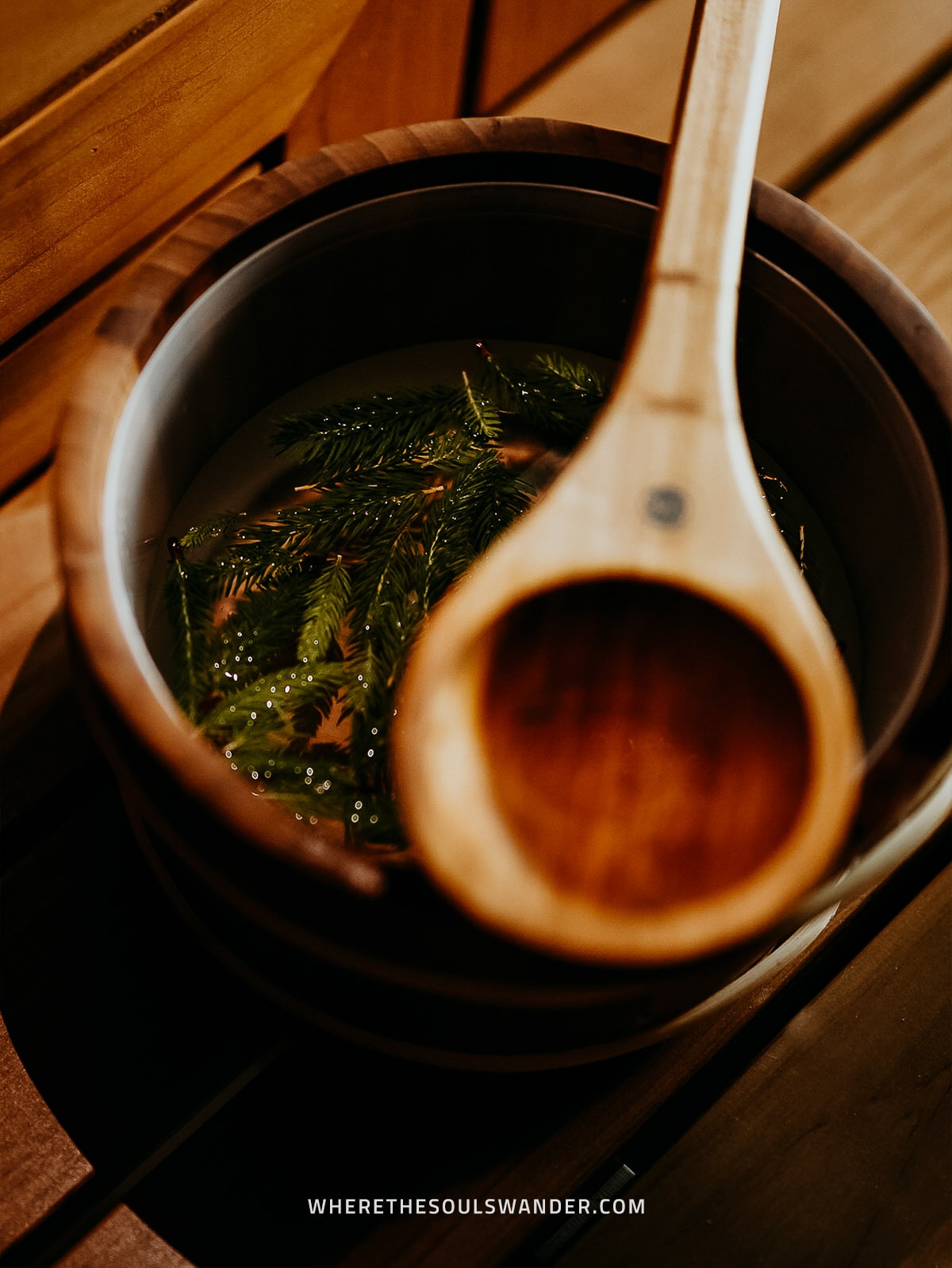
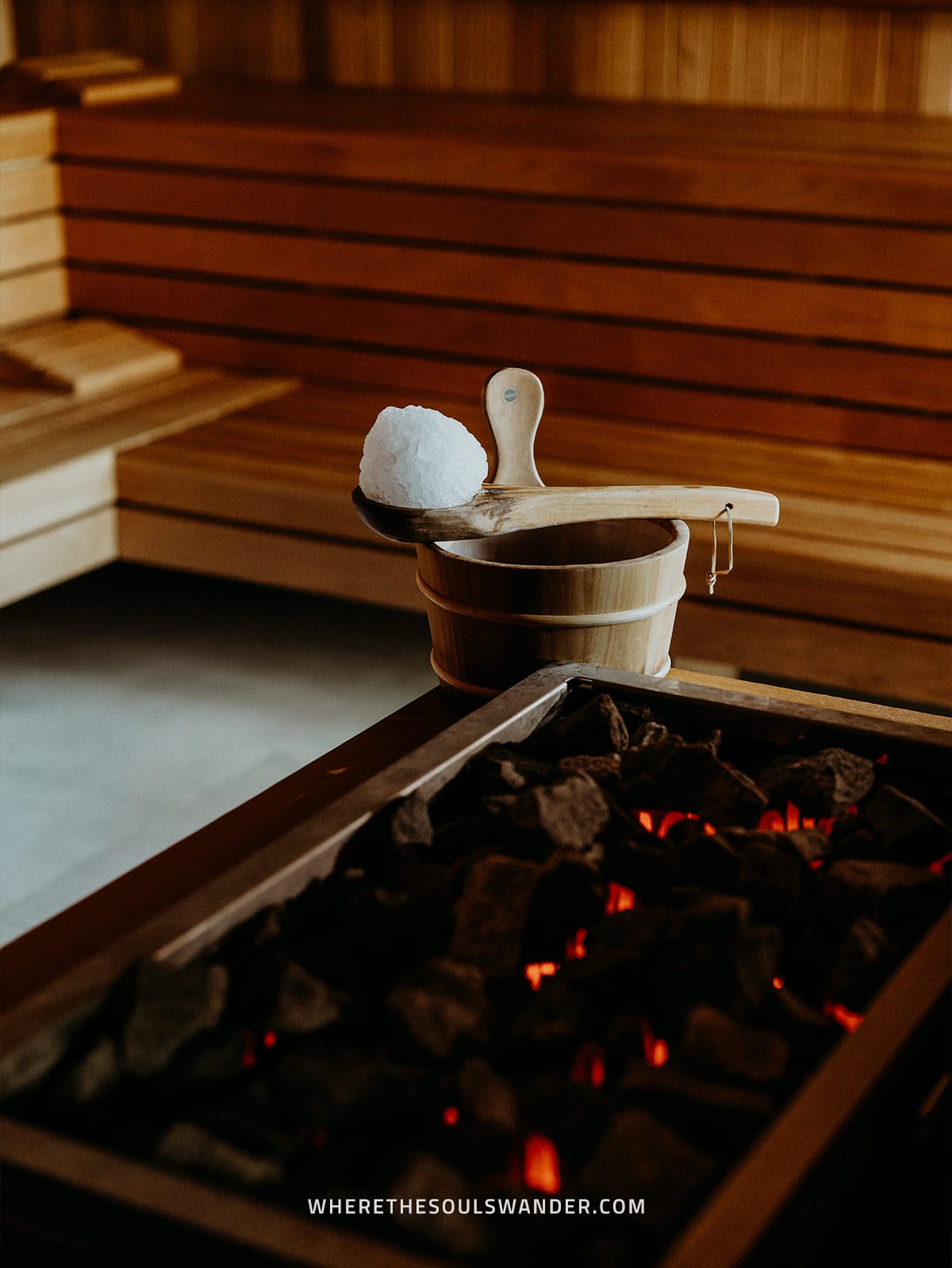
Hotel Bohinj | Events and activities
While there are plenty of things to do in Bohinj and its surrounding, the people at Hotel Bohinj itself will also do everything in their power to ensure that you’ll never have a dull moment during your time there.
The result?
An ever-expanding list of unique and exciting events and activities, both in and outside of the hotel grounds. Think culinary weekends, morning workouts, evenings by the fireplace, wine tastings and movie nights just to name a few.
On top of that, Hotel Bohinj also has a few exhilarating activities outside of the hotel grounds on offer, including zip lining, rafting and paragliding in summer, and ski lessons during the colder winter months.
If you’re keen to see the latest events or wish to read more about the activities, hop over to the official Hotel Bohinj website.
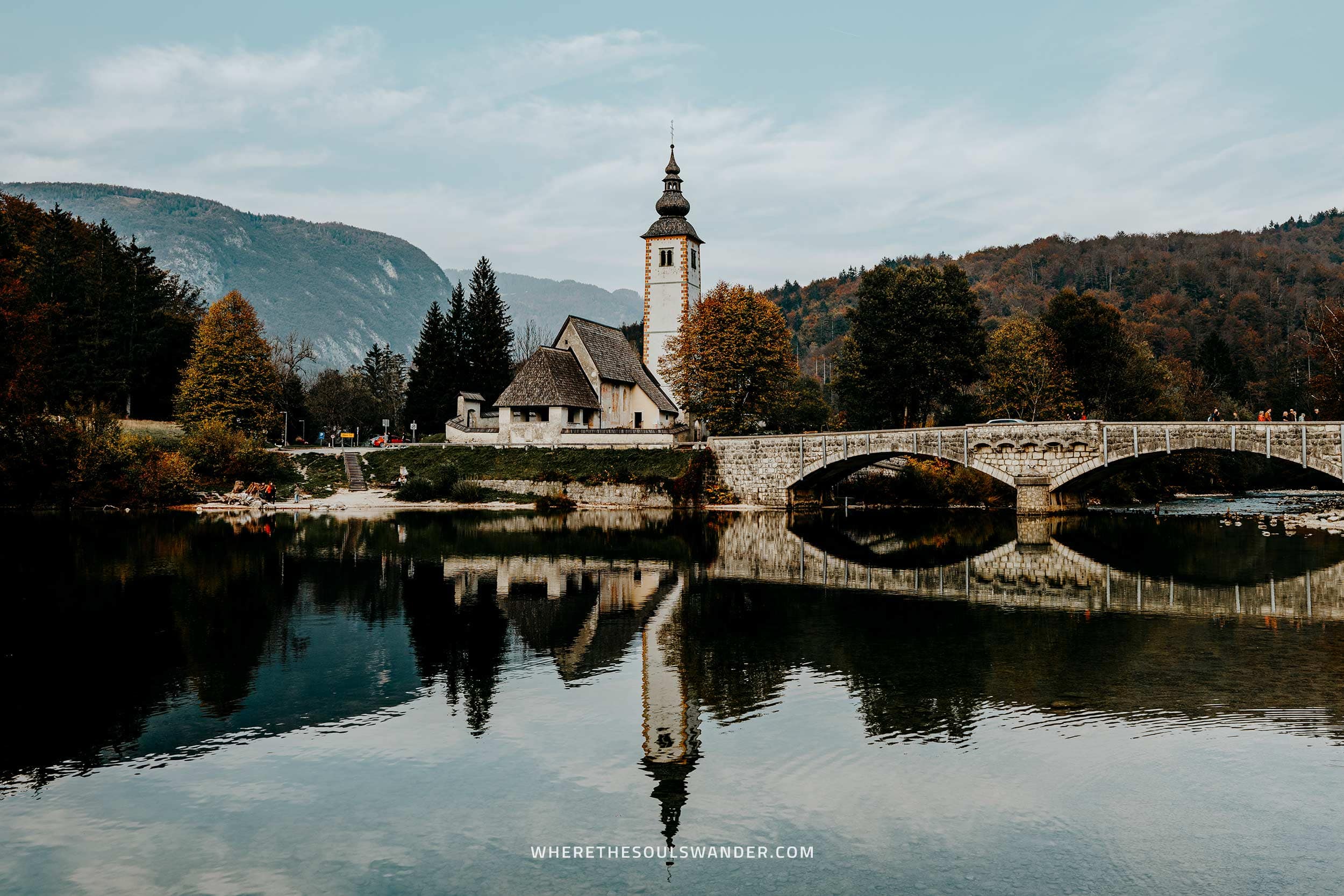
Book your stay at Hotel Bohinj
Hotel Bohinj has several rooms to choose from and these can easily be booked through their website or online at Booking.com.
The rooms include;
The Classic Double Room | €175,- per night
For solo travellers, couples or close friends.
The Comfort Double Room | €219,- per night
Slightly more spacious than the classic.
Family Room | €304,- per night
As the name suggests, a great option for families.
The Superior Suite | €403,- per night
Perfect for those wishing to splurge
However, given the rooms at Hotel Bohinj are in popular demand, I highly recommend booking your room well in advance.
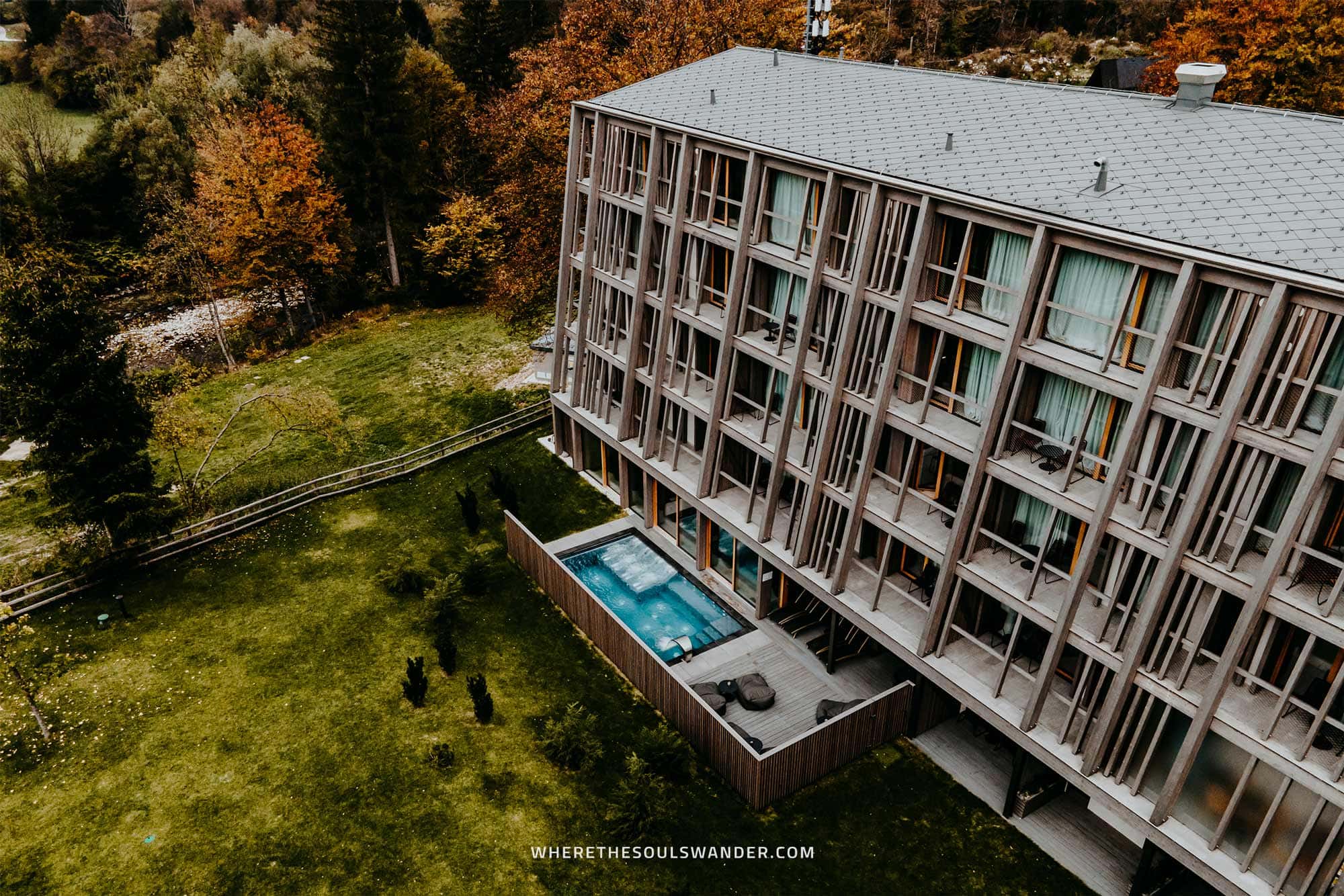
How to get to Bohinj
Despite its position within the remote nature of Triglav National Park, Hotel Bohinj is actually well connected to all the major tourist hotspots in Slovenia.
BY CAR
Since Slovenia is made out of all the stuff that makes a road trip epic, I can’t stress it enough to hire your own car for the duration of your time in the country.
With excellent road conditions, manageable driving distances and sensational scenery throughout, going on a road trip will easily be one of the absolute highlights of your travels through Slovenia.
In terms of distance, Hotel Bohinj is only an hour’s drive away from the Jože Pučnik Airport in Ljubljana – the international airport of Slovenia.
For car rental in Slovenia, I’d highly recommend Rentalcars.com, as they offer great service, additional insurance options, and a great variety of cars to choose from. For prices and availability check here.
Also, Hotel Bohinj has plenty of parking spaces available in front of the property.
BY BUS
For those who prefer a more local experience, Hotel Bohinj is also easily reached by public transportation.
Given Bohinj is well connected to the rest of Slovenia, buses run to Bohinj from several cities, including Kranjska Gora, Bled and Ljubljana.
Bus tickets can be purchased directly from the bus driver and most of the major cities have larger bus stations where you can buy your tickets in advance.
For more information and up-to-date timetables check here.
VIP TRANSFER BY HOTEL BOHINJ
While this doesn’t suit my travel style, Hotel Bohinj also has another option on offer; a VIP transfer with a luxuriant Cadillac Escalade, perfect for those that wish to celebrate a special occasion or simply want to splurge.
Though there are fixed prices for transfers from Brnik and the Ljubljana city centre, the price for other destinations includes €3,50 per kilometre.
The VIP transfer can hold up to 6 passengers and should be arranged upfront with the hotel team. For additional information and inquiries, check here.

Best time to stay at Hotel Bohinj
Given Bohinj is all about nature and outdoor activities, I believe that it’s safe to say that you could easily plan your trip for all four seasons.
Of course, the most popular period to visit Slovenia is during the peak summer months of June till September, when the days are long and the temperatures perfect for hiking and sightseeing.
But that doesn’t mean that it isn’t equally as beautiful during the other seasons.
I stayed at Hotel Bohinj in early October and had excellent autumn weather, which gave a unique feel to my overall experience. It is in fact an epic time of year for photographers like myself.
While I absolutely believe that autumn is a great time to explore Slovenia, I do want to mention one minor downside; the days are significantly shorter, which limits your time outside – luckily there are plenty of cool experiences at Hotel Bohinj itself.
Alternatively, you could also choose to spend winter in Slovenia, which is said to be absolutely magical – for that reason, I already planned to return in the upcoming winter.
That being said, if you’re looking to avoid the crowds that come with Europe’s extremely popular summer season, you might want to opt for a trip in the offseason instead.
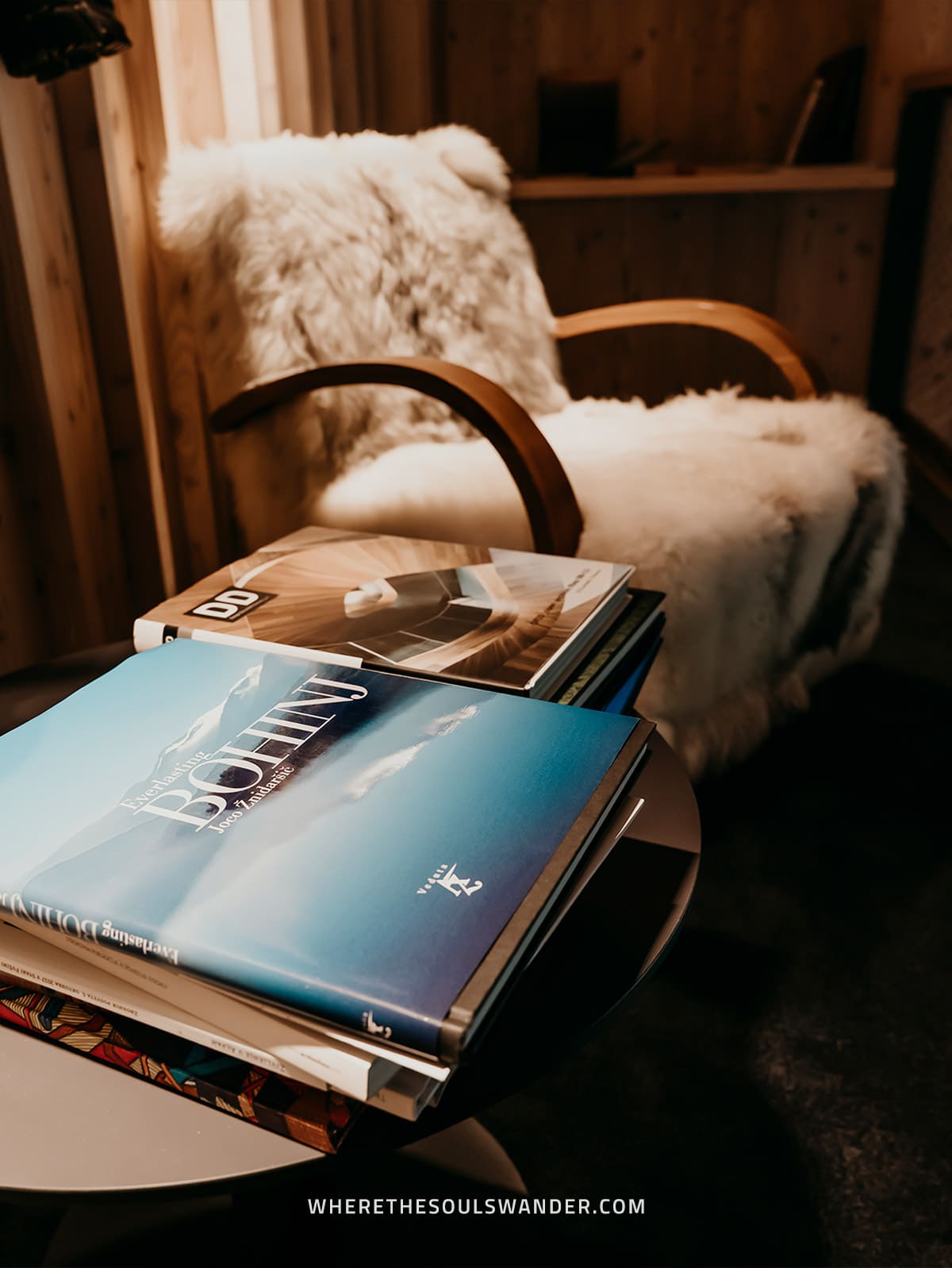
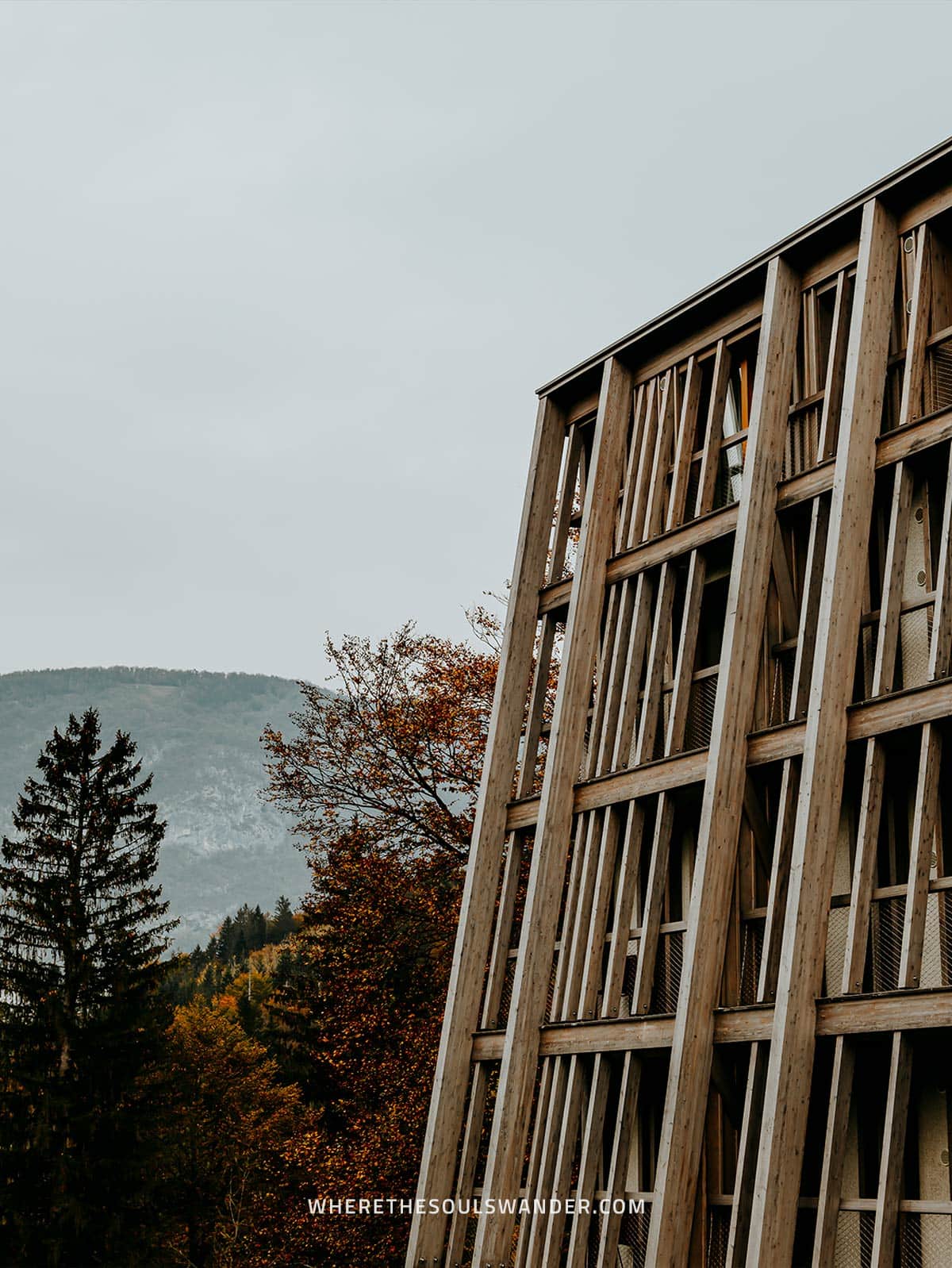
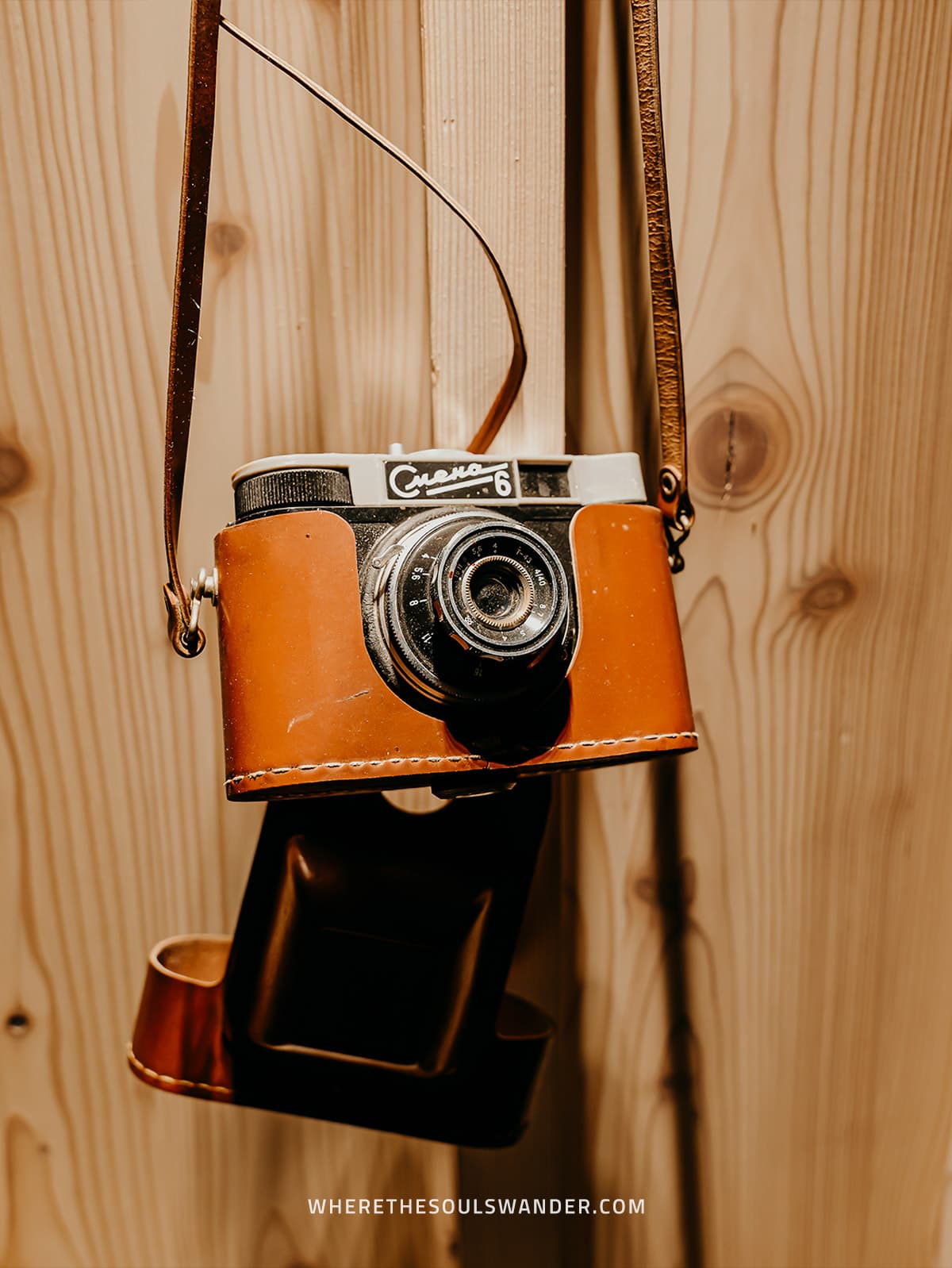
What to do in Bohinj
The wonderful thing about staying at Hotel Bohinj is that it’s the perfect base from which to explore Bohinj and its stunningly beautiful surroundings.
From impressive viewpoints to gushing waterfalls, pristine alpine meadows to activities on the lake itself, there’s truly no shortage of unforgettable things to see and do in Bohinj.
If you’re looking for unique things to do in Bohinj, make sure you go and see my favourite things to do in Bohinj (coming soon) here.
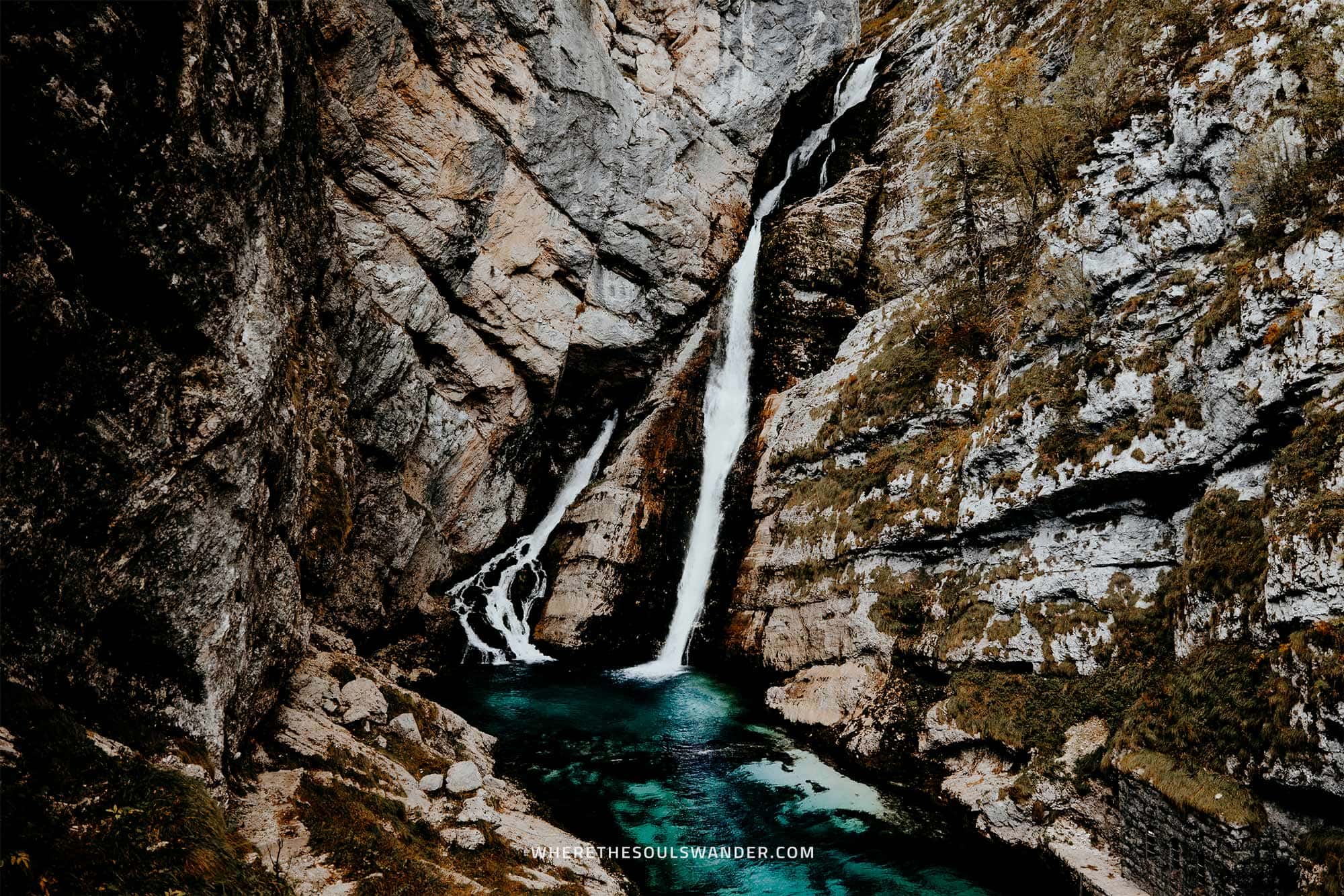
Stay safe in Slovenia | Travel insurance
Since Slovenia has plenty of adventurous activities on offer, I advise everyone to sort out good travel insurance before setting out on their own adventure.
While I believe that it’s unlikely to experience any troubles when following the advice in this guide, something unfortunate can happen at any time, whether it’s an injury, a stolen camera, or an accident on the road.
For travel insurance, I use Heymondo, as they offer full covid-19 coverage, as well as a handy app with 24-hour medical assistance. Make sure you check it out – readers of WTSW receive 5% off any insurance policy too. Additionally, I also recommend World Nomads.


